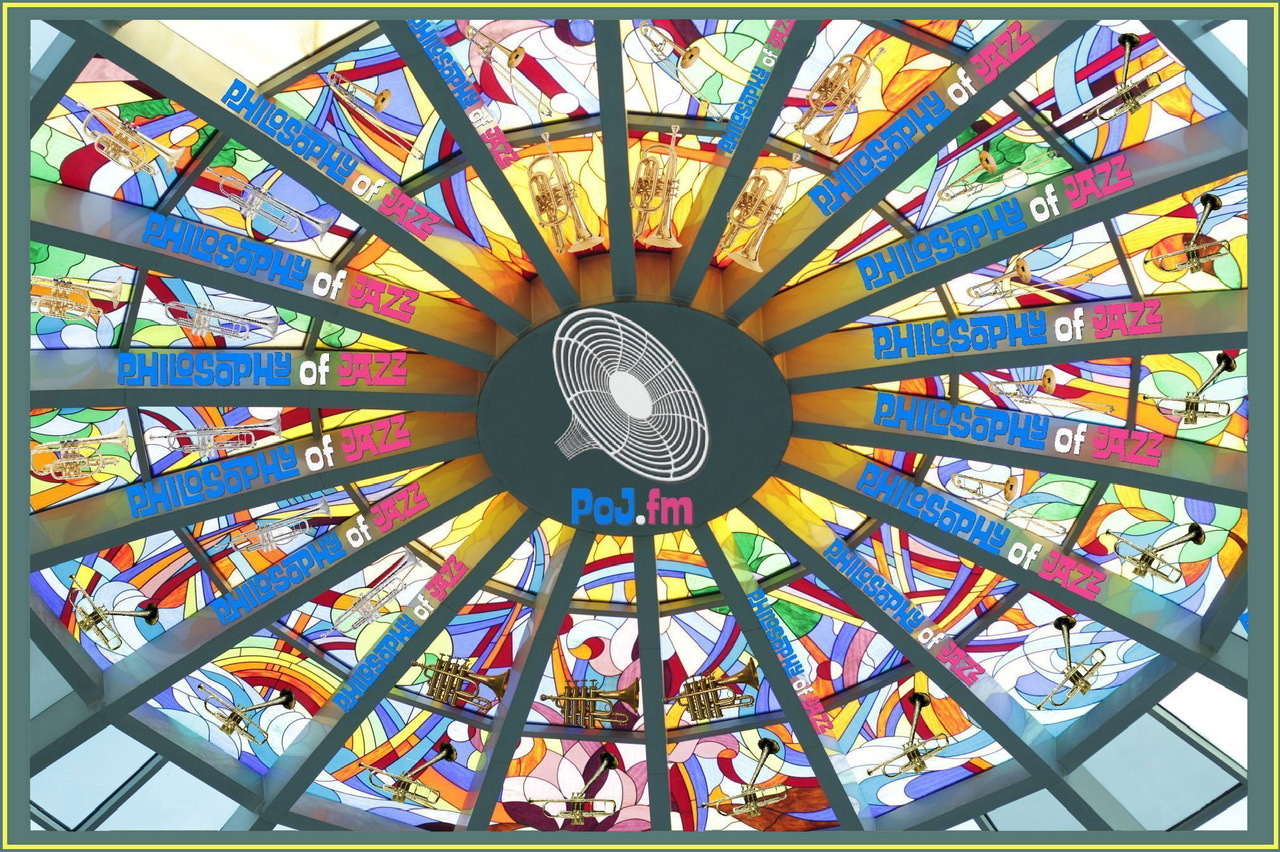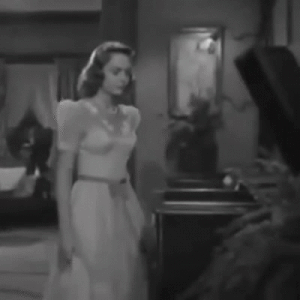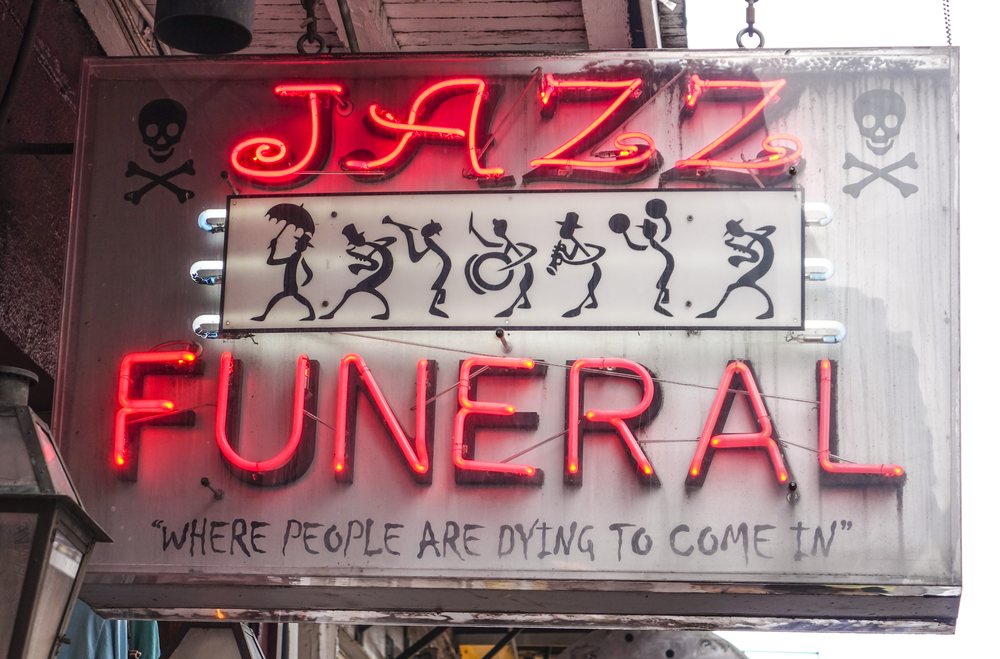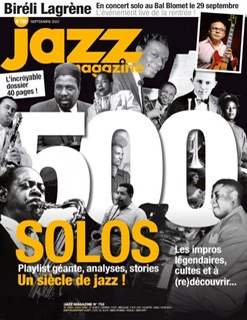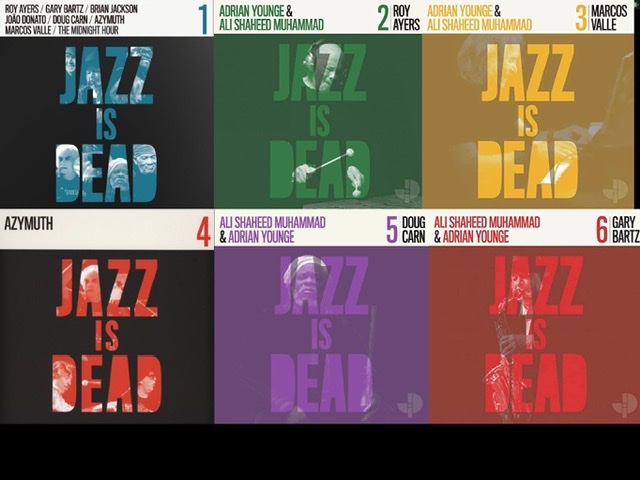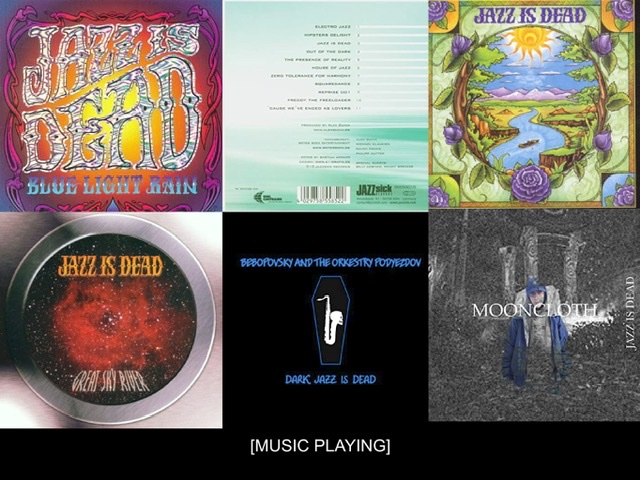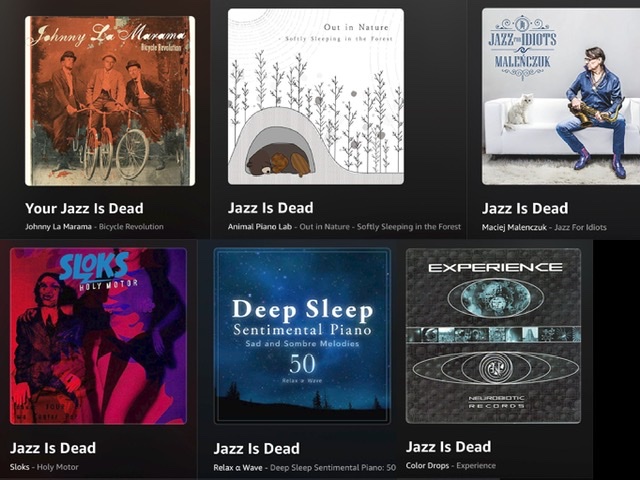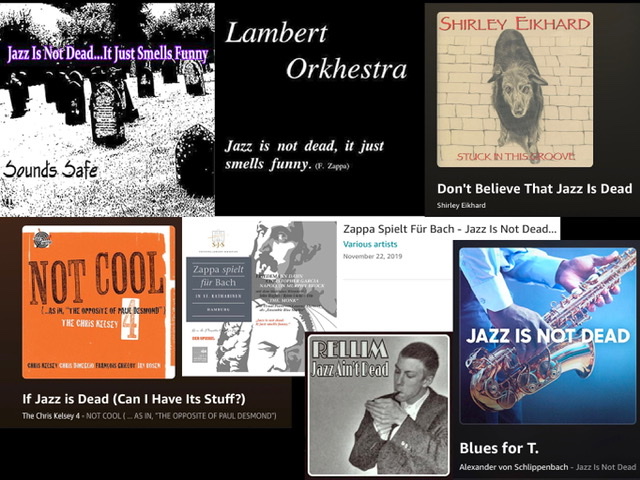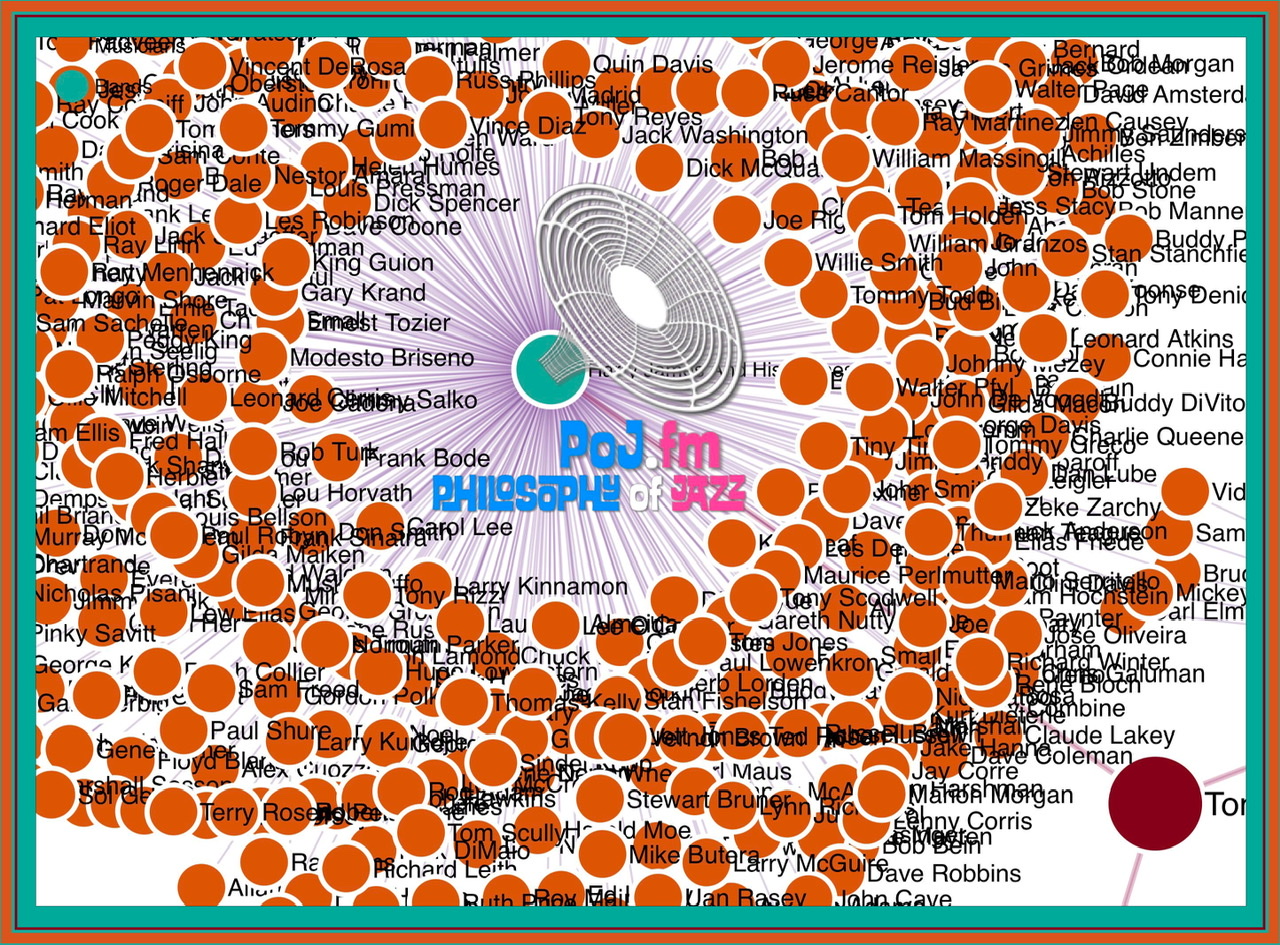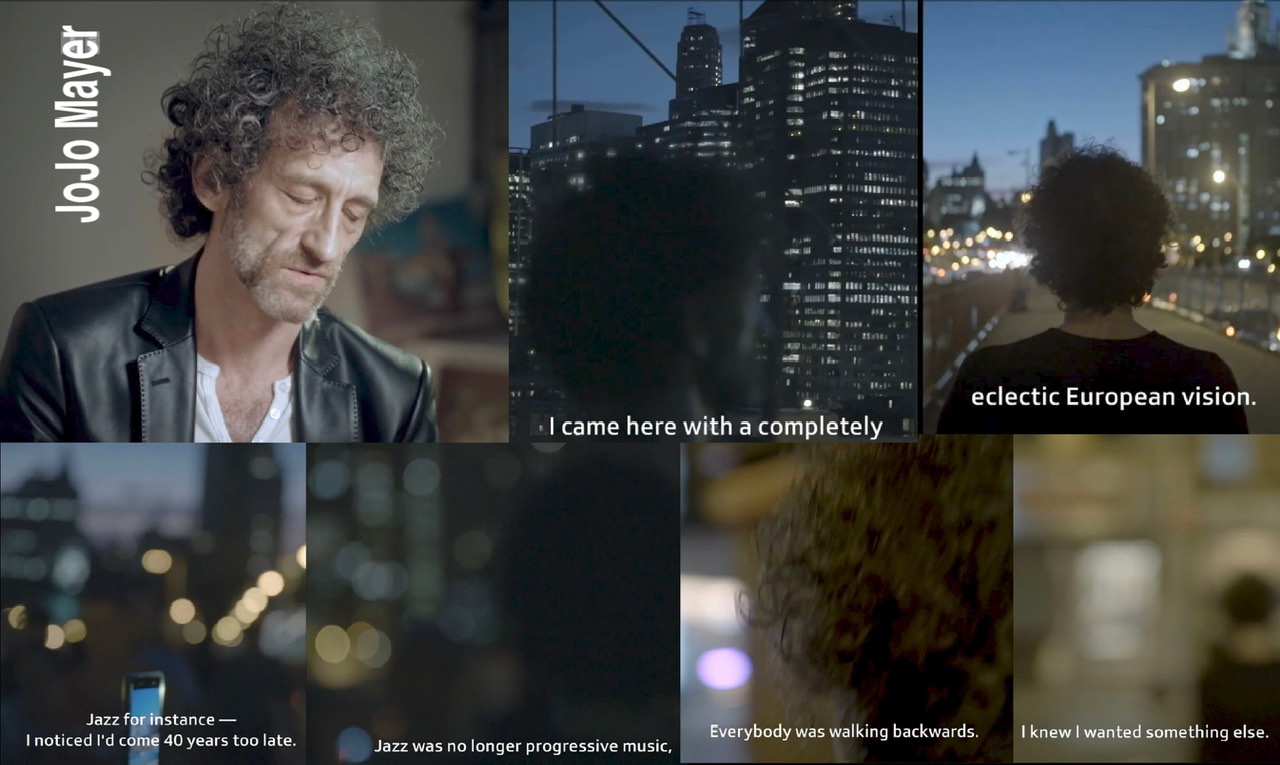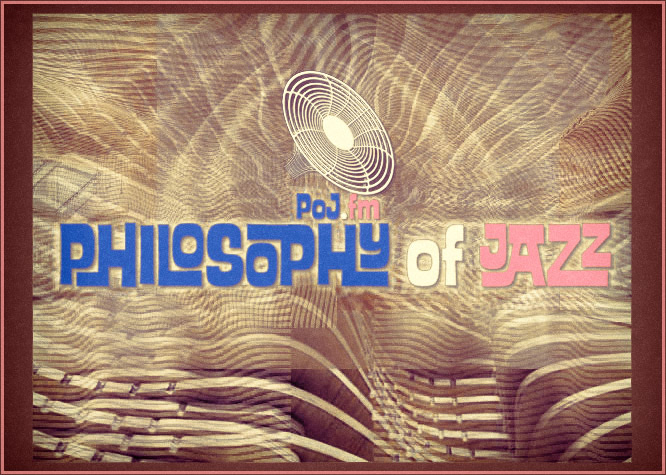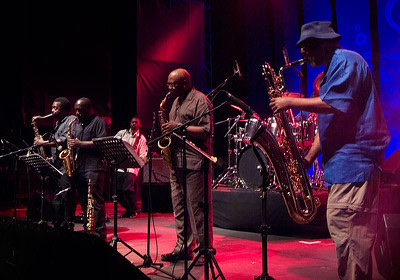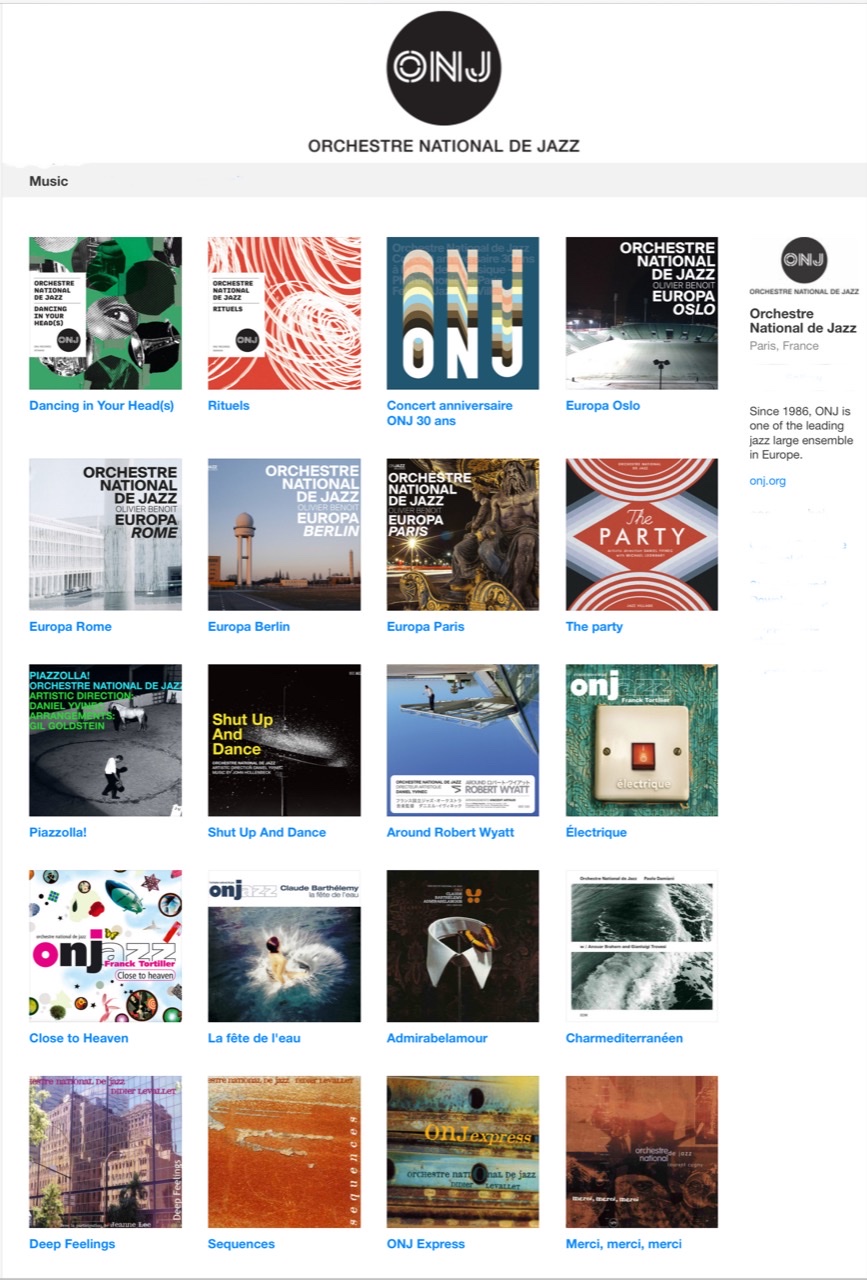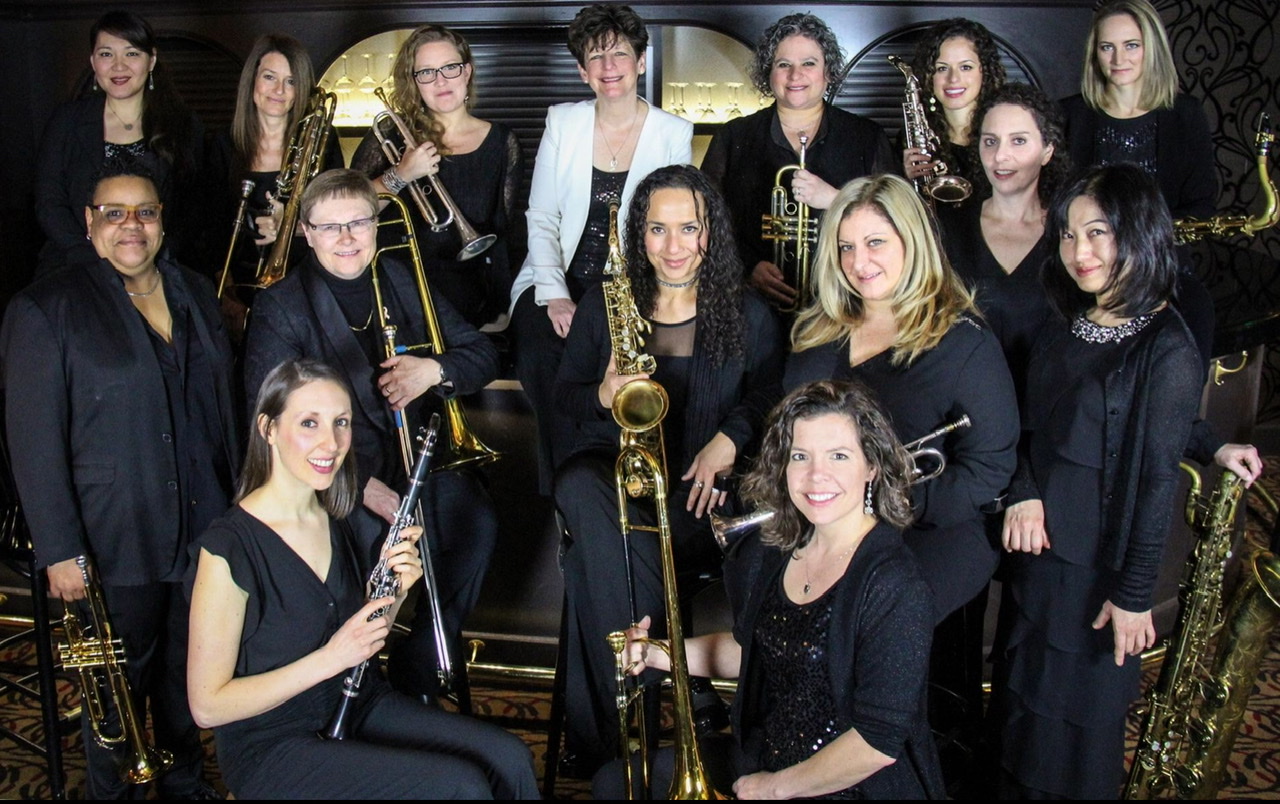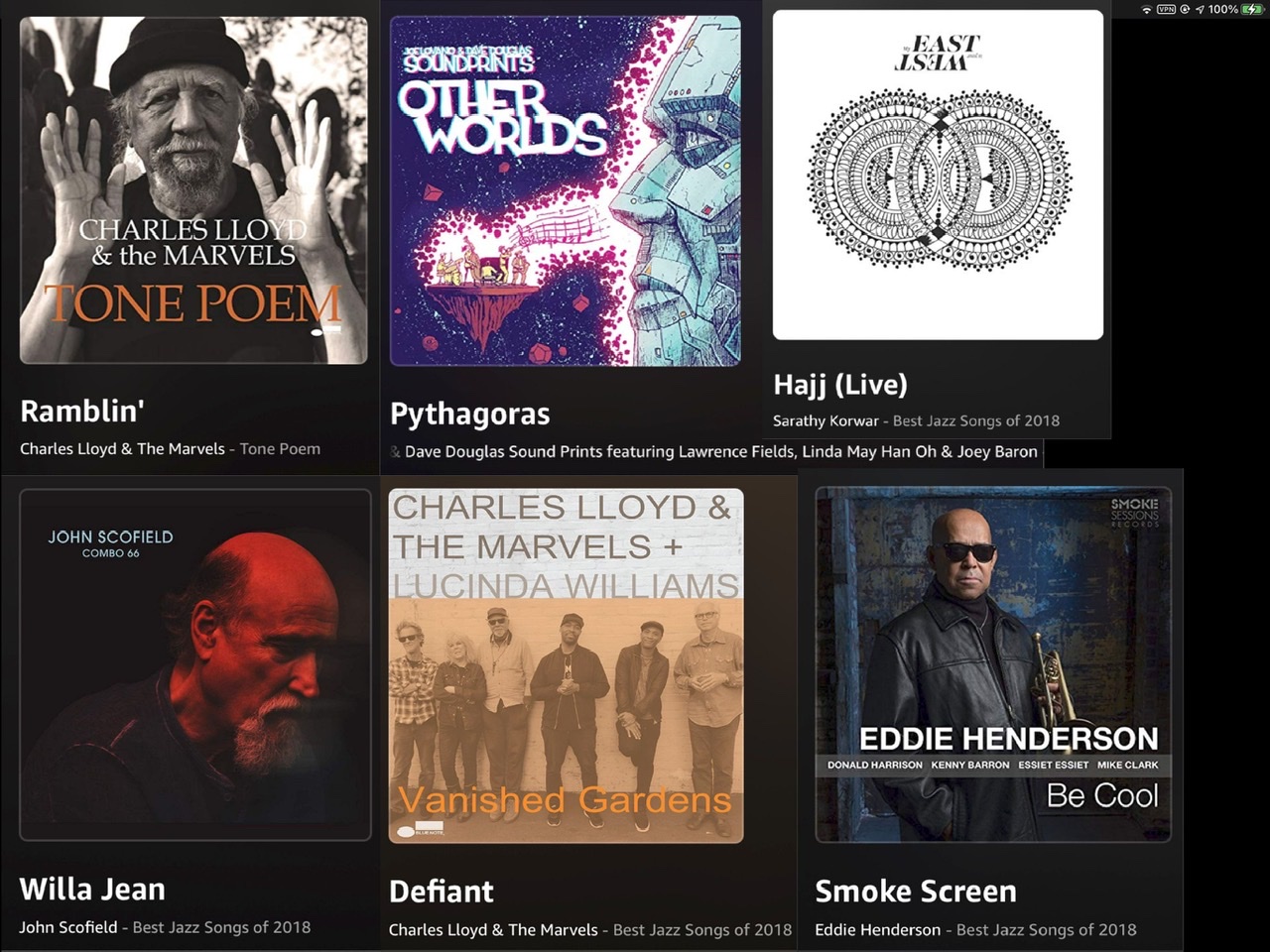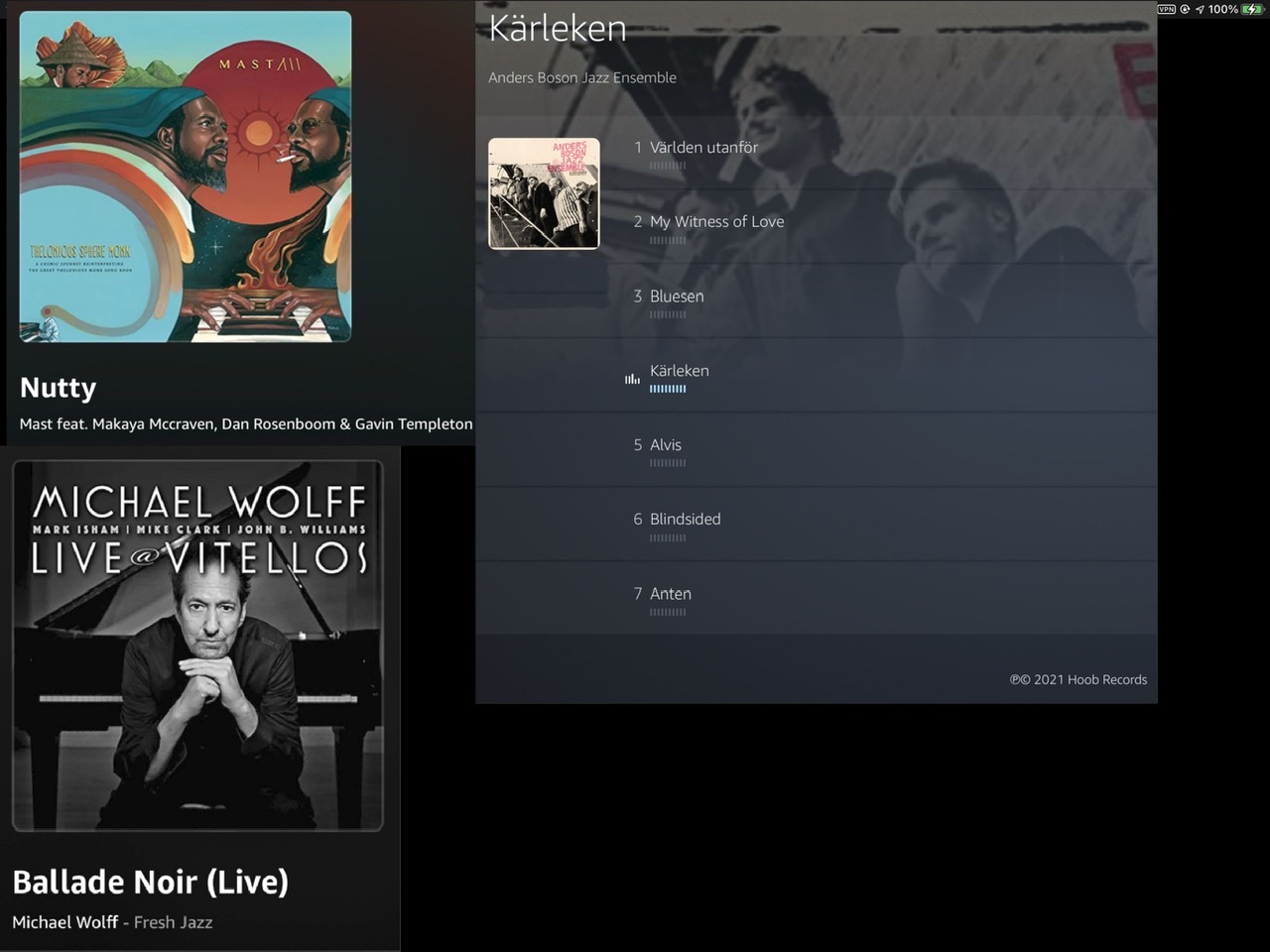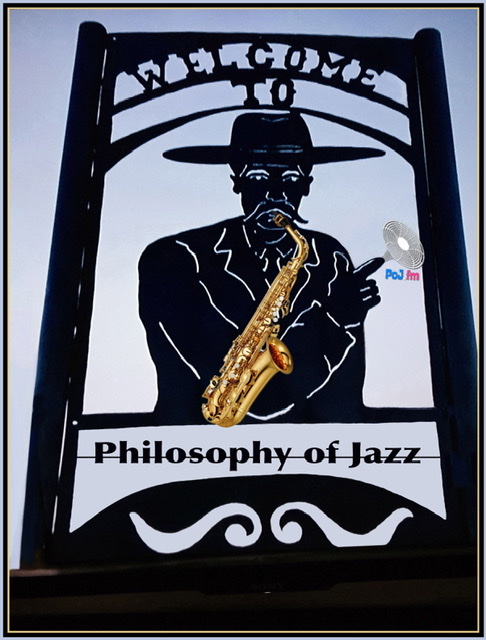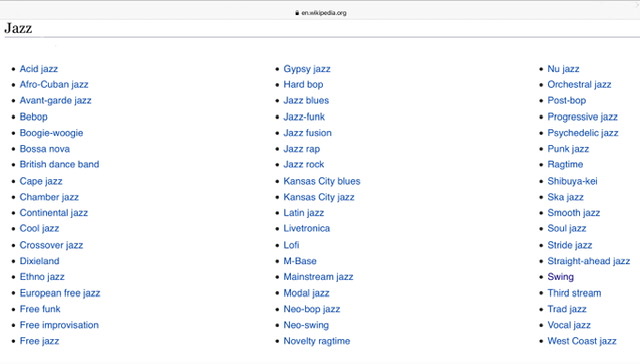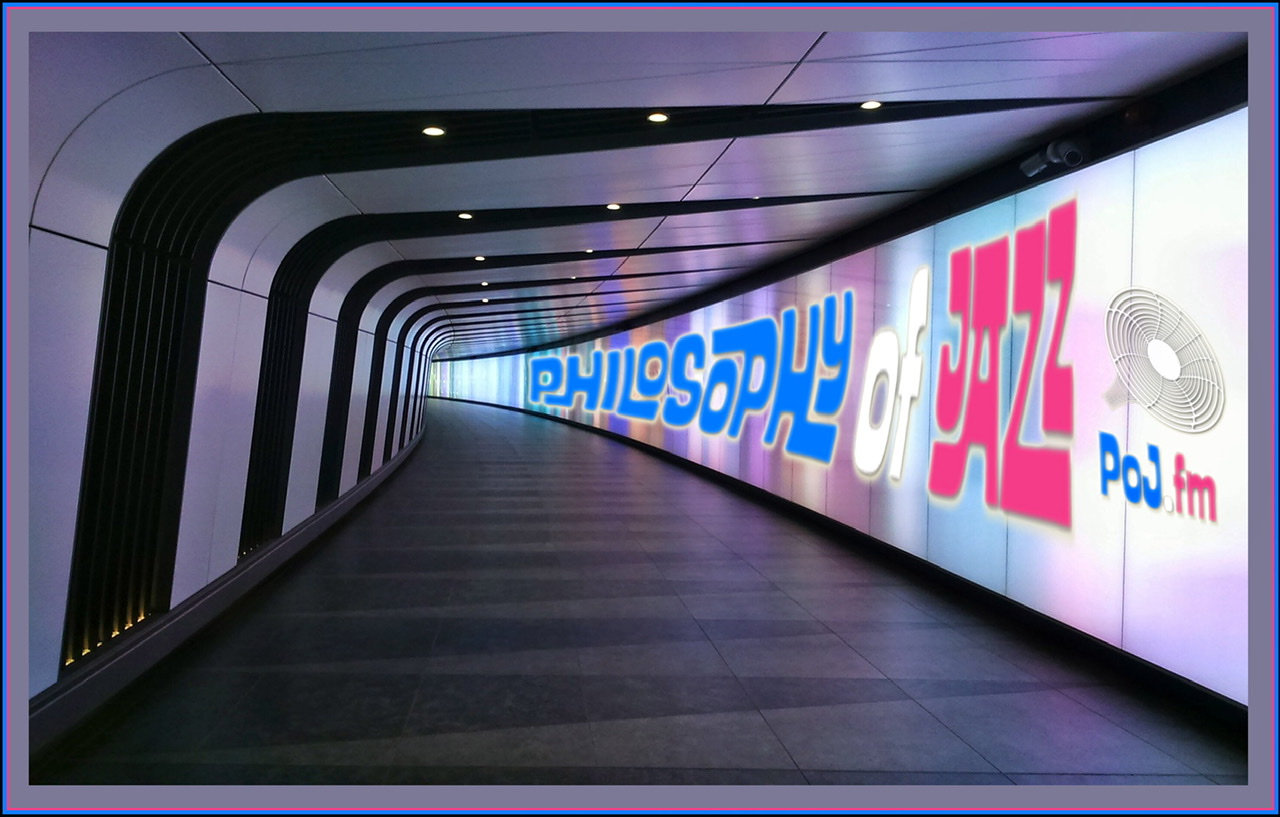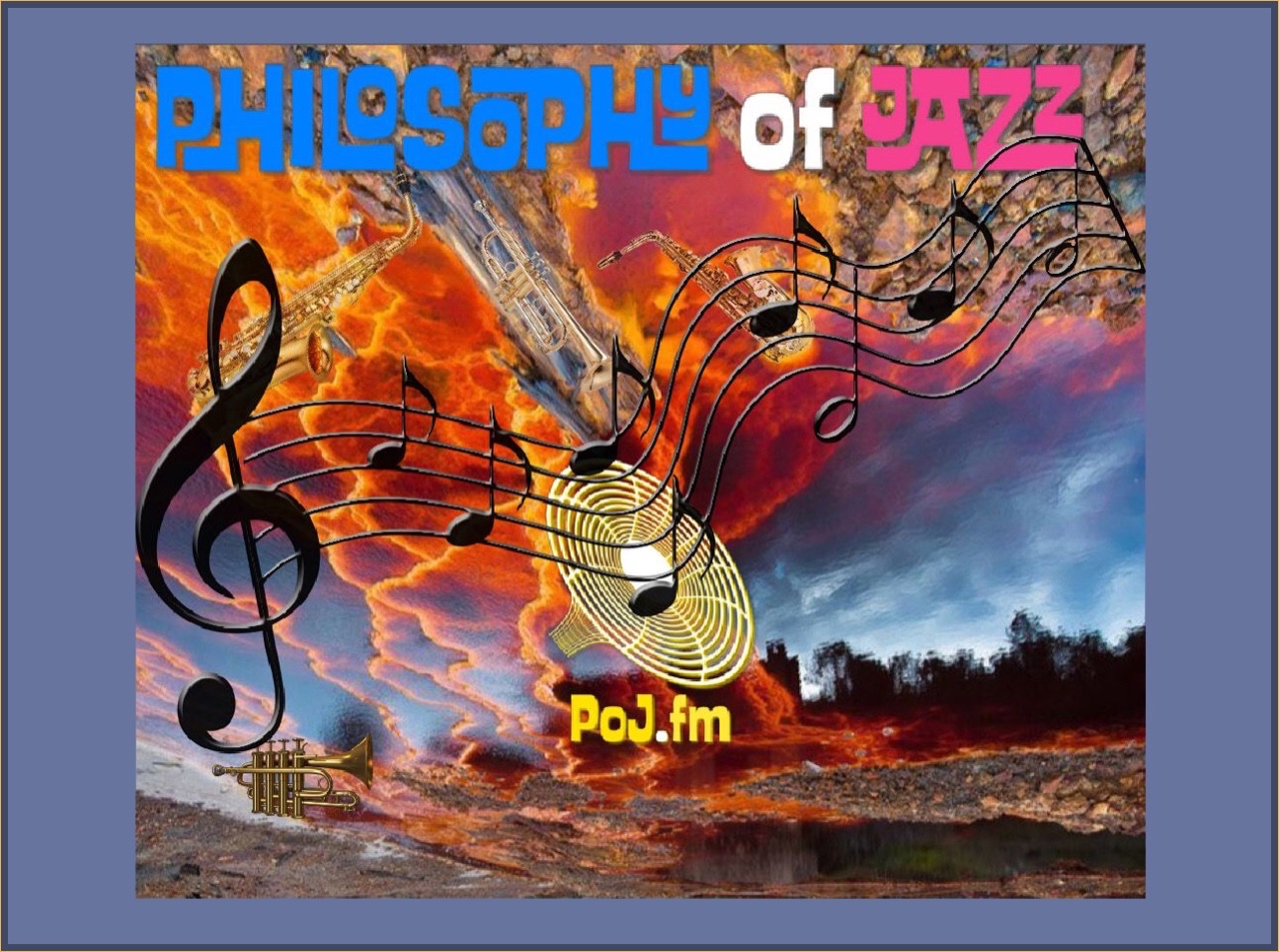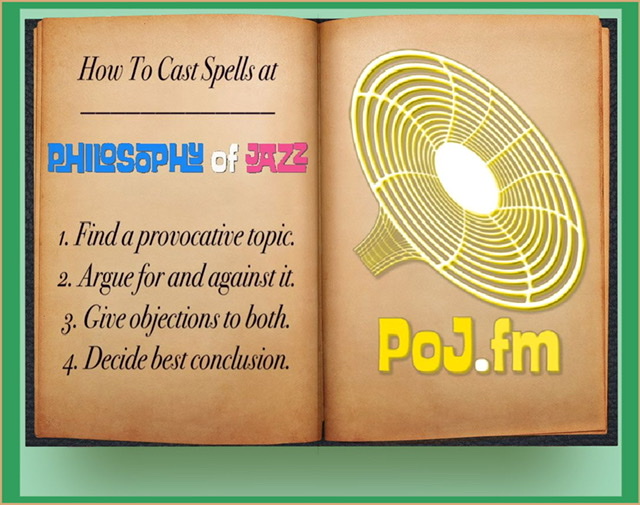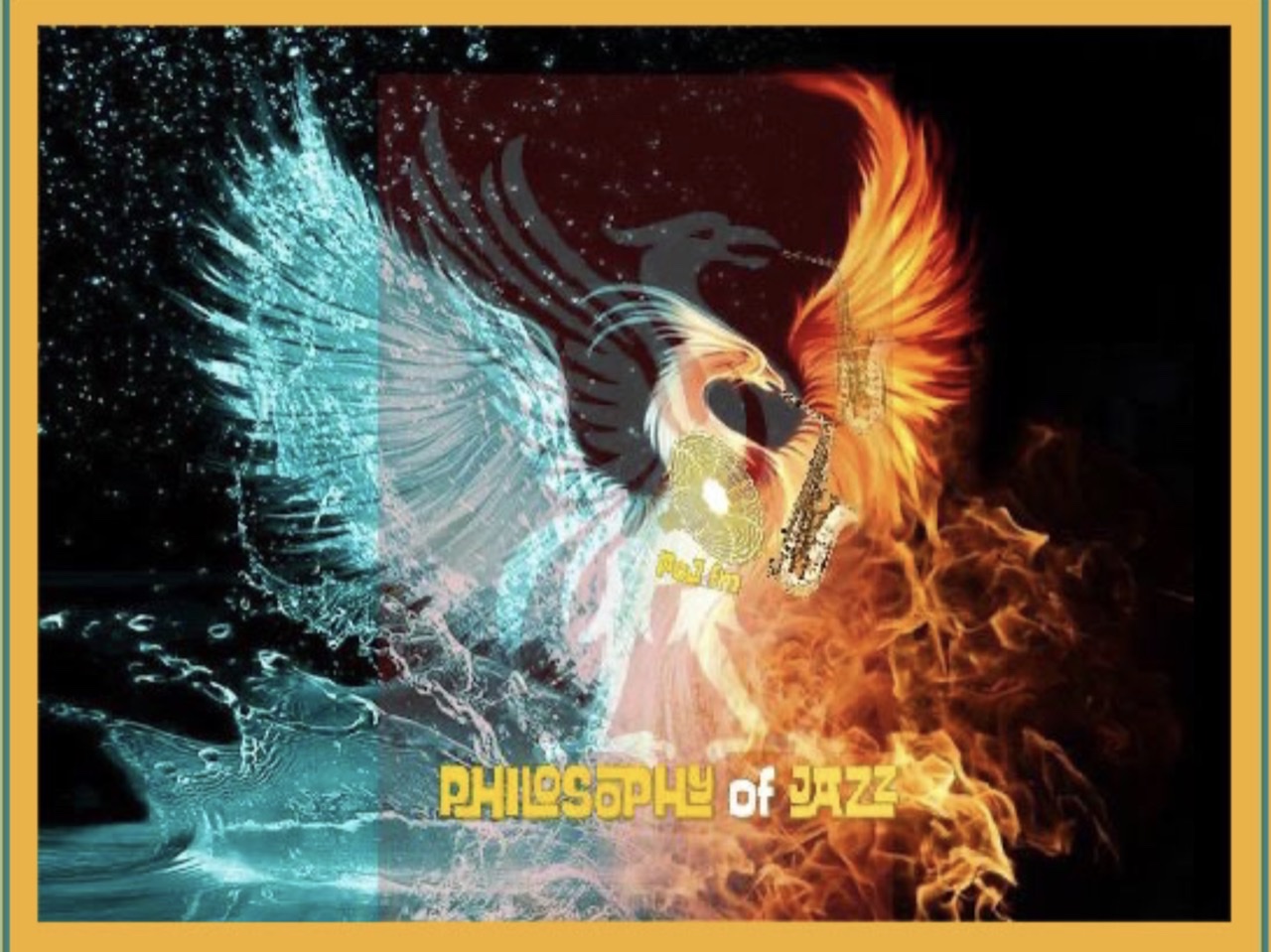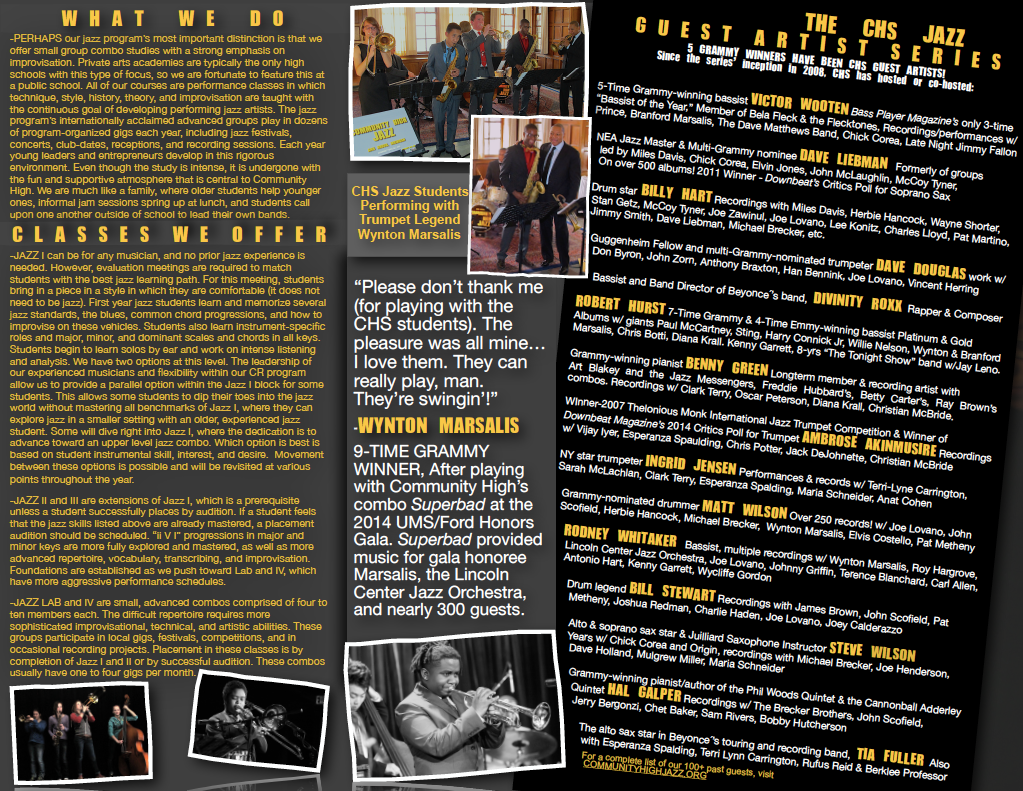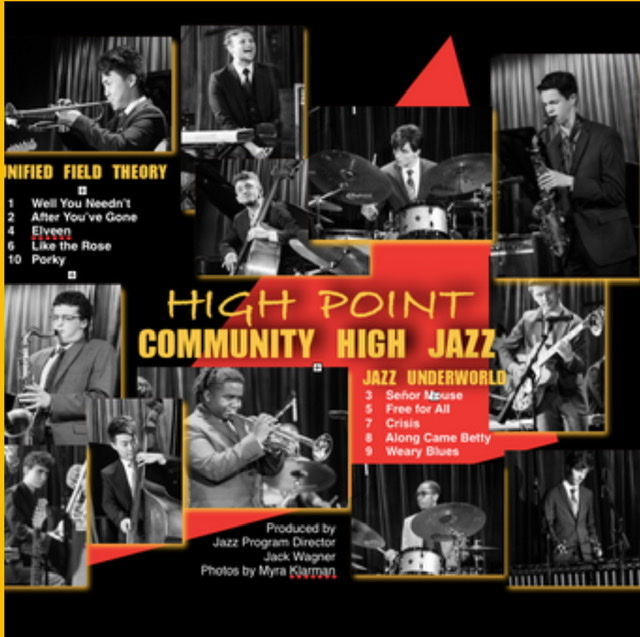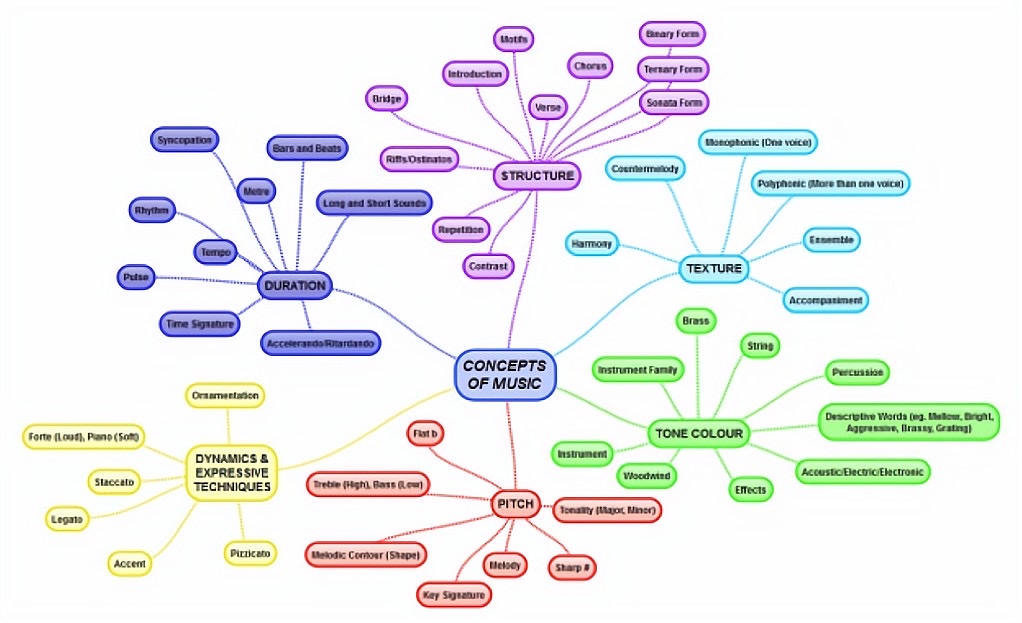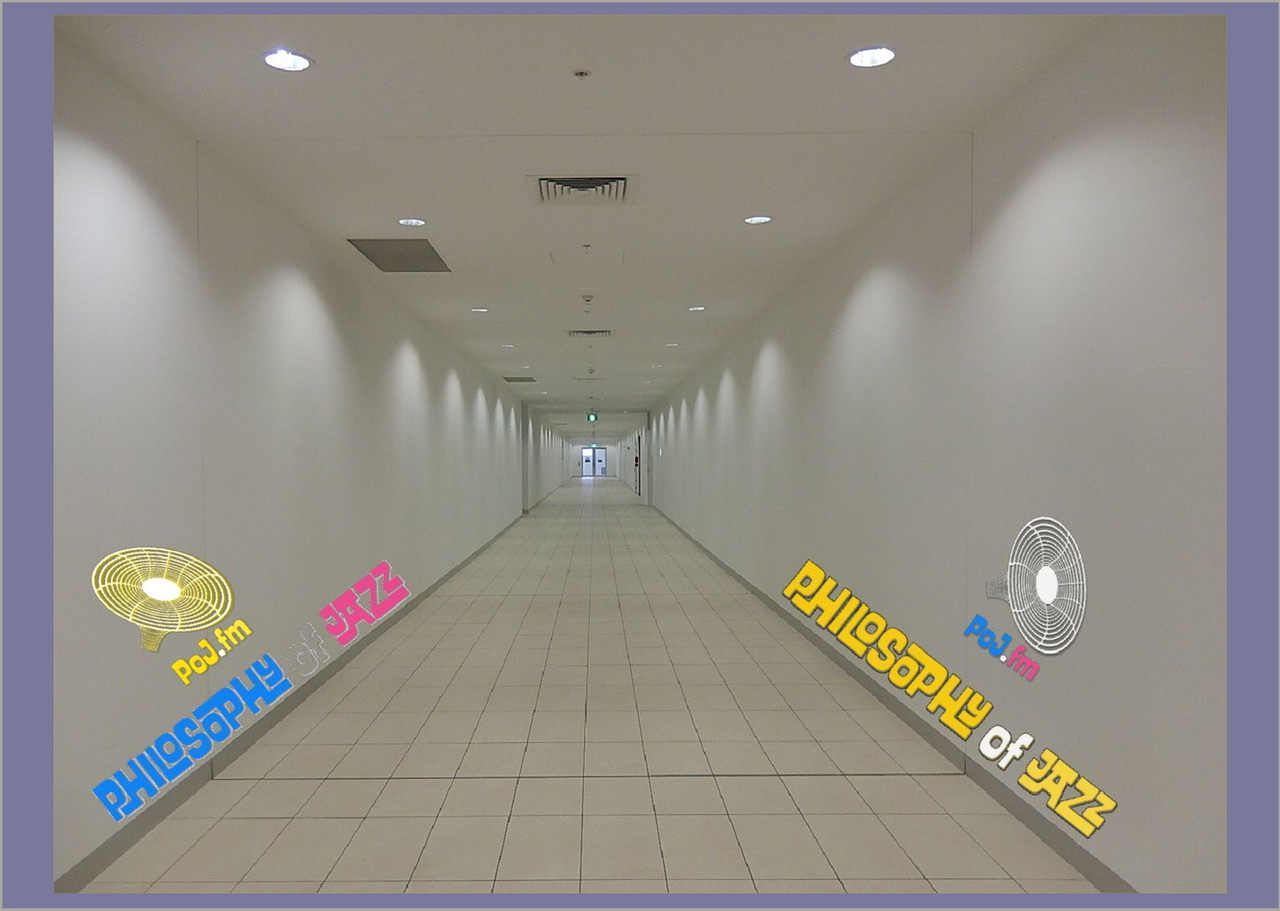EmT9. Is jazz dead?
Contents
- 1 Discussion
- 2 Introduction
- 3 Authors assess the death of jazz
- 4 Jeff Winbush's six reasons for jazz's decline
- 5 Print or online jazz magazines
- 6 Active jazz clubs
- 7 Active jazz festivals
- 8 Jazz Appreciation Month (JAM) and International jazz day
- 8.1 Jazz around the world
- 8.2 Response to (Winbush 1) on the current status of jazz
- 8.3 Response to (Winbush 2) on the fragmentation of jazz
- 8.4 Response to (Winbush 3) on hearing jazz
- 8.5 Response to (Winbush 4) on the state of jazz education
- 8.6 Response to (Winbush 5) on America's ignorance of jazz
- 8.7 Response to (Winbush 6) on jazz being a snob musical genre
- 9 Musician's reveal interest in topic of jazz's death
- 10 Evaluating why jazz is dead could be true
- 11 Reasons jazz died in 1959
- 12 Reasons jazz did NOT die in 1959
- 13 Critique of Nicholas Payton's remarks on the death of jazz
- 14 Evaluating why jazz is dead is false
- 14.1 Styles of music
- 14.2 Seven problems with jazz being dead
- 14.3 What could count as the death of jazz?
- 15 Definitions for dead
- 16 Jazz is not dead yet
- 17 Can jazz die?
- 18 Summary of Evaluations
- 19 Internet Resources on jazz is dead
- 20 NOTES
Discussion[edit]
Introduction[edit]
Overview of "Is jazz dead?"
NOTE: Click on any of the blue text to hyperlink to that section of this post.The question of whether jazz can die is explored. Positive responses are given to Jeff Winbush's six reasons for jazz's decline. Numerous authors proclaim or deny the death of jazz. Musician's reveal their interests in the question of whether or not jazz is dead. An evaluation of why jazz is dead could be true is followed by reasons jazz could have died in 1959 and then reasons why jazz did not die in 1959 with examples of great jazz from America for every decade from the 1960s to the present. Next, a presentation and critique of Nicholas Payton's remarks on the death of jazz precedes Payton later walking back virtually all of his negative claims against jazz. Further reasons are provided explaining why it is false that jazz is dead considering the numerous styles of music that remain jazz. Seven problems are proposed for the claim that jazz is dead. The question of what could count as the death of jazz is supplied with one author arguing that jazz is mostly only dead on the radio and television. The many different concepts of death are defined with their possible relationships to jazz's death examined. Difficulties with definitions for being alive are given with examples of entities that are alive without being biological organisms. Definitions for dead show that jazz is not dead yet with examples of live and recorded streaming jazz performances done in 2020. Next, what is learned in a jazz instructional setting? Reasons for and against the possibility of the death of jazz with an evaluation and critique of the JCNAD (jazz cannot be alive or dead) argument and the MCND (music cannot die) argument. Reasons are given for how jazz can die. Lastly, internet resources arguing both for and against the death of jazz are listed.
Authors assess the death of jazz[edit]
“Others argued that jazz [in 1926], having reached its peak, was simply not making any new contributions to music. André Messager, the composer who had previously startled colleagues by announcing his adoration of jazz, soon noted, “It seems to me that if ‘jazz’ is not yet old-fashioned, it is not progressing.”[1] “Jazz, argued another composer in the mid-1930s, “from the point of view of orchestral arrangements has not made much progress for twenty years!”[2] (bold and bold italic not in original)
In "Jazz Has Got Copyright Law and That Ain't Good" the Harvard Law Review[3] author(s) justify the claim that jazz is dying:
"Jazz is in trouble. Even if the music is not dead, "a lot of people think jazz is dying." Efforts at diagnosis and attempts to revive the music are difficult because it faces a complicated predicament: the music is suffering both popularly and creatively. Jazz's fall from popularity has been well-documented. Jazz now accounts for less than three percent of total record sales. It does not dominate or dictate pop culture as it once did, and its primary outlet is the small jazz club. To make matters worse, the music seems to be attracting an older following: the median age of those attending jazz events in 1992 was thirty-seven, and by 2002 it had risen to forty-three. Jazz musicians are no longer celebrities, lauded for their genius and inventiveness. Rather, they "are scarcely recognised by anyone outside the hard-core coterie of followers.""
"The goal of this Note is to show that, while copyright law may not have caused the precipitous end of jazz as a commercially viable and ever-innovative music, it will not stop jazz's descent with its ill-fitting doctrines. This Note assumes that jazz is a "useful Art" worth protecting and promoting, and argues that those creating and deciding copyright law have failed to meet their constitutional charge "[t]o promote the Progress of ... [this] useful Art." The current copyright scheme discourages jazz creation, provides scant protection for the improvised material and performances of jazz musicians, and diverts royalties and performance fees away from the musicians who deserve them. By privileging the composers of the simple underlying tunes that comprise the vocabulary of the jazz language, copyright discourages vital reinterpretation. Finally, through a strained conception of authorship and originality that diverts copyright protection and benefits away from deserving musicians, copyright discourages young musicians from pursuing jazz." (bold and bold italic not in original)
Raising the issue of whether jazz is dying and then arguing it cannot die is the author of "Jazz and Its Evolution" Gourav Biswas.
“FUTURE OF JAZZ: Terry Teachout at the Wall Street Journal has sounded the alarm over the serious decline in the popularity of jazz. Evidently the audience for jazz in America is both aging and shrinking at a staggering rate, making it resemble the folks who dutifully take their classical-music vitamins. Jazz no longer seems to speak to young people, which doesn't bode well for the future of the genre. And it is precisely because jazz is now widely viewed as a high-culture art form that its makers must start to grapple with the same problems of presentation, marketing and audience development as do symphony orchestras, drama companies and artmuseums a task that will be made all the more daunting by the fact that jazz is made for the most part by individuals, not established institutions with deep pockets.
“Teachout offers no solutions, except that jazz musicians must now figure out a way to make a case for the beauty of their music. The glam-based cornetist Muggsy Spanier, who found his life's vocation by listening as a youth to Louis Armstrong, once punched critic Leonard Feather an advocate of modern jazz in the chops a half-century or so ago during the war between the "moldy figs" and the beboppers. Mugsy resented being consigned to a museum.”“ . . . Brian Gilmore in the December 2002 issue of The Progressive in which he quoted Reuben Jackson, the Smithsonian Institution's Ellington archivist, declaring jazz to be "moribund." My dictionary's definition of moribund: "having little or no vital force left."”
“Pink Floyd guitarist Dave Gilmore, however, believes that "free jazz" will rescue the music from its doldrums and jazz may even become political again, as it was in the '60s and '70s, when, he writes, it "thundered about injustice."”
“Jim Hall, the 72-year-old guitarist and composer laughs on asking if he feels jazz is "moribund." He says, "How can it be? The spirit of this music ain't going to die unless the world blows up." Hall, who never stops growing musically, can and does play with ease and authority with musicians of all styles and ages. "I've played," he said, "what we call jazz with people all over the world with whom I couldn't have a conversation.”[4] (bold not in original)
English historian and jazz writer Eric Hobsbawm (has written under the pseudonym of Francis Newton)
“Such was the reality of jazz in the 1960s and much of the 1970s, at any rate in the Anglo-Saxon world. There was no market for it. According to the Billboard International Music Industry Directory of 1972 a mere 1.3 per cent of records and tapes sold in the U.S.A. represented jazz, as against 6.1 per cent of classical music and 75 per cent rock and similar music. Jazz clubs went on closing, jazz recitals declined, avant-garde musicians played for each other in private apartments, and the growing recognition of jazz as something which belonged to official American culture, while providing a welcome subsidy to uncommercial musicians through schools, colleges and other institutions, reinforced the youthful conviction that jazz now belonged to the world of the adults. Unlike rock, it was not their own music.”[5] (italics are author's; bold not in original)
English poet and jazz enthusiast Philip Larkin finds jazz may be dying.
“It seems to me ironic to find Cannonball [Adderley] lamenting recently in Melody Maker that while we have a generation of kids who are raised on a constant diet of music, they don't listen to jazz, and jazz is dying in consequence.[6] (bold not in original)
Tenor saxophonist Stan Getz (1927–1991) had a fifty year musical career. Right before his death of liver cancer in 1991 he was asked about the state of jazz. He denies that jazz is dead and claims it has only been going through some "bad periods" where he appears to blame politically hostile music.
“Cash Box: Are you optimistic about the state of jazz?
Getz: Most definitely, I always have been. There's always shit about, jazz is dead. It's not dead, it's just gone through some bad periods, that's all. When that hate music came on the scene, that politically oriented music, that was expressing political views — sure, I wouldn't listen to that either, why would the people listen to it, man. Any kind of art form is put on the earth to enhance life, to make it beautiful. You don't want to read too much in it, you just want to enjoy it. Don't analyze this shit to death.”[7] (bold and bold italic not in original)
![]() Report on Decline in Jazz Sales
Report on Decline in Jazz Sales
“As its title "The End of Jazz," (from The Atlantic (November, 2012) implies, though, Benjamin Schwarz aims to measure the music for its coffin, as the American songbook—which has not much budged since about 1952—and jazz fade out like tragic lovers separated by distance. Schwarz sees “no reason to believe that jazz can be a living, evolving form decades after its major source—and the source that linked it to the main currents of popular culture and sentiment—has dried up.” Jazz, like the songbook, Schwarz writes, “is a relic.” [8] (bold and bold italic not in original)
“By 1922, Vogue contributor Clive Bell claims, “Jazz is dead—or dying, at any rate—and the moment has come for someone who likes to fancy himself wider awake than his fellows to write its obituary notice.”[9] But jazz is a rebellious teenager that will live out its life to the fullest extent as it grows up in the 20th century of America.
The question—Is Jazz dead?—is not a new one. It has been raised in every era of jazz as new styles come to replace old ones. It comes from a myopic view of the music, a desire to cling to the past, and a misunderstanding of how music and art change over time. Neither critics nor the masses should make judgments about its health without first examining its history and craft.
When I asked Brian Kane, a professor in the Department of Music at Yale College, he said, “Jazz is dead if one thinks about a certain set of narrow conventions to define it. If it has to look like jazz of the past, jazz is dead.” I believe this is the root of the popular belief that jazz is dead. People don’t really know what jazz was, much less what it is.”[10] (bold and bold italic not in original)
“In a 1983 interview, [Wynton Marsalis] said, “Everyone was saying jazz was dead because no young black musicians wanted to play it anymore.” For Marsalis, the music’s path since 1960 abandoned its racial roots, authenticity and sense of community.”[11] (bold not in original)
“In Blue, Eric Nisenson said, "The cry that 'jazz is dead' has been so ubiquitous throughout jazz history that it has almost become a tradition in itself. John P. McCombe correctly states that this is only half of the equation, for "tales of jazz's demise usually feature the promise of jazz rebirth." In his essay "Eternal Jazz: Jazz Historiography and the Persistence of the Resurrection Myth," McCombe suggests, "the jazz master-narrative of resurrection is part and parcel of jazz's academic apotheosis." Among the death/rebirth scenarios in jazz history are the closing of Storyville in 1917, and the subsequent birth of a new scene in Chicago in the early 1920s; the supplanting of 'traditional' jazz by swing in the 1930s; the "Moldy Figs versus Moderns" debate as the swing era died out at the onset of the Bebop revolution; the "New Thing" that emerged just as hard bop was getting stale; the rise of jazz/rock fusion at the expense of acoustic jazz; and most recently, the debate over Wynton Marsalis and the neocons. At each juncture of this narrative, critics weighed in with warnings of jazz's death, using such phraseology as "nihilistic, cynically destructive" (Rudy Blesh, on swing), "and irresponsible exploitation of technique in contradiction of human life as we know it" (Philip Larkin, on Bebop), or "a horrifying demonstration of what happens to be a growing 'anti-jazz' trend" (Neil Leonard, on free jazz). Add Ken Burns to the list of doomsayers. In the final episode of Jazz, his narrator states "for a long time [in the 1970s], the real question would become whether this most American of art forms could survive in America at all."[12] (bold and bold italic not in original)

Jeff Winbush's six reasons for jazz's decline[edit]
Jazz critic, journalist, blogger, & IT Professional Jeff Winbush with a Masters in Music from Texas State University (2000) gives six reasons for the decline of jazz. He has a point! Nevertheless, to at least a few of his reasons for jazz's decline one can supply some positive replies, as seen below.
(Winbush 0): If jazz continues its slow, sad slide into musical irrelevance, pretty soon you'll only be able to find it in museums and a line or two if that in history books.
(Winbush 1): The most popular forms of jazz barely qualify as jazz. This week's Billboard contemporary jazz charts has Tony Bennett's collaboration with Lady Gaga is #2 and Annie Lennox follows at #3. If you want to call Bennett a jazz singer, I won't kick, but Gaga and Lennox? Pop stars slumming gets a definite "No."(Winbush 2): Jazz is highly fragmented. Contemporary-straight ahead jazz fans into a Wynton Marsalis don't have much use for avant-garde, experimental types like a Cecil Taylor or John Zorn and both loathe "smooth" jazz as practiced by a Kenny G. or Dave Koz. The problem is jazz is such a tiny portion of overall music sales (down to under 2 percent in 2014), there's really no place for elitism and exclusion. There simply isn't enough slices of the pie for anyone to be thumbing their noses at the subdivisons of jazz.
(Winbush 3): The collapse of the record labels and radio stations still playing jazz as a format have sped the decline of the genre's popularity. If you can't hear it on the radio, you're probably not going to find out about new and older artists still making music and clubs aren't going to book jazz artists and you're not going to able to find venues to hear live jazz. As far as TV goes, fuhgeddabouit. My, what a tangled web we weave.
(Winbush 4): Schools are chopping their music classes and there goes a feeder system for kids who aspire to play something more complex than turntables and ProTools. If you can't hear jazz, see jazz or play jazz, where's the next generation of new blood coming from to replace the old blood?
(Winbush 5): America is ignorant of its jazz history and heritage which is why so many musicians spend their summers touring Europe and Japan. If you're not playing across the pond, you had better find a side gig as a session musician or educator to pay the bills.
(Winbush 6): Jazz has made itself a genre for snobs, hipsters and pseudo-intellectuals. It needs to find a way to attract the masses.”[13] (Winbush numbering in parentheses and bold font not in original)
While all six points above are correct to varying degrees some are not as dire as Jeff Winbush fears. Are there some positive contrary responses supportive of jazz's continuation?

Positive responses to Winbush's six reasons for the decline of jazz[edit]
Consider Winbush's six points in green font followed by a positive response in blue font.
Prior to listing his six points explaining why jazz has declined, Jeff Winbush claims at (Winbush 0): “If jazz continues its slow, sad slide into musical irrelevance, pretty soon you'll only be able to find it in museums and a line or two if that in history books.”
Response to (Winbush 0) on the musical irrelevance of jazz[edit]
Winbush refers to the possibility of jazz being or soon becoming musically irrelevant.
The word "irrelevant" is an adjective that literally means not relevant. Dictionary.com continues the definition of "irrelevant" by including the meanings of when something is not applicable or pertinent. Something is applicable when it can be applied. In contrast, something is pertinent when it pertains or relates directly and significantly to the matter at hand. To get a further sense of the meanings associated with being "irrelevant," Dictionary.com includes all of these: not important, extraneous, immaterial, inappropriate, inconsequential, insignificant, pointless, trivial, unimportant, unnecessary, unrelated, foreign, garbage, impertinent, inapplicable, inapposite, inapt, inconsequent, out of order, out of place, outside.
For jazz to become musically irrelevant, it would have to fall under these categories. It is often easier to prove a positive claim over a negative one. For example, instead of asking how many dogs do not listen to their owner's commands, one can ask to find dogs that listen to commands and act appropriately. Instead of asking about irrelevance, ask if jazz currently is musically relevant.
So, is jazz currently relevant to the music scene? Yes, that is the correct answer. What is the evidence in favor?
There are still people listening to, purchasing, and attending events featuring jazz. The proof of purchasing and listening to jazz is reflected in Billboard 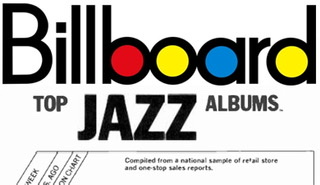 and others who chart jazz songs or albums that the public is paying for and listening to the most. You can see several of these clickable charts below.
and others who chart jazz songs or albums that the public is paying for and listening to the most. You can see several of these clickable charts below.
Response to (Winbush 0) on jazz's status in history books[edit]
(Winbush 0) claims that jazz may end up only having a few lines in history books. We already know this is false because there are currently numerous history books with many pages, chapters, and entire books on the subject of jazz.
- EVIDENCE: Current status of jazz in history books.
Jazz has already had and will continue to significantly impact the music scene.
- EVIDENCE: The proliferation of jazz sub-genres in and of itself has had a significant impact, however interpreted, on music and musical history.
Numerous non-jazz genres have started incorporating jazz into their music.
- EVIDENCE FOR CONTINUATION:
-
 Watch David Bennett's "Rock and pop songs inspired by jazz"
Watch David Bennett's "Rock and pop songs inspired by jazz"
-
-
 Watch Aimee Nolte's "Rock and pop songs that use a lot of jazz"
Watch Aimee Nolte's "Rock and pop songs that use a lot of jazz"
-
-
 ChatGPT3 (version January 9) Accessed January 25, 2023 gives this answer to how jazz has influenced contemporary music.
ChatGPT3 (version January 9) Accessed January 25, 2023 gives this answer to how jazz has influenced contemporary music.
-
“Here are a few specific examples of how jazz has influenced contemporary non-jazz music:
- Jazz harmony and chord progressions have been used extensively in pop music. For example, many contemporary R&B and neo-soul artists incorporate jazz chords and progressions into their music, such as D'Angelo and Erykah Badu.
- Jazz rhythms, particularly the syncopated rhythms of swing and bebop, have been used in hip-hop and electronic music. Artists like J Dilla and Madlib have incorporated jazz rhythms into their beats and sample jazz recordings extensively in their music.
- Jazz improvisation and experimentation has been an influence on rock music. Bands like The Mars Volta and Snarky Puppy have incorporated jazz elements such as complex time signatures and extended improvisation into their music.
- Jazz musicians and their approach to improvisation and experimentation has also been an influence on contemporary electronic and experimental music like Flying Lotus, Thundercat, and Kamasi Washington.
- Jazz fusion, which combines jazz with elements of rock, funk, and other genres, has been a popular subgenre and continues to influence contemporary music, especially in instrumental and experimental music scenes.”[14] (bold not in original)
Music schools have jazz programs.
- EVIDENCE FOR JAZZ MUSIC SCHOOLS:
-
 ChatGPT3 (version January 9) describes jazz education in the United States with representative schools.
ChatGPT3 (version January 9) describes jazz education in the United States with representative schools.
-
“Jazz education in the United States typically takes place at the college and university level, and often includes both performance and academic components. Jazz programs usually offer classes on jazz history, theory, and performance, as well as opportunities for students to perform in ensembles and study with professional jazz musicians.Many colleges and universities have established jazz programs that offer both undergraduate and graduate degrees in jazz performance, composition, and education. These programs often provide students with a strong foundation in jazz history, theory, and improvisation, as well as opportunities for performance and ensemble work. Some programs also offer specialized courses in jazz arranging, composing, or recording.
In addition to college and university programs, there are also numerous summer jazz camps, workshops, and festivals that provide opportunities for jazz education. These programs often bring together students of all ages and skill levels to study with professional jazz musicians and educators.
Overall, jazz education in the United States is diverse and well-established, providing students with a wide range of opportunities to study and perform jazz music, and to learn from experienced jazz musicians and educators.
What are the names of colleges and universities that teach jazz?
There are many colleges and universities in the United States that offer jazz programs. Here are a few well-known examples:
- The Juilliard School in New York City, which is widely considered to be one of the top music schools in the world.
- The Manhattan School of Music in New York City, which offers undergraduate and graduate degrees in jazz performance and composition.
- The New England Conservatory of Music in Boston, which has a renowned jazz program and offers undergraduate and graduate degrees in jazz performance, composition, and education.
- The Berklee College of Music in Boston, which is one of the most renowned music institutions in the world, offers undergraduate and graduate degrees in jazz performance, composition and music production.
- Indiana University in Bloomington, which has a well-respected jazz studies program and offers undergraduate and graduate degrees in jazz performance and education.
- Manhattan College in New York City, which offers a strong jazz program for undergraduate students.
- William Paterson University in Wayne, New Jersey, which has a renowned jazz studies program that offers undergraduate and graduate degrees in jazz performance and education.
- North Texas State University in Denton, Texas, which has a well-established jazz studies program and offers undergraduate and graduate degrees in jazz performance, composition, and education.
These are just a few examples, but there are many other colleges and universities that offer jazz programs in the United States. These institutions are known for their strong jazz education programs and their great resources to support students, many of them have famous jazz musicians and educators as faculty members.”[15] (bold not in original)
-
 Berklee Institute of Jazz and Gender Justice focuses on generating equity in the jazz field and establishing jazz's role in the larger struggle for gender justice.
Berklee Institute of Jazz and Gender Justice focuses on generating equity in the jazz field and establishing jazz's role in the larger struggle for gender justice.
-

-
 Wikipedia: Jazz education lists 492 current collegiate jazz programs globally.
Wikipedia: Jazz education lists 492 current collegiate jazz programs globally.
-
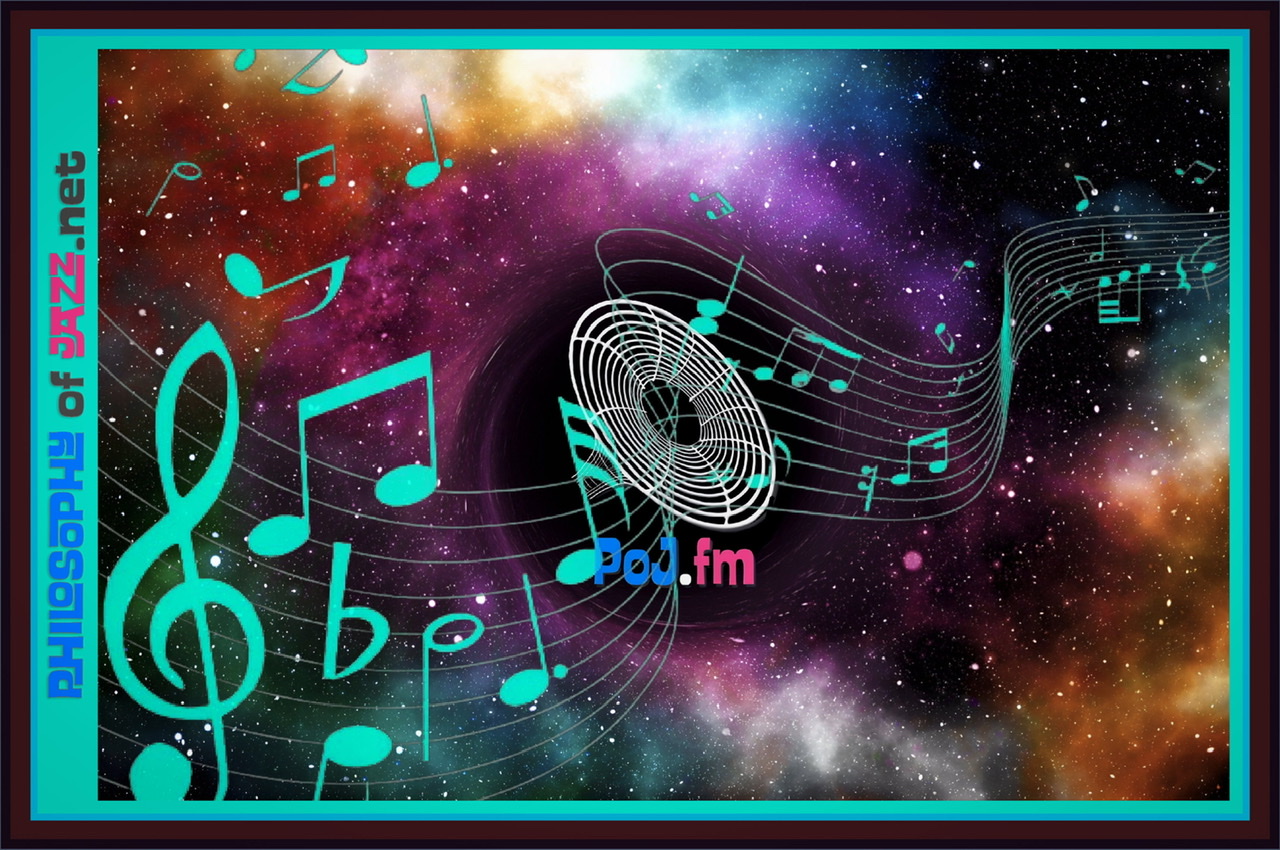
Response to (Winbush 0) on the current relevance of jazz[edit]
Best jazz of the year[edit]
To provide evidence for jazz's current relevance on the music scene, look at the reviews of the best jazz offered for that year.
-
 2022 JazzTimes.com, "Year in Review: The Top 40 Jazz Albums of 2022" (critics pick best new releases of the year), published December 19, 2022.
2022 JazzTimes.com, "Year in Review: The Top 40 Jazz Albums of 2022" (critics pick best new releases of the year), published December 19, 2022.
-
Print or online jazz magazines[edit]
NOTE: Click on a magazine name or image to go to its source.
Jazz magazines in the United States[edit]
-
 Wikipedia: List of jazz magazines with twenty-nine listed on January 20, 2023.
Wikipedia: List of jazz magazines with twenty-nine listed on January 20, 2023.
-
-
 DownBeat
DownBeat 
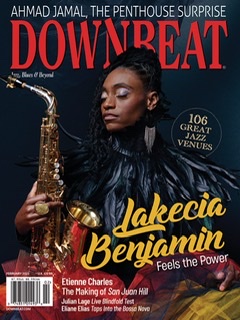 has been continuously published since 1934.
has been continuously published since 1934.
-

-
 Read about the history and founding of Downbeat.
Read about the history and founding of Downbeat.
-
-
 Jazziz published with a CD 💿 since 1984.
Jazziz published with a CD 💿 since 1984.
-

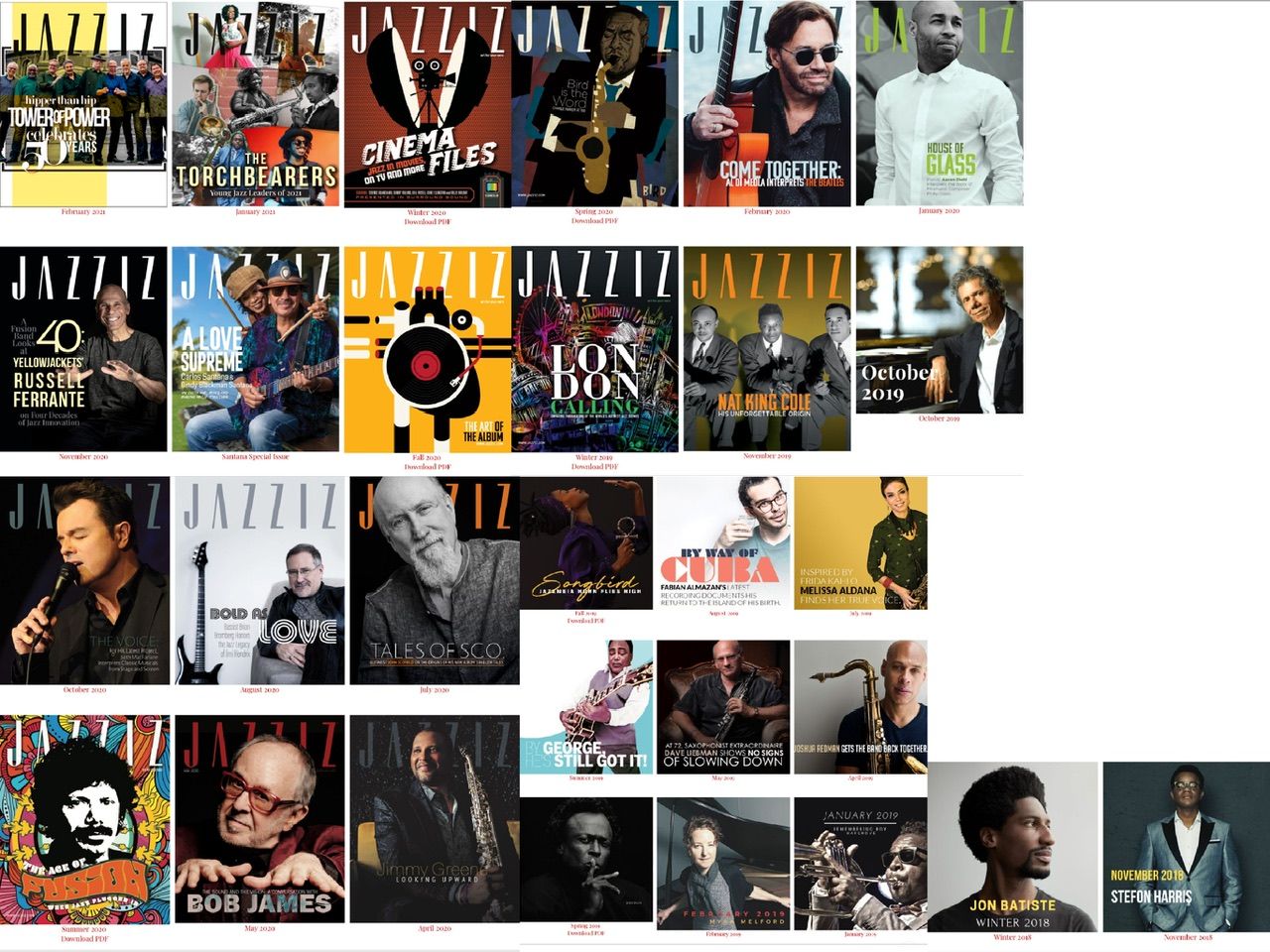
-
 All About Jazz's website and two magazines in Winter & Spring 2004:
All About Jazz's website and two magazines in Winter & Spring 2004: 

-
-
 Smooth Jazz Magazine Started in March/April 2015 to the present.
Smooth Jazz Magazine Started in March/April 2015 to the present.
-


-
 Cadence Read about Cadence magazine.
Cadence Read about Cadence magazine.
-
What are the names of jazz magazines?
"," "," "," "Jazz News," "Jazz Perspective," "Jazz Right Now," "Jazz Society of Oregon," "Jazzwise," "The Jazz Review," "Jazzworld," "Mons Records Jazz Magazine," "Straight Ahead Jazz Magazine," and "The Velvet Note." These are just a few examples and there are many more jazz magazines available.
Name even more jazz magazines.
Here are more jazz magazines: "," "Cadence Magazine," "The Chicago Jazz Magazine," "The Jazz Break," "Jazz Chicago," "Jazz Connect," "Jazz Da Gama," "Jazz Education Journal," "Jazz History Online," "Jazz In Europe," "Jazz In Press," "Jazz Inside New York," "Jazz Life," "Jazz Monthly," "Jazz News Letter," "Jazz Now," "Jazz On Line," "Jazz Times Europe," "Jazz Weekly," "Jazz World," "Jazz'n'More," "JazzReview.com" and "JazzTrail" Please note that this is not an exhaustive list and there are likely many more jazz magazines in existence and some of the names mentioned might not be currently active.
Jazz magazines in print or online from around the world[edit]
-
 See Matt Fripp's JazzFuel's list of ten "Great Jazz Magazines (2021)"
See Matt Fripp's JazzFuel's list of ten "Great Jazz Magazines (2021)"
-
Jazz magazines from around the world:
- "Jazz Forum" (Poland)
- "Jazz Podium" (Germany)
- "Jazzwise" (UK)
- "Jazzman" (France)
- "Jazz Thing" (Germany)
- "Jazz 'n' More" (Switzerland)
- "Jazz Hot" (France)
- "Jazz It" (Italy)
- "Jazz Special" (Denmark)
- "Jazzthetik" (Germany)
- "Jazzwise" (UK)
- "Cadence" (USA)
- "Jazz Da Gama" (India)
- "Jazz In Press" (Italy)
- "Jazz In Europe" (Belgium)
- "Jazztrail" (USA)
These are some examples of jazz magazines from around the world, but there may be many more in existence. Please note that this list is not exhaustive and some of the magazines mentioned might not be currently active.
Canadian jazz magazines:
- "Cadence Magazine"
- "The Canadian Jazz Report"
- "Jazz Scene"
- "Jazz Report"
- "Jazz Perspectives"
- "The WholeNote"
- "JazzScene Magazine"
- "JazzCanada"
- "OttawaJazzScene.ca"
- "TorontoJazz.com"
- "VancouverJazz.com"
Please note that this list is not exhaustive and some of the magazines mentioned might not be currently active.
Jazz magazines from Japan:
- "Swing Journal"
- "Jazz Life"
- "Jazz Japan"
- "Jazz Critique"
- "Jazz Japan Times"
- "Jazz Tokyo"
Please note that this list is not exhaustive and there may be other jazz magazines in Japan, and also some of the magazines mentioned might not be currently active.
Jazz magazines from Europe:
- "Jazz Forum" (Poland)
- "Jazz Podium" (Germany)
- "Jazzwise" (UK)
- "Jazzman" (France)
- "Jazz Thing" (Germany)
- "Jazz 'n' More" (Switzerland)
- "Jazz Hot" (France)
- "Jazz It" (Italy)
- "Jazz Special" (Denmark)
- "Jazzthetik" (Germany)
- "Jazz In Press" (Italy)
- "Jazz In Europe" (Belgium)
- "Jazz Podium Spezial" (Germany)
- "Jazzwise" (UK)
- "Jazz'n'More" (Switzerland)
- "Jazz Magazine" (France)
- "Jazz & Tzaz Magazine" (Greece)
- "Jazz Journal" (UK)
Please note that this list is not exhaustive, and there may be many more jazz magazines in Europe, Also, some of the magazines mentioned might not be currently active.
-
 Turkish jazz Jazz Dergisi magazine published between January 1996 and June 2016 over twenty-one years with eighty-two issues.
Turkish jazz Jazz Dergisi magazine published between January 1996 and June 2016 over twenty-one years with eighty-two issues.
-
-
 OrkesterJournalen now Jazz (Sweden)
OrkesterJournalen now Jazz (Sweden)  is Sweden´s only jazz magazine and the world's oldest publication beginning in 1933.
is Sweden´s only jazz magazine and the world's oldest publication beginning in 1933.
-
-
 Slovakia's online jazz magazine Skjazz.sk
Slovakia's online jazz magazine Skjazz.sk  since 2006.
since 2006.
-
-
 Switzerland's Jazz Magazine
Switzerland's Jazz Magazine  Jazz‘n‘More.
Jazz‘n‘More.
-
-
 Germany's Jazz Podium
Germany's Jazz Podium  published since 1952.
published since 1952.
-

“Jazz Podium is a German-language jazz magazine published eight times a year (double editions: March/April, June/July, August/September, December/January). It was founded in 1952—the first issue was published in Vienna in September 1952—and was published for a long time by Dieter Zimmerle. After his death, Gudrun Endress was the long-time editor-in-chief (and managing director with Frank Zimmerle) from 1989 to 2018 and Stuttgart was the headquarters of the magazine until 2018. Their original title was The International Podium with the current announcements of the German Jazz Federation. Initially, the magazine came out with twenty pages. Today it's about eighty. Since 2021, the magazine has also been published as an e-paper. A digital archive with all past issues since 1952 is under construction and is accessible to subscribers.
In addition to musician portraits and interviews, the magazine contains current jazz news, reviews of CDs, films as well as books and references to planned concert and club appearances or Festival and radio programs in German-speaking countries and in some neighboring countries. The magazine is aimed at musicians as well as interested laymen of all generations.The authors (musicologists, jazz experts, musicians), photographers and editors only write and work for an expense allowance. There are around 100 freelancers. The circulation in 2002 was 12,000 copies, most of which are distributed as a subscription.”[16] (bold not in original)

Active jazz clubs[edit]
- 🎷 There are currently active and thriving jazz clubs and venues around the world and in the United States.
- 🎷 See Matt Fripp's JazzFuel's "List of the best jazz clubs in Italy."
Active jazz festivals[edit]


Jazz Appreciation Month (JAM) and International jazz day[edit]
- 🌎 Jazz Appreciation Month (JAM)
 during every April and begun in 2001 by the Smithsonian museum.
during every April and begun in 2001 by the Smithsonian museum.
- 🌎 Jazz Appreciation Month (JAM)
- 🌍 International Jazz Day
 on every April 30th.
on every April 30th.
- 🌍 International Jazz Day
Jazz around the world[edit]
- 🌏 Jazz in India Taj Mahal Foxtrot: The Story of Bombay's Jazz Age
- 🌏 Polish Jazz For Dummies: 60 Years Of Jazz From Poland written by Cezary L. Lerski

Response to (Winbush 1) on the current status of jazz[edit]
(Winbush 1): The most popular forms of jazz barely qualify as jazz. PoJ.fm finds these general observations are partially true. The general public is less familiar with classic jazz performances and has more likely only heard 'watered down' jazz. The best-selling smooth jazz artist is soprano saxophonist (primary instrument) Kenny G (b. 1956), who also plays on alto and tenor saxophones and flutes in the additional music categories of Adult Contemporary and Easy Listening.
It is not that the chosen popular kinds of music are not jazz as much as they are softer and more easily accessible to musical ears than the more complex rhythms and complex harmonies found in Bebop, jazz/rock fusion, or free jazz, to name a few. These other jazz styles' frenetic energy and dynamism are less easily mass-marketed.
The top two choices by jazz listeners at the streaming service Jazz24.org were heavy favorites: (1) "Take Five" by the Dave Brubeck Quartet and (2) "So What" by the Miles Davis Quintet. "Take Five" is in 5/4 time, hence presumably explaining the title of the tune, and, at the time, was considered an odd time signature. "So What" is on the best-selling jazz album of all time, "Kind of Blue," so its popularity is well-known.
The rest of the top twenty (out of the one hundred ranked) are all familiar recordings by established jazz musicians, as seen in the list below.
- 3. "Take The A Train" — Duke Ellington
- 4. "Round Midnight" — Thelonious Monk
- 5. "My Favorite Things" — John Coltrane
- 6. "A Love Supreme (Acknowledgment)" — John Coltrane
- 7. "All Blues" — Miles Davis
- 8. "Birdland" — Weather Report
- 9. "The Girl From Ipanema" — Stan Getz & Astrud Gilberto
- 10. "Sing, Sing, Sing" — Benny Goodman
- 11. "Strange Fruit" — Billie Holiday
- 12. "A Night in Tunisia" — Dizzy Gillespie
- 13. "Giant Steps" — John Coltrane
- 14. "Blue Rondo a la Turk" — Dave Brubeck
- 15. "Goodbye Pork Pie Hat" — Charles Mingus
- 16. "Stolen Moments" — Oliver Nelson
- 17. "West End Blues" — Louis Armstrong
- 18. "God Bless The Child" — Billie Holiday
- 19. "Cantaloupe Island" — Herbie Hancock
- 20. "My Funny Valentine" — Chet Baker
Still, in the top one-hundred favorite recorded jazz performances by song at Jazz24.org, voted on by jazz listeners out of a choice of fifteen hundred, few would disagree with the excellence of the chosen songs. Nevertheless, there is still the factor of smoother and cooler jazz songs ranking higher than any song by, say, a player of European free jazz, avant-garde jazz, and free improvisation such as Peter Brötzmann (b. 1941).
Notice number 11. on the above list, Billie Holiday's 1939 recording of a song about lynching, "Strange Fruit." Wikipedia: Strange Fruit categorizes the genres of the song to be blues and jazz.[17] At a minimum, the jazz component of the recording begins with pianist Sonny White improvising an introduction before Holiday starts singing after seventy seconds.
When Winbush supports his points, he has complaints against Lady Gaga and Annie Lennox qualifying as jazz singers when they started in non-jazz genres. To remind the reader, here is how Winbush characterizes the three singers.
“This week's Billboard contemporary jazz charts has Tony Bennett's collaboration with Lady Gaga is #2, and Annie Lennox follows at #3. If you want to call Bennett a jazz singer, I won't kick, but Gaga and Lennox? Pop stars slumming gets a definite "No."
Would anyone claim that Tony Bennett (b. 1926) is not a jazz singer? Everybody agrees that Tony Bennett is one of the best American singers of all time.
“Bennett has amassed numerous accolades throughout his career, including twenty Grammy Awards (including a Lifetime Achievement Award presented in 2001) and two Primetime Emmy Awards. He was named an NEA Jazz Master and a Kennedy Center Honoree. Bennett has sold over fifty million records worldwide.”[18] (bold not in original)
There is no such thing as a jazz song; there are only ways to sing a song in a jazz manner. Vocalists can sing a jazz standard in a non-jazz way. Hence, it is not the song itself that makes the performance be jazz; instead, it is how a singer performs the music that makes it jazz. Any singer, from any musical style could sing a song in a jazz manner if sung jazzily. Therefore, both Lady Gaga and Annie Lennox could be singing their songs in a jazz style even if they sang pop and rock songs in the past.
“"Nostalgia" debuted at number nine on the UK Albums Chart, becoming Lennox's sixth UK top-10 solo album. It has since been certified Gold by the BPI for sales in excess of 100,000 copies in the UK. It debuted at number 10 on the US Billboard 200 with first-week sales of 32,000 copies, earning Lennox her third top-10 solo album on the chart, as well as her first-ever number-one album on both Billboard's Jazz Albums and Traditional Jazz Albums charts. It had sold 139,000 copies in the United States as of April 2015. "Nostalgia" peaked inside the top ten in Austria, Canada, Italy and Switzerland. The album was nominated for Best Traditional Pop Vocal Album at the 57th Grammy Awards.”[19] (bold not in original)
Is jazz-inspired vocal pop music a bad thing for jazz? Doesn't Winbush advocate in (Winbush 6) that jazz should strive to achieve more mass appeal? He can't have it both ways that watered-down jazz is not jazz while advocating for broadening jazz's appeal to the music-listening population.
Winbush is more or less correct that the Billboard Contemporary jazz chart is a lot of the time 'jazz-lite' because what's bought by listeners because of its popular appeal is not what defines the best jazz music as judged by knowledgeable jazz musicians, jazz critics, and theorists.
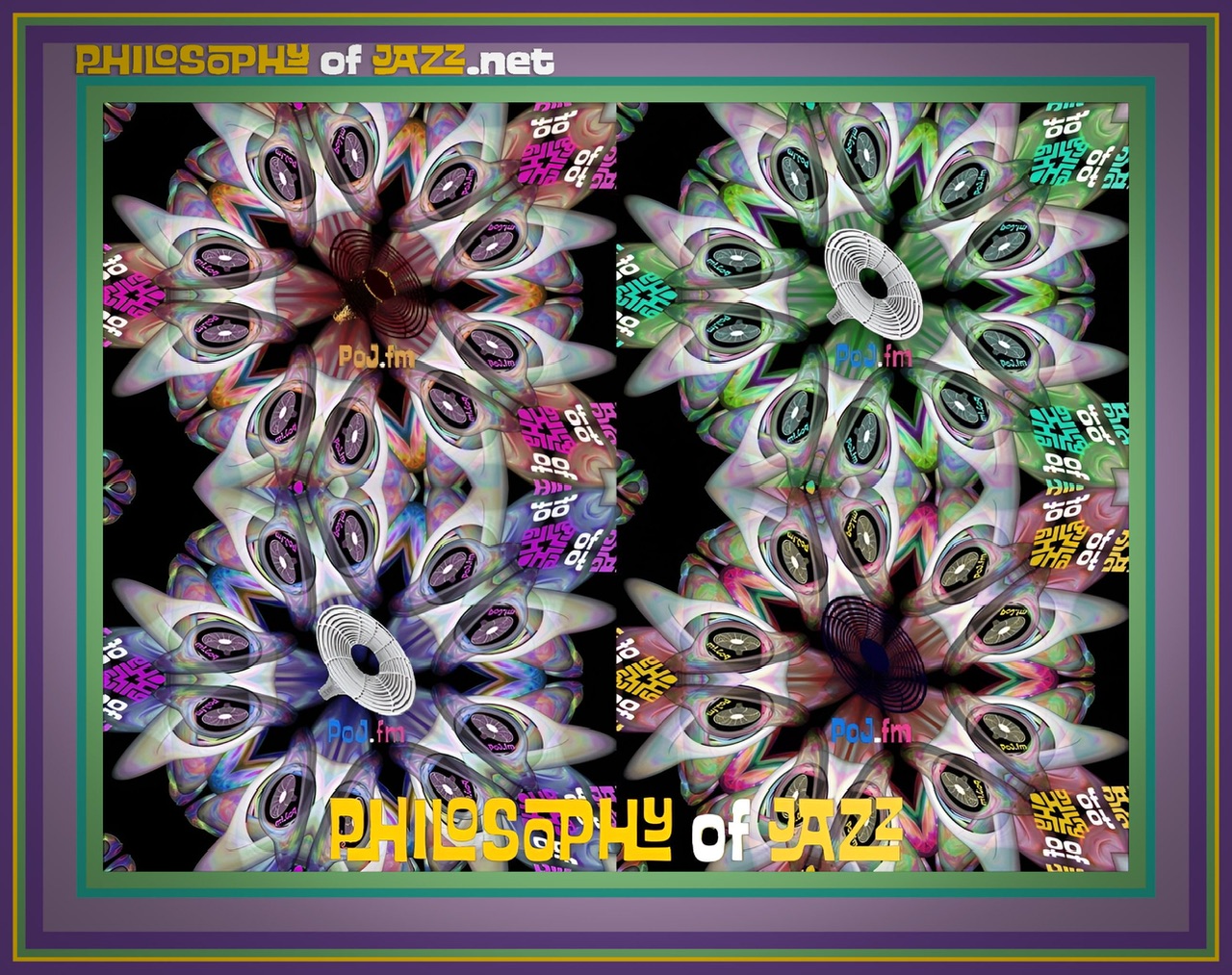
What's wrong with contemporary smooth jazz?[edit]
Smooth jazz pushed itself onto the Billboard recording charts in 1987, not as a whim but due to the sales of this style of playing music.

Smooth jazz has jazz components but lacks the unencumbered 'spirit' of jazz where musicians can branch out from the consistent smoothness found in most recordings labeled as smooth jazz. Smooth jazz is always glossy and polished sounding because of stylistic restrictions that always have a soothing musical background effect on listeners. Things don't 'stand out' on a smooth jazz recording. It is all of one harmonious development. Shrillness and discordance are forbidden stylistically, or producers fear losing their listeners. Such a point of view is generally true since the more straight-ahead, or what Billboard and others categorize as 'traditional' jazz, a term that in the past implied New Orleans Dixieland, has fewer sales because listeners buy it less than smooth jazz styles.
Of course, there may be some musical exceptions when lumping a large number of musical performances under an umbrella category and expecting perfect uniformity among all candidates. Still, smooth jazz practioners conform to a high degree to a particular musical model.
There are different styles that one might use to describe a musical style. These stylistic critiques range from friendly and supportive to hostile and negative even when allegedly describing the same phenomenon. For a quick example, in describing what smooth jazz sounds like are descriptions in contrasting styles called friendly, unfriendly, and neutral.
- FRIENDLY: As a style of music, smooth jazz gives listeners the impression of an infinitely long pleasing and harmonious sonic pillow that drifts them into a luxurious state of musical happiness.
- UNFRIENDLY: As a style of music, smooth jazz presents a water downed jazz-lite smeared with easy-listening pop music and lightweight R&B.
- NEUTRAL: “Smooth Jazz is an outgrowth of fusion, one that emphasizes its polished side. Generally, smooth jazz relies on rhythms and grooves instead of improvisation. There are layers of synthesizers, lite-funk rhythms, lite-funk bass, elastic guitars, and either trumpets, alto, or soprano saxophones. The music isn't cerebral, like hard bop, nor is it gritty and funky like soul-jazz or groove—it is unobtrusive, slick, and highly polished, where the overall sound matters more than the individual parts.”[20] (bold and bold italic not in original)

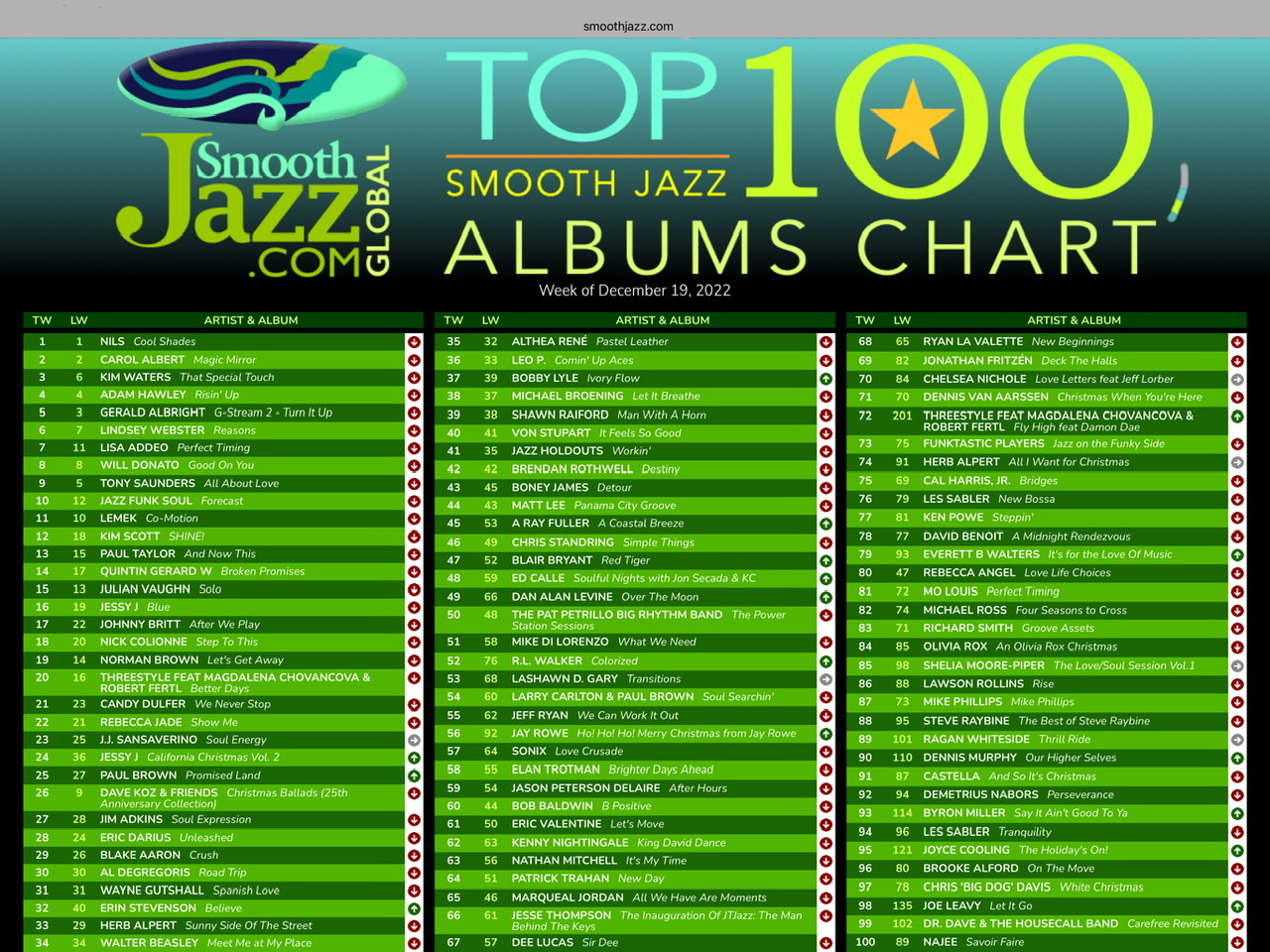
Why jazz lovers dislike smooth jazz[edit]
At Quora.com, music book author, Todd Lowry gives at least seven reasons why smooth jazz has limited appeal to jazz music aficionados. Numbers added by PoJ.fm.
“Smooth jazz is NOT jazz.
(1) There is no jazz improvisation. Jazz is about improvisation, living in the moment, revelation.
(2) Smooth jazz harmonies are rarely complex like real jazz harmonies.
(3) Smooth jazz virtually never swings like real jazz.
(4) There is little blues influence in smooth jazz like there is in real jazz.
(5) Jazz has an African heritage and a storied history that goes from Ragtime to Dixieland to Stride Piano to Boogie-Woogie to Swing to Bop to Cool to Hard Bop to Free Form to Fusion to Latin, etc.
(6) There is no historical perspective in smooth jazz nor (7) use of the jazz standard repertoire.”[21] (bold not in original)
Also, generally speaking, smooth jazz all sounds alike.
Response to (Winbush 2) on the fragmentation of jazz[edit]
(Winbush 2): Jazz is highly fragmented. Contemporary straight-ahead jazz fans into a Wynton Marsalis don't have much use for avant-garde, experimental types like a Cecil Taylor or John Zorn and both loathe "smooth" jazz as practiced by a Kenny G. or Dave Koz. The problem is jazz is such a tiny portion of overall music sales (down to under 2 percent in 2014), there's really no place for elitism and exclusion. There simply isn't enough slices of the pie for anyone to be thumbing their noses at the subdivisons of jazz.
Jazz has many sub-genres; many jazz listeners dislike some of them and don't actively listen to others.
Think of it this way. Does everybody like ballet? No. Is ballet likely one of the greatest forms of dance by human beings? Yes. The two male ballet stars of Rudolph Nureyev (1938–1993) and Mikhail Baryshnikov (b. 1948) were phenomenal athletes. Barishnikoff would often appear to defy gravity in his athleticism. But ballet is more of an acquired taste than some other forms of entertainment like American 🇺🇸 football 🏈 or world-wide 🗺 soccer ⚽️.
Jazz is more like ballet and pop music is more like American football 🏈 or soccer ⚽️. Therefore, jazz is an acquired taste needing nurturing and exposure to listeners so they can be more educated about the music. This means it is unlikely ever again to have the popular domination it had in the 1930s and 40s.
Consequently, each jazz sub-genre is striving for market share. This might partially explain the snipping against other jazz sub-genres to which Winbush refers. So. it turns out, there is a place for 'elitism and exclusion' since each sub-genre is working to get their very thin slice of the pie.
Response to (Winbush 3) on hearing jazz[edit]
(Winbush 3): The collapse of the record labels and radio stations still playing jazz as a format have sped the decline of the genre's popularity. If you can't hear it on the radio, you're probably not going to find out about new and older artists still making music and clubs aren't going to book jazz artists and you're not going to able to find venues to hear live jazz. As far as TV goes, fuhgeddabouit. My, what a tangled web we weave.
-
 A great bulk of music listening since at least 2010 has switched to streaming services for their efficiency, convenience, depth of playlists and recordings so one can much more easily listen to streaming jazz than ever before with thirty-two active music streaming providers listed at Wikipedia. Access to jazz recordings has perhaps never been higher.
A great bulk of music listening since at least 2010 has switched to streaming services for their efficiency, convenience, depth of playlists and recordings so one can much more easily listen to streaming jazz than ever before with thirty-two active music streaming providers listed at Wikipedia. Access to jazz recordings has perhaps never been higher.
-
-
 There are plenty of places to see jazz performed at jazz festivals around the world. See active jazz festivals.
There are plenty of places to see jazz performed at jazz festivals around the world. See active jazz festivals.
-
-
 There are still clubs booking jazz musicians. See "Fifty Best Jazz Clubs in America.
There are still clubs booking jazz musicians. See "Fifty Best Jazz Clubs in America.
-
-
 There are still at least sixty-seven jazz radio stations. Wikipedia: List of jazz radio stations lists eighty-five stations playing jazz in the United States.
There are still at least sixty-seven jazz radio stations. Wikipedia: List of jazz radio stations lists eighty-five stations playing jazz in the United States.
-
-
 Jazz is still occasionally heard on television. Read Liam Maloy's "Ain't Misbehavin': Jazz music in children’s television," Jazz Research Journal, September 20, 2019.
Jazz is still occasionally heard on television. Read Liam Maloy's "Ain't Misbehavin': Jazz music in children’s television," Jazz Research Journal, September 20, 2019.
-
Response to (Winbush 4) on the state of jazz education[edit]
(Winbush 4): Schools are chopping their music classes and there goes a feeder system for kids who aspire to play something more complex than turntables and ProTools. If you can't hear jazz, see jazz or play jazz, where's the next generation of new blood coming from to replace the old blood?
-
 See the Herbie Hancock Institutes's thorough outline of "Jazz Education" in the United States. The Hancock Institute points out that jazz since the 1960s has continually increased its credibility until jazz has now become “legitimized” in formal academia because university jazz studies programs proliferated in the 1970s, ‘80s, and ‘90s. Today's jazz students study and practice with their classical music counterparts in America’s most prestigious schools of music and conservatories, including Eastman, Indiana University, Juilliard, or the New England Conservatory, to name a few. Students can now earn a bachelors, masters, or doctoral degree in jazz studies with more than one hundred twenty bona fide jazz programs. Around the world, post secondary jazz degree programs are now well-established.
See the Herbie Hancock Institutes's thorough outline of "Jazz Education" in the United States. The Hancock Institute points out that jazz since the 1960s has continually increased its credibility until jazz has now become “legitimized” in formal academia because university jazz studies programs proliferated in the 1970s, ‘80s, and ‘90s. Today's jazz students study and practice with their classical music counterparts in America’s most prestigious schools of music and conservatories, including Eastman, Indiana University, Juilliard, or the New England Conservatory, to name a few. Students can now earn a bachelors, masters, or doctoral degree in jazz studies with more than one hundred twenty bona fide jazz programs. Around the world, post secondary jazz degree programs are now well-established.
-
-
 See JazzFuel.com's "Ten of the Best Music Schools for Jazz in the United States," March 19, 2022.
See JazzFuel.com's "Ten of the Best Music Schools for Jazz in the United States," March 19, 2022.
-
-
 Best Schools to Study Jazz in the United States and get a degree in Jazz Studies, Performance, or Jazz Composition, according to CareersInMusic.com. The top fifteen colleges, universities, and conservatories to study jazz are listed below in alphabetical order. For a brief description of each school's jazz program, click here.
Best Schools to Study Jazz in the United States and get a degree in Jazz Studies, Performance, or Jazz Composition, according to CareersInMusic.com. The top fifteen colleges, universities, and conservatories to study jazz are listed below in alphabetical order. For a brief description of each school's jazz program, click here.
-
- 1. Berklee College of Music
- 2. Columbia University
- 3. Eastman School of Music
- 4. Indiana University Jacobs School of Music
- 5. John Hopkins Peabody Institute
- 6. Juilliard School
- 7. Manhattan School of Music
- 8. New England Conservatory of Music
- 9. New School for Jazz and Contemporary Music
- 10. Northwestern University Bienen School of Music
- 11. Oberlin Conservatory
- 12. University of Miami Frost School of Music
- 13. University of North Texas College of Music
- 14. University of Southern California Thornton School of Music
- 15. Western Michigan University School of Music
-
 Ph.D. in Jazz & Improvisation
Ph.D. in Jazz & Improvisation
- ♦ Melbourne Conservatorium of Music
- ♦ Effortless Mastery Institute at
 with Director Kenny Werner (b. 1951) who wrote Effortless Mastery (1996).
with Director Kenny Werner (b. 1951) who wrote Effortless Mastery (1996).
-
-
 For jazz education programs internationally see the thirty-one listings at the bottom of the 2019 Downbeat's Student Music Guide: Where to Study Jazz.
For jazz education programs internationally see the thirty-one listings at the bottom of the 2019 Downbeat's Student Music Guide: Where to Study Jazz.
-
-
 The Jazz Education Network (JEN) was an outgrowth of the International Association of Jazz Education (IAJE) (founded in 1968 and bankrupted and defunct since 2008) with the Jazz Education Network (JEN) beginning then in 2008 with a mission dedicated to building the jazz arts community by advancing education, promoting performance, and developing new audiences for the music.
The Jazz Education Network (JEN) was an outgrowth of the International Association of Jazz Education (IAJE) (founded in 1968 and bankrupted and defunct since 2008) with the Jazz Education Network (JEN) beginning then in 2008 with a mission dedicated to building the jazz arts community by advancing education, promoting performance, and developing new audiences for the music.
-
-
 Read the JazzEd magazine, a major publication of the Jazz Education Network (JEN) currently published ten times per year.
Read the JazzEd magazine, a major publication of the Jazz Education Network (JEN) currently published ten times per year.
-

-
 Monterey Jazz Festival Education: “As a nonprofit, Monterey Jazz Festival is devoted to education by presenting year-round local, regional, national, and international programs. Thousands of students have been the benefactors of the Festival’s educational efforts through the Jazz in the Schools Program, Summer Jazz Camp, Next Generation Jazz Festival, Next Generation Jazz Orchestra, Next Generation Women in Jazz Combo and Monterey County All-Star Ensembles, which embark on annual performance trips each summer.”
Monterey Jazz Festival Education: “As a nonprofit, Monterey Jazz Festival is devoted to education by presenting year-round local, regional, national, and international programs. Thousands of students have been the benefactors of the Festival’s educational efforts through the Jazz in the Schools Program, Summer Jazz Camp, Next Generation Jazz Festival, Next Generation Jazz Orchestra, Next Generation Women in Jazz Combo and Monterey County All-Star Ensembles, which embark on annual performance trips each summer.”
-
-
 (Winbush4) worries about "where's the next generation of new blood" coming from. The answer may be from women and non-binary musicians! Watch the video conference of "Gender and Inclusion in Jazz Education" presented by Australians Ellie Lamb and Darcie Foley at the Association for Music Educators conference on October 28, 2021. The video provides insight into systemic underrepresentation of female and gender diverse students in secondary jazz ensembles and suggests strategies for improving the inclusion and experiences of such students within music programs.
(Winbush4) worries about "where's the next generation of new blood" coming from. The answer may be from women and non-binary musicians! Watch the video conference of "Gender and Inclusion in Jazz Education" presented by Australians Ellie Lamb and Darcie Foley at the Association for Music Educators conference on October 28, 2021. The video provides insight into systemic underrepresentation of female and gender diverse students in secondary jazz ensembles and suggests strategies for improving the inclusion and experiences of such students within music programs.
-
-
 Read Christian Wissmuller's interview with drummer and jazz educator at Berklee College of Music Terri Lynne Carrington, "‘We’re Trying to Shift that Narrative’: Terri Lyne Carrington Isn’t Waiting Around for Jazz to Reach its Full Potential," JazzEd magazine, January/February 2022.
Read Christian Wissmuller's interview with drummer and jazz educator at Berklee College of Music Terri Lynne Carrington, "‘We’re Trying to Shift that Narrative’: Terri Lyne Carrington Isn’t Waiting Around for Jazz to Reach its Full Potential," JazzEd magazine, January/February 2022.
-
Response to (Winbush 5) on America's ignorance of jazz[edit]
(Winbush 5): America is ignorant of its jazz history and heritage which is why so many musicians spend their summers touring Europe and Japan. If you're not playing across the pond, you had better find a side gig as a session musician or educator to pay the bills.
🇺🇸 Americans have been learning more about jazz through being exposed to it in secondary school.
🇺🇸 The 100th U.S. Congress in 1987 passed resolution H.Con.Res.57 introduced by John Conyers (1929–2019) “expressing the sense of Congress respecting the designation of jazz as a rare and valuable national treasure.”
NOTE: Click on image or text of resolution for the source.
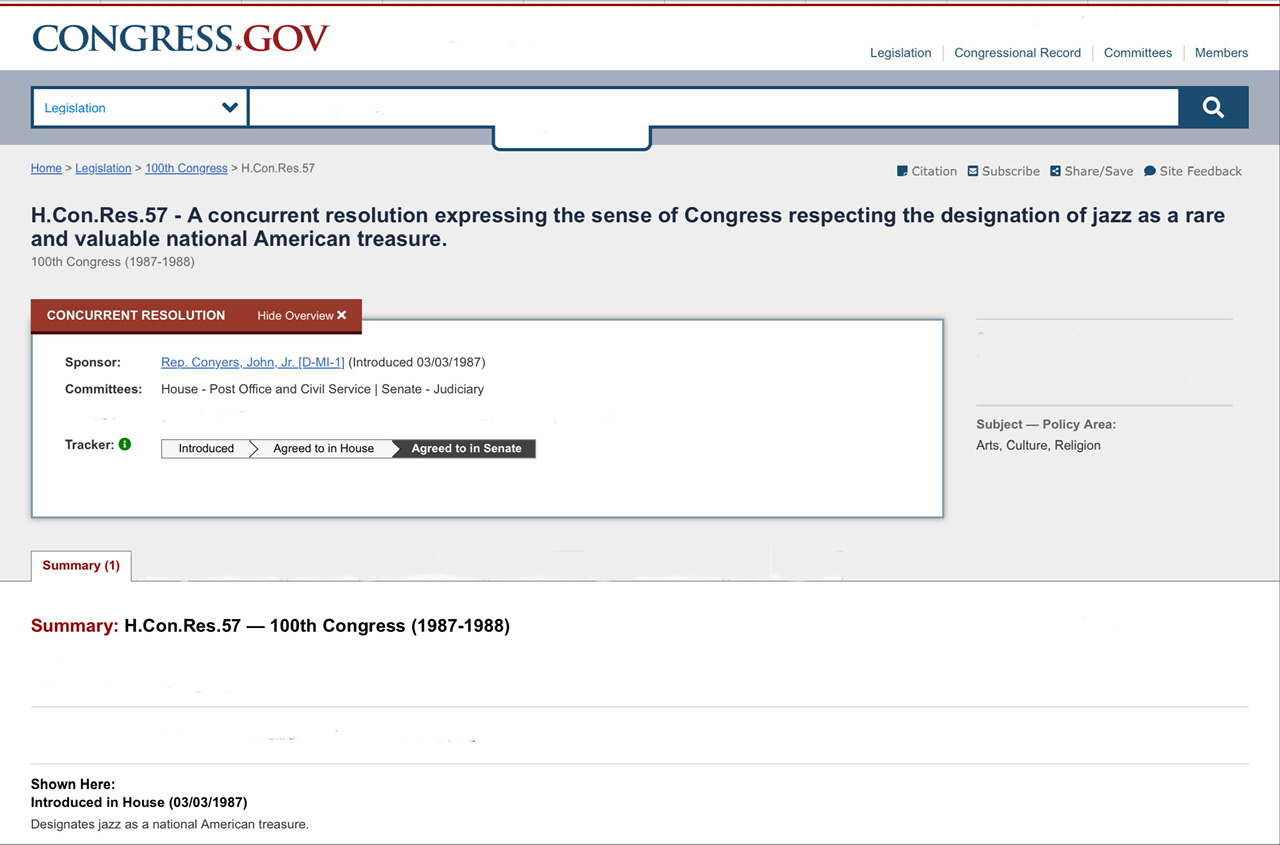

Response to (Winbush 6) on jazz being a snob musical genre[edit]
(Winbush 6): Jazz has made itself a genre for snobs, hipsters and pseudo-intellectuals. It needs to find a way to attract the masses.”
It is unlikely that jazz could ever again attract the majority of music listeners. However, much jazz is a learning experience for people because it can be challenging and complex music.
Jazz blogger, Marc Myers, strongly believes that jazz cannot yield from a high art to a mass market appeal without condemning itself to oblivion.
“The bigger question I suppose, is this: Why after all these years content to be high art does jazz continue its silly pursuit of mass-market approval? The fact is, for jazz to survive, it must remain high art. Once it dumbs down and rushes after the mass market, it will truly become road kill. There simply are too many other forms of disposable music out there that are far better at cashing in on tastes and trends.”[22] (bold and bold italic not in original)
Marc Myers continues his analysis of jazz's decline starting in the 1950s and 60s in the United States because jazz musicians wished to promote jazz as high art and not merely for dancing and entertainment.
“Jazz's popularity waned in the 1960s because in the late 1940s and throughout the 1950s, jazz made a conscious decision to be high art, and not all musicians were gifted or financially able to make the sacrifices imposed on serious artists. There's nothing jazz or jazz musicians or record company executives could have done to stop the shifting sands. The fact that jazz has survived as long as it has remains something of a miracle. We can thank the hundreds of artists who remained true to jazz's origins and traditions over the years despite the commercial hardships. Good taste may not pay well but it lasts longer than faddish Faustian bargains.”[23] (bold and bold italic not in original)
Myers conclusion is this:
“Ultimately, jazz is for listening, not dancing.”[24] (bold not in original)

Musician's reveal interest in topic of jazz's death[edit]
For some evidence that people concern themselves with jazz's death, consider the following song titles, albums titles, and even record company titles as represented in the composites below. The sheer number of these proves that musicians find whether or not jazz is dead intriguing and perhaps a challenging issue.
- 🔆 For example, there is a record company that calls itself JAZZ IS DEAD. Click on the picture to go to their website and hear music samples.
- 🔆 Then, there are the 'pure' deniers.
- 🔆 These are followed by those who question whether jazz is dead.
- 🔆 Finally, there are those who deny that jazz is dead!
- 🔆 As an aside, one can also find song titles, artist's names, and album titles claiming their 'subject' is dead for everything from art to rock to discourse.
“So, Is Jazz Really Dead This Time?
The lack of interest in [Ken] Burns's program added fuel to the "Is jazz dead?" debate that had once again become a hot topic with writers, critics, and musicians. In his book Blue: The Murder of Jazz (1997) [p. 220], Eric Nisenson lays the blame for jazz's presumed demise on the neocon philosophy of stressing technique over creativity with statements such as, "Jazz without innovation is a dead art form." Gene Lees also holds Wynton Marsalis and company responsible, but for a different reason. "Either jazz has evolved into a major art form," he writes in Cats of Any Color (1995) [p. 246], "or it is a small, shriveled, crippled art useful only for the expression of the angers and resentments of an American minority. If the former is true, it is the greatest artistic gift of blacks to America, and America's greatest artistic gift to the world. If the latter is true, it isn't dying. It's already dead. Jazz critic Francis Davis also indirectly points his finger at Marsalis, but for still another reason. "'In jazz, the Negro is the product,' Ornette Coleman once sagely observed," he writes in Bebop and Nothingness: Jazz and Pop at the End of the Century (1996) [p. xi]. "But not anymore, or not exactly. The new 'product' in jazz is youth." Davis notes how jazz bands playing in New York clubs began to get younger and sound more traditional (as in "hard boppish") and less experimental after articles ran in The New York Times and Time magazine in 1990 reporting on the "jazz rebirth" and profiled a number of young lions recently signed to record contracts.[25] (bold and bold italic not in original)
If there are young lions playing jazz in the 1990's, then jazz's death has been announced prematurely at that time.
Evaluating why jazz is dead could be true[edit]
Why might trumpeter Nicholas Payton (b. 1973) believe that “Jazz died in 1959” in his artistic poem-like structured essay "On Why Jazz Isn't Cool Anymore," (November 27, 2011)?
Payton may believe jazz died in 1959 because he finds the jazz label too restrictive and overly confining to his artistic aspirations. It potentially limits him from performing other non-jazz genres, he might feel. He wants to take advantage of the new and hip now, not 60 years ago. Do not limit his creativity to only an old genre. Take advantage of all of the new studio technologies and make music in the now and not in some stuffy older styles.
Reasons jazz died in 1959[edit]
As a practicing musician trying to make a living and making money through recordings and live performances, one does not need to limit themselves only to one way or style of making music. There are no requirements of allegiance to only one style or genre for musicians. They can explore and present whatever music captures their imaginations and attention. There is no demand that (jazz) musicians must always play or record music in a jazz vein.
Payton played jazz when he first recorded with Doc Cheatham in 1997, 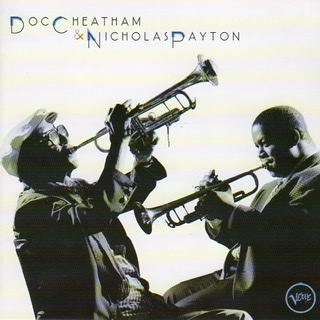 yet this need not restrict Payton's future musical prospects and genre interests.
yet this need not restrict Payton's future musical prospects and genre interests.
Another musician who found jazz, in effect dead, and "walking backward" (although he does not use the word "dead") is Swiss jazz drummer JoJo Mayer (b. 1963) in the documentary video, "JoJo Mayer — Changing Time (Documentary)." In 2014, Modern Drummer Magazine voted Mayer one of the "50 Greatest Drummers of All Time." When he first came to New York City in the early 1990s, he felt that jazz had stopped forty years before that and had ceased being progressive music and had started, as he put it, "walking backward." Here are some screen captures from the documentary recording Mayer's frustrations with pursuing jazz that he says had become "a conservative music."
Reasons jazz did NOT die in 1959[edit]
NOTE: Click on the page to go to its source. These two album compilations represent great jazz albums released between 1959 and 1979. At least one album, Louis Armstrong's Hot 5 and 7, was recorded much earlier between 1925 and 1928.
If jazz died in 1959, there could be no jazz made after that date because it wouldn't be alive. Because of the fantastic amount of quality music made just in the 1960s alone, under any knowledgeable assessment, for a certainty, these potential judges will accept that at least some of the albums above and below on the following lists qualify as jazz. Therefore, jazz did not die in 1959, as espoused by Payton.
![]() List of post-1950–1996 jazz standards
If there are jazz standards, then musicians are still performing jazz from the 1950s through the 1990s.
List of post-1950–1996 jazz standards
If there are jazz standards, then musicians are still performing jazz from the 1950s through the 1990s.
NOTE: The following examples of great jazz from the 1960s onward does not pretend to be a complete listing. Rather, the lists represent important moments in the history of jazz beginning by highlighting some of the 1960's music of Miles Davis, John Coltrane, Ornette Coleman, or some music from the jazz superstars of the 1960s.
Great Jazz from America in the 1960s[edit]
-
 Free jazz and modal jazz are pushing Bebop forms aside beginning in 1960.
Free jazz and modal jazz are pushing Bebop forms aside beginning in 1960.
-
Miles Davis (1926–1991)[edit]
-
 Miles Davis records "Sketches of Spain"
Miles Davis records "Sketches of Spain"  (1960) with the help of Gil Evans.
(1960) with the help of Gil Evans.
-
 Miles Davis does "Quiet Nights"
Miles Davis does "Quiet Nights"  (1962) with Gil Evans and a large band. Music writer Scott Yanow describes this Evans/Davis collaboration as “their weakest project.” Miles will not record another big band album until "Aura" in 1989.
(1962) with Gil Evans and a large band. Music writer Scott Yanow describes this Evans/Davis collaboration as “their weakest project.” Miles will not record another big band album until "Aura" in 1989.
-
 Davis records "E.S.P."
Davis records "E.S.P."  (Columbia) (1965) with his classic '60s quintet: saxophonist Wayne Shorter, pianist Herbie Hancock, bassist Ron Carter, and drummer Tony Williams. The Ranting Recluse reports on how well this album works: “The first release from what would become known as Davis' "second great quintet" features some of his fieriest acoustic work, as his newly assembled group of young players seem to push him to the limits of Hard Bop and towards a freer, more improvisational side than he'd ever really shown up to this point. The music is complex, with Davis' trumpet and Shorter's sax often seeming to be working at a much higher level of intensity than Hancock's elegant chords and the rhythm section's confident, silky grooves, but the contrast works, providing an excellent platform for freer solos within the context of still recognizable melodic themes and song structures.”
(Columbia) (1965) with his classic '60s quintet: saxophonist Wayne Shorter, pianist Herbie Hancock, bassist Ron Carter, and drummer Tony Williams. The Ranting Recluse reports on how well this album works: “The first release from what would become known as Davis' "second great quintet" features some of his fieriest acoustic work, as his newly assembled group of young players seem to push him to the limits of Hard Bop and towards a freer, more improvisational side than he'd ever really shown up to this point. The music is complex, with Davis' trumpet and Shorter's sax often seeming to be working at a much higher level of intensity than Hancock's elegant chords and the rhythm section's confident, silky grooves, but the contrast works, providing an excellent platform for freer solos within the context of still recognizable melodic themes and song structures.”
-
 Miles Davis records "Filles de Kilimanjaro"
Miles Davis records "Filles de Kilimanjaro"  (Columbia) (1968) with Wayne Shorter (ts), Herbie Hancock (electric Rhodes piano), Chick Corea (kyb), Ron Carter (b), Dave Holland (b), and Tony Williams (d).
(Columbia) (1968) with Wayne Shorter (ts), Herbie Hancock (electric Rhodes piano), Chick Corea (kyb), Ron Carter (b), Dave Holland (b), and Tony Williams (d).
- Miles Davis - "Bitches Brew" (Columbia) [Rec. 1969] Miles Davis (t), Wayne Shorter (ss), Bennie Maupin (b cl), Joe Zawinul, Chick Corea (el p), John McLaughlin (g), Dave Holland (b), Harvey Brooks (el b), Lenny White, Jack DeJohnette (d), Don Alias (perc), and Jumma Santos (shaker). The album sells a half million copies in its first year.
- No one has described Miles's music on "Bitches Brew" better than Jon Newey, who explains it is:
brain-melting, barrier-crunching music inside, "Bitches Brew" ripped up the rule book and redefined the parameters of jazz for the next three decades and then some. A colossal, unruly combination of electric jazz impressionism, dense funk rhythms, psychedelic rock flavors, and Stockhausen’s dark soundscapes, topped by some of Miles’s most stunning and evocative trumpet work. A jazz-rock volcano that spat controversy with every eruption.[26] (bold not in original)
John Coltrane (1926–1967)[edit]
-
 In October, 1960 John Coltrane records material for three albums. The first one released, "My Favorite Things," features his recording debut on the soprano saxophone. "My Favorite Things," a highly modal piece, becomes a jazz favorite. Coltrane's quartet on this date includes McCoy Tyner (p), Steve Davis (b), and Elvin Jones (d). Two other albums recorded by Coltrane during these marathon October sessions were "Coltrane's Sound" and "Coltrane Plays The Blues."
In October, 1960 John Coltrane records material for three albums. The first one released, "My Favorite Things," features his recording debut on the soprano saxophone. "My Favorite Things," a highly modal piece, becomes a jazz favorite. Coltrane's quartet on this date includes McCoy Tyner (p), Steve Davis (b), and Elvin Jones (d). Two other albums recorded by Coltrane during these marathon October sessions were "Coltrane's Sound" and "Coltrane Plays The Blues."
-
 Coltrane's "The Avant-Garde," dabbles in free jazz, released during 1960. Coltrane becomes interested in and influenced by Ornette Coleman and records Coleman's "The Invisible."
Coltrane's "The Avant-Garde," dabbles in free jazz, released during 1960. Coltrane becomes interested in and influenced by Ornette Coleman and records Coleman's "The Invisible."
-
 May, 1961, John Coltrane records his last Atlantic record: "Ole," with Eric Dolphy (1935–1967), who joined Coltrane's band in 1961 performing as "George Lane."
May, 1961, John Coltrane records his last Atlantic record: "Ole," with Eric Dolphy (1935–1967), who joined Coltrane's band in 1961 performing as "George Lane."
-
 Coltrane records "Impressions" and "Live at the Village Vanguard" (Impulse!) (1961). The musicians on "Impressions," released in November, include Eric Dolphy (bcl), McCoy Tyner (p), Reggie Workman and Jimmy Garrison (b) and Elvin Jones (d). The album's title tune is modal, but "India," approaches free jazz.
Coltrane records "Impressions" and "Live at the Village Vanguard" (Impulse!) (1961). The musicians on "Impressions," released in November, include Eric Dolphy (bcl), McCoy Tyner (p), Reggie Workman and Jimmy Garrison (b) and Elvin Jones (d). The album's title tune is modal, but "India," approaches free jazz.
-
 During May and June, 1961, John Coltrane records "Africa/Brass" (Impulse!) with McCoy Tyner (p), Reggie Workman (b) and Elvin Jones (d).
During May and June, 1961, John Coltrane records "Africa/Brass" (Impulse!) with McCoy Tyner (p), Reggie Workman (b) and Elvin Jones (d).
-
 John Coltrane records "Coltrane" (Impulse!) in April and June 1962 with McCoy Tyner (p), Jimmy Garrison (b) and Elvin Jones (d). Coltrane's classic quartet records "Ballads" (1962). Also in 1962 he records a number of live albums, including "Live At Birdland"(Charly) and "Bye Bye Blackbird" (OJC).
John Coltrane records "Coltrane" (Impulse!) in April and June 1962 with McCoy Tyner (p), Jimmy Garrison (b) and Elvin Jones (d). Coltrane's classic quartet records "Ballads" (1962). Also in 1962 he records a number of live albums, including "Live At Birdland"(Charly) and "Bye Bye Blackbird" (OJC).
-
 John Coltrane – "A Love Supreme" (Impulse!) [Recorded 1964 & released in 1965] with John Coltrane (ts, v), McCoy Tyner (p), Jimmy Garrison (b), and Elvin Jones (d).
John Coltrane – "A Love Supreme" (Impulse!) [Recorded 1964 & released in 1965] with John Coltrane (ts, v), McCoy Tyner (p), Jimmy Garrison (b), and Elvin Jones (d).
-
 In 1965, John Coltrane produces "Ascension," "Om," and "Kulu Sé Mama." These three large-group recordings feature high-energy collective free improvisaton. (later reissued as "The Major Works Of John Coltrane on Impulse!"). John Coltrane records "Sun Ship" in August, 1965 the final work by his classic quartet with McCoy Tyner (p), Jimmy Garrison (b), and Elvin Jones (d).
In 1965, John Coltrane produces "Ascension," "Om," and "Kulu Sé Mama." These three large-group recordings feature high-energy collective free improvisaton. (later reissued as "The Major Works Of John Coltrane on Impulse!"). John Coltrane records "Sun Ship" in August, 1965 the final work by his classic quartet with McCoy Tyner (p), Jimmy Garrison (b), and Elvin Jones (d).
-
 "Meditations" (recorded in November 1965) expands his working quartet to a sextet with Pharoah Sanders (ts) and drummer Rashied Ali joining Elvin Jones.
"Meditations" (recorded in November 1965) expands his working quartet to a sextet with Pharoah Sanders (ts) and drummer Rashied Ali joining Elvin Jones.
-
 Right before his death of liver cancer in 1967, Coltrane records "Stellar Regions," "Expression," and "Interstellar Space" and the live album "The Olatunji Concert."
Right before his death of liver cancer in 1967, Coltrane records "Stellar Regions," "Expression," and "Interstellar Space" and the live album "The Olatunji Concert."
Ornette Coleman (1930–2015)[edit]
![]() Ornette Coleman (1930–2015)
Ornette Coleman (1930–2015)
-
 "Something Else!!!!" (1958)
"Something Else!!!!" (1958)
-
 "Tomorrow Is the Question!" (1959)
"Tomorrow Is the Question!" (1959)
-
 "The Shape of Jazz to Come" (1959) Ornette Coleman finishes "The Shape Of Jazz To Come" in July 1960 after starting it in October of 1959. The album features Ornette (as), Don Cherry (pocket tr), Charlie Haden (b), and Billy Higgins (d) on Atlantic Records.
"The Shape of Jazz to Come" (1959) Ornette Coleman finishes "The Shape Of Jazz To Come" in July 1960 after starting it in October of 1959. The album features Ornette (as), Don Cherry (pocket tr), Charlie Haden (b), and Billy Higgins (d) on Atlantic Records. -
 "Change of the Century" (1960)
"Change of the Century" (1960)
-
 "This Is Our Music" (1961) Ornette Coleman, "This is Our Music," (Atlantic Records) [Rec. August 1960 & released in 1961 with Ornette Coleman (as), Don Cherry (pocket trumpet), Charlie Haden (b), and Ed Blackwell (d).
"This Is Our Music" (1961) Ornette Coleman, "This is Our Music," (Atlantic Records) [Rec. August 1960 & released in 1961 with Ornette Coleman (as), Don Cherry (pocket trumpet), Charlie Haden (b), and Ed Blackwell (d).
-
 "Free Jazz: A collective Improvisation" (1961) with Ornette (as), Don Cherry (pocket tr), Freddie Hubbard (tr), Eric Dolphy (bcl), Charlie Haden and Scott LaFaro (b) and Ed Blackwell and Billy Higgins (d). One of the most important albums in free jazz.
"Free Jazz: A collective Improvisation" (1961) with Ornette (as), Don Cherry (pocket tr), Freddie Hubbard (tr), Eric Dolphy (bcl), Charlie Haden and Scott LaFaro (b) and Ed Blackwell and Billy Higgins (d). One of the most important albums in free jazz.
-
 "Ornette!" (1962)
"Ornette!" (1962)
-
 "Ornette on Tenor" (1962)
"Ornette on Tenor" (1962)
-
 "Chappaqua Suite" (1965)
"Chappaqua Suite" (1965)
-
 "Town Hall" (Recorded 1962 & released 1965)
"Town Hall" (Recorded 1962 & released 1965) -
 "The Empty Foxhole" (1966)
"The Empty Foxhole" (1966) -
 "At the "Golden Circle" Vol. 1 & 2" (recorded 1965 & released 1966) with his new trio of bassist David Izenzon (1932–1979) and drummer Charles Moffett (1929–1997) on Blue Note Records.
"At the "Golden Circle" Vol. 1 & 2" (recorded 1965 & released 1966) with his new trio of bassist David Izenzon (1932–1979) and drummer Charles Moffett (1929–1997) on Blue Note Records. -
 "New York Is Now!" (1968)
"New York Is Now!" (1968)
-
 "Love Call" (1968)
"Love Call" (1968)
-
 "Ornette at 12" (recorded 1968 & released 1969)
"Ornette at 12" (recorded 1968 & released 1969) -
 "Crisis" (1969)
"Crisis" (1969)
![]() Charles Mingus in a 1960 interview comments regarding Ornette Coleman. “Now aside from the fact that I doubt he can even play a C scale . . . in tune, the fact remains that his notes and lines are so fresh. So when Symphony Sid (1909–1984) played his record, it made everything else he played, sound terrible. I'm not saying everybody's going to have to play like Coleman. But they're going to have to stop playing Bird. ” ("Another View of Coleman," Downbeat 27:11 (May 26, 1960): 21)
Charles Mingus in a 1960 interview comments regarding Ornette Coleman. “Now aside from the fact that I doubt he can even play a C scale . . . in tune, the fact remains that his notes and lines are so fresh. So when Symphony Sid (1909–1984) played his record, it made everything else he played, sound terrible. I'm not saying everybody's going to have to play like Coleman. But they're going to have to stop playing Bird. ” ("Another View of Coleman," Downbeat 27:11 (May 26, 1960): 21)
Superstars of jazz in 1960s America[edit]
NOTE: If a recording has two dates separated by a forward slash ("/"), then the first date is when it was recorded and the second date is its release. See the chart for musical instruments abbreviations.
![]() Vibraphonist Bobby Hutcherson (1941– 2016) and saxophonist/flutist Harold Land (1928–2001) play together on "Total Eclipse" (Blue Note) (1968/1969) with Chick Corea (1941–2021) on piano, Reggie Johnson (1940–2020) on bass and Joe Chambers (b. 1942) on drums.
Vibraphonist Bobby Hutcherson (1941– 2016) and saxophonist/flutist Harold Land (1928–2001) play together on "Total Eclipse" (Blue Note) (1968/1969) with Chick Corea (1941–2021) on piano, Reggie Johnson (1940–2020) on bass and Joe Chambers (b. 1942) on drums.
![]() Anthony Braxton (b. 1945) records "For Alto" (Delmark) (1969/1971), a 2-LP collection of solo saxophone improvisations.
Anthony Braxton (b. 1945) records "For Alto" (Delmark) (1969/1971), a 2-LP collection of solo saxophone improvisations.
![]() Charles Mingus (1922–1979) leads a quartet with reedman Eric Dolphy (1928–1964), trumpeter Ted Curson (1935–2012), and drummer Dannie Richmond (1931–1988) in 1960.
Charles Mingus (1922–1979) leads a quartet with reedman Eric Dolphy (1928–1964), trumpeter Ted Curson (1935–2012), and drummer Dannie Richmond (1931–1988) in 1960.
![]() Archie Shepp (b. 1937) records for the first time on "The World of Cecil Taylor" (1960/1961).
Archie Shepp (b. 1937) records for the first time on "The World of Cecil Taylor" (1960/1961).
![]() Pianist Barry Harris (b. 1929) records "Barry Harris at the Jazz Workshop" (1960) with double bassist Sam Jones (1924–1981) and drummer Louis Hayes (b. 1937).
Pianist Barry Harris (b. 1929) records "Barry Harris at the Jazz Workshop" (1960) with double bassist Sam Jones (1924–1981) and drummer Louis Hayes (b. 1937).
![]() Trumpeter Freddie Hubbard's first Blue Note LP "Open Sesame" (1960) with tenor saxophonist Tina Brooks.
Trumpeter Freddie Hubbard's first Blue Note LP "Open Sesame" (1960) with tenor saxophonist Tina Brooks.
![]() Tenor saxophonist Hank Mobley records the classic soul jazz album "Soul Station" (1960). The rhythm section included Art Blakey (d), Wynton Kelly (p) and Paul Chambers (b).
Tenor saxophonist Hank Mobley records the classic soul jazz album "Soul Station" (1960). The rhythm section included Art Blakey (d), Wynton Kelly (p) and Paul Chambers (b).
![]() Pianist Bobby Timmons (1935–1974) records his debut album "This Here Is" (1960) including his most popular originals "This Here," "Moanin'" and "Dat Dere."
Pianist Bobby Timmons (1935–1974) records his debut album "This Here Is" (1960) including his most popular originals "This Here," "Moanin'" and "Dat Dere."
![]() Pianist Bill Evans (1929–1980) records "Sunday at the Village Vanguard" (1961) and "Waltz for Debby" (1961/1962) with bassist Scott LaFaro (1936–1961) and drummer Paul Motian (1931–2011). The band establishes themselves as an outstanding example of a modern jazz trio.
Pianist Bill Evans (1929–1980) records "Sunday at the Village Vanguard" (1961) and "Waltz for Debby" (1961/1962) with bassist Scott LaFaro (1936–1961) and drummer Paul Motian (1931–2011). The band establishes themselves as an outstanding example of a modern jazz trio.
![]() Sonny Rollins (b. 1930) begins to play again and records "The Bridge"
Sonny Rollins (b. 1930) begins to play again and records "The Bridge" 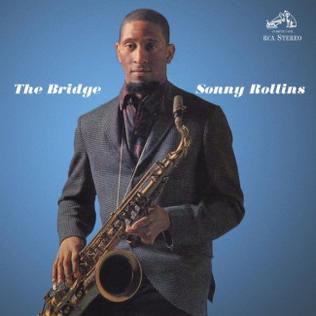 (1961).
(1961).
![]() Bass clarinetist, saxophonist and flutist Eric Dolphy (1928–1964) forms a quintet in 1961 with Booker Little (1938–1961) (tr), Mal Waldron (1925–2002) (p), Richard Davis (b. 1930) (b), and Ed Blackwell (1929–1992) (d).
Bass clarinetist, saxophonist and flutist Eric Dolphy (1928–1964) forms a quintet in 1961 with Booker Little (1938–1961) (tr), Mal Waldron (1925–2002) (p), Richard Davis (b. 1930) (b), and Ed Blackwell (1929–1992) (d).
![]() Pianist Sonny Clark (1931–1963) records "Leapin' and Lopin'" (1961/1962) on Blue Note.
Pianist Sonny Clark (1931–1963) records "Leapin' and Lopin'" (1961/1962) on Blue Note.
![]() Pianist Elmo Hope (1923–1967) records "Homecoming!" (1961) upon returning to New York from Los Angeles.
Pianist Elmo Hope (1923–1967) records "Homecoming!" (1961) upon returning to New York from Los Angeles.
![]() Oliver Nelson (1932–1975), "The Blues and the Abstract Truth," (Impulse!) (1961) with Oliver Nelson (1932–1975) (as, ts), Freddie Hubbard (1938–2008) (tr), Eric Dolphy (1928–1964) (fl, as, bcl), George Barrow (1921–2013) (brs), Bill Evans (1929–1980) (p), Paul Chambers (1935–1969) (b), and Roy Haynes (b. 1925) (d).
Oliver Nelson (1932–1975), "The Blues and the Abstract Truth," (Impulse!) (1961) with Oliver Nelson (1932–1975) (as, ts), Freddie Hubbard (1938–2008) (tr), Eric Dolphy (1928–1964) (fl, as, bcl), George Barrow (1921–2013) (brs), Bill Evans (1929–1980) (p), Paul Chambers (1935–1969) (b), and Roy Haynes (b. 1925) (d).
-
“ . . . a stone classic modern jazz blues and roots album that is free of all hard bop cliché.”[27] (bold and bold italic not in original)
-
“Oliver Nelson’s personal masterpiece 1960’s "The Blues And The Abstract Truth." Along with Miles Davis's "Kind Of Blue," John Coltrane’s "Giant Steps," Ornette Coleman's "Change Of The Century" and Charles Mingus's "Ah Um," Nelson’s "The Blues And The Abstract Truth" remains one of the truly indispensible albums of that era . . . and well beyond.”[28] (bold and bold italic not in original)
-
The Ranting Recluse's review: “"Blues and the Abstract Truth" is [Oliver Nelson's] triumph as a musician for the aspects of not only defining the sound of an era with his all-time classic "Stolen Moments," but on this recording, assembling one of the most potent modern jazz sextets ever. Lead trumpeter Freddie Hubbard is at his peak of performance, while alto saxophonists Nelson and Eric Dolphy (Nelson doubling on tenor) team to form an unlikely union that was simmered to perfection. Bill Evans (p), Paul Chambers (b), and Roy Haynes (d) can do no wrong as a rhythm section. "Stolen Moments" really needs no comments, as its undisputable beauty shines through in a three-part horn harmony fronting Hubbard's lead melody. It's a thing of beauty that is more timeless as the years pass. . . . A must buy for all jazz fans, and a Top Ten or Top Fifty favorite for many.” (bold and bold italic not in original)
![]() Bill Evans Trio — "Sunday at the Village Vanguard" (Riverside) (1961) with Bill Evans (1929–1980) (p), Scott LaFaro (1936–1961) (b), and Paul Motian (1931–2011) (d). Jazz hopes that the Bill Evans Trio's sublime playing counts as jazz, which no one thinks it does not, not even Nicholas Payton (b. 1973)!
Bill Evans Trio — "Sunday at the Village Vanguard" (Riverside) (1961) with Bill Evans (1929–1980) (p), Scott LaFaro (1936–1961) (b), and Paul Motian (1931–2011) (d). Jazz hopes that the Bill Evans Trio's sublime playing counts as jazz, which no one thinks it does not, not even Nicholas Payton (b. 1973)!
![]() Sonny Rollins (b. 1930) puts together a band with Don Cherry (1936–1995) (tr), Bob Cranshaw (1932–2016) (b), and Billy Higgins (1936–2001) (d) making the album "Our Man in Jazz" (1962).
Sonny Rollins (b. 1930) puts together a band with Don Cherry (1936–1995) (tr), Bob Cranshaw (1932–2016) (b), and Billy Higgins (1936–2001) (d) making the album "Our Man in Jazz" (1962).
![]() Pianist Bill Evans (1929–1980) records "Interplay" (1962/1963). Over the next twelve years, Evans records a lot.
Pianist Bill Evans (1929–1980) records "Interplay" (1962/1963). Over the next twelve years, Evans records a lot.
![]() Albert Ayler (1936–1970)
Albert Ayler (1936–1970)  makes his recording debut in Europe in 1962. The "First Recordings of Albert Ayler" is recorded and available on Sonet CD.
makes his recording debut in Europe in 1962. The "First Recordings of Albert Ayler" is recorded and available on Sonet CD.
![]() Duke Ellington records "The Money Jungle" for Blue Note in September 1962 with Max Roach and Charles Mingus.
Duke Ellington records "The Money Jungle" for Blue Note in September 1962 with Max Roach and Charles Mingus.
![]() Tenor saxophonist Stan Getz records the album Jazz Samba (1962).
Tenor saxophonist Stan Getz records the album Jazz Samba (1962).
![]() Charles Mingus, "The Black Saint and the Sinner Lady," (Impulse! Records) [Rec. 1963] Charles Mingus, (double bass & piano & composer), Jerome Richardson (soprano and baritone saxophone & flute), Charlie Mariano (alto saxophone), Dick Hafer (tenor saxophone & flute), Rolf Ericson (trumpet), Richard Williams (trumpet), Quentin Jackson (trombone), Don Butterfield (tuba & contrabass trombone), Jaki Byard (piano), Jay Berliner (classical guitar), Dannie Richmond (drums), Bob Hammer (arranger).
Charles Mingus, "The Black Saint and the Sinner Lady," (Impulse! Records) [Rec. 1963] Charles Mingus, (double bass & piano & composer), Jerome Richardson (soprano and baritone saxophone & flute), Charlie Mariano (alto saxophone), Dick Hafer (tenor saxophone & flute), Rolf Ericson (trumpet), Richard Williams (trumpet), Quentin Jackson (trombone), Don Butterfield (tuba & contrabass trombone), Jaki Byard (piano), Jay Berliner (classical guitar), Dannie Richmond (drums), Bob Hammer (arranger).
![]() Tenor sax man Archie Shepp joins the New York Contemporary Five in 1963 with Don Cherry on pocket trumpet, John Tchicai on alto sax, Don Moore on bass and J.C. Moses on drums. Their debut album is the excellent "Archie Shepp & The New York Contemporary Five" (1964) on Storyville.
Tenor sax man Archie Shepp joins the New York Contemporary Five in 1963 with Don Cherry on pocket trumpet, John Tchicai on alto sax, Don Moore on bass and J.C. Moses on drums. Their debut album is the excellent "Archie Shepp & The New York Contemporary Five" (1964) on Storyville.
![]() Archie Shepp records a tribute to the still alive Coltrane called "Four For Trane" (1964).
Archie Shepp records a tribute to the still alive Coltrane called "Four For Trane" (1964).
![]() Horace Silver records one of the best hard hop albums, "Song for My Father" (1964).
Horace Silver records one of the best hard hop albums, "Song for My Father" (1964).
![]() Pianist Andrew Hill cuts his first Blue Note LP's "Black Fire" and "Smokestack" (1964).
Pianist Andrew Hill cuts his first Blue Note LP's "Black Fire" and "Smokestack" (1964).
![]() Guitarist Kenny Burrell records his finest and most successful album, "Midnight Blue" (1964).
Guitarist Kenny Burrell records his finest and most successful album, "Midnight Blue" (1964).
![]() Grant Green records his classic album "Idle Moments" (1964). The guitarist gets ample support from saxophonist Joe Henderson and vibist Bobby Hutcherson. This landmark release earns Green the reputation as one of jazz's most versatile guitarists.
Grant Green records his classic album "Idle Moments" (1964). The guitarist gets ample support from saxophonist Joe Henderson and vibist Bobby Hutcherson. This landmark release earns Green the reputation as one of jazz's most versatile guitarists.
![]() "Cast Your Fate to the Wind" (1964) by Vince Guaraldi becomes a Gold Record winner and earns the Grammy as Best Instrumental Jazz Composition.
"Cast Your Fate to the Wind" (1964) by Vince Guaraldi becomes a Gold Record winner and earns the Grammy as Best Instrumental Jazz Composition.
![]() Trumpeter Lee Morgan records "The Sidewinder" (Blue Note) 1964, which will rise to number 25 on the Billboard pop album chart.
Trumpeter Lee Morgan records "The Sidewinder" (Blue Note) 1964, which will rise to number 25 on the Billboard pop album chart.
![]() Pianist Andrew Hill records "Point of Departure" on Blue Note in March 1964 with reed player Eric Dolphy, Joe Henderson (ts), Kenny Dorham (tr), Richard Davis (b), and Tony Williams (d).
Pianist Andrew Hill records "Point of Departure" on Blue Note in March 1964 with reed player Eric Dolphy, Joe Henderson (ts), Kenny Dorham (tr), Richard Davis (b), and Tony Williams (d).
![]() Pharoah Sanders makes his recording debut with "Pharoah's First" (1964) on ESP records.
Pharoah Sanders makes his recording debut with "Pharoah's First" (1964) on ESP records.
![]() Albert Ayler records "Spiritual Unity" (1965) with bassist Gary Peacock and drummer Sunny Murray, the first release on Bernard Stollman's ESP label.
Albert Ayler records "Spiritual Unity" (1965) with bassist Gary Peacock and drummer Sunny Murray, the first release on Bernard Stollman's ESP label.
![]() Saxophonist Archie Shepp records his Impulse! debut, Four For Trane, with alto saxophonist John Tchicai, trombonist Roswell Rudd on trombone, bassist Reggie Workman, and drummer Charles Moffett. (1965)
Saxophonist Archie Shepp records his Impulse! debut, Four For Trane, with alto saxophonist John Tchicai, trombonist Roswell Rudd on trombone, bassist Reggie Workman, and drummer Charles Moffett. (1965)
![]() Vibraphone player Bobby Hutcherson records Dialogue (Blue Note) with trumpeter Freddie Hubbard, reedist Sam Rivers, pianist Andrew Hill, bassist Richard Davis, and drummer Joe Chambers (1965).
Vibraphone player Bobby Hutcherson records Dialogue (Blue Note) with trumpeter Freddie Hubbard, reedist Sam Rivers, pianist Andrew Hill, bassist Richard Davis, and drummer Joe Chambers (1965).
![]() Herbie Hancock records his "Maiden Voyage" (Blue Note) (1965).
Herbie Hancock records his "Maiden Voyage" (Blue Note) (1965).
![]() The AACM (Association for the Advancement of Creative Musicians) forms in Chicago (1965).
The AACM (Association for the Advancement of Creative Musicians) forms in Chicago (1965).
![]() Baritone sax player Gerry Mulligan records "Night Lights" (Mercury) (1965) with trumpeter Art Farmer, trombonist Bob Brookmeyer, guitarist Jim Hall, bassist Bill Crow, and drummer Dave Bailey. Mulligan also plays clarinet and piano.
Baritone sax player Gerry Mulligan records "Night Lights" (Mercury) (1965) with trumpeter Art Farmer, trombonist Bob Brookmeyer, guitarist Jim Hall, bassist Bill Crow, and drummer Dave Bailey. Mulligan also plays clarinet and piano.
![]() Alto saxophonist Cannonball Adderley records the live Mercy, Mercy, Mercy! (Blue Note) (1966) composed by his acoustic/electric pianist Joe Zawinul.
Alto saxophonist Cannonball Adderley records the live Mercy, Mercy, Mercy! (Blue Note) (1966) composed by his acoustic/electric pianist Joe Zawinul.
![]() Eric Dolphy - "Out To Lunch" (Blue Note) [Rec. 1964] Eric Dolphy (fl, as, b cl), Freddie Hubbard (tr), Bobby Hutcherson (vibes), Richard Davis (b), and Tony Williams (d).
Eric Dolphy - "Out To Lunch" (Blue Note) [Rec. 1964] Eric Dolphy (fl, as, b cl), Freddie Hubbard (tr), Bobby Hutcherson (vibes), Richard Davis (b), and Tony Williams (d).
- The album presents a significant radicalization of jazz into free jazz.
![]() Albert Ayler Trio, "Spiritual Unity," (ESP-Disk) [Rec. 1964] Albert Ayler (ts), Gary Peacock (b), and Sunny Murray (d).
Albert Ayler Trio, "Spiritual Unity," (ESP-Disk) [Rec. 1964] Albert Ayler (ts), Gary Peacock (b), and Sunny Murray (d).
- No one thinks this album is integrating with pop music. In a review for the website All About Jazz, Mark Corroto called the album "Thirty minutes that changed the direction of jazz." He continued: "Fifty years after the recording of Albert Ayler's "Spiritual Unity," the music (and the man) are still causing tumult.” It stands on its own within the jazz tradition, what Payton prefers to call lineage. Is his lineage in what people have called the jazz tradition?
![]() Drummer Tony Williams (1945–1997) forms an early fusion band called Lifetime with guitarist John McLaughlin (b. 1942) and organist Larry Young (1940–1978), recording Emergency! (Polydor)
Drummer Tony Williams (1945–1997) forms an early fusion band called Lifetime with guitarist John McLaughlin (b. 1942) and organist Larry Young (1940–1978), recording Emergency! (Polydor)  (1969).
(1969).
Undoubtedly many of the above albums from the 1960s are considered jazz by supporters of the genre. No one thinks Oliver Nelson's masterpiece, 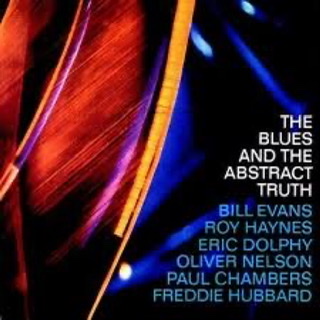 "The Blues and the Abstract Truth"
"The Blues and the Abstract Truth" 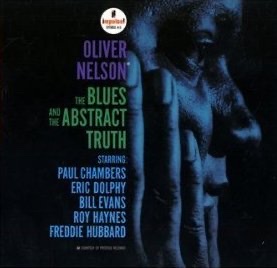 is anything other than a jazz album. If Payton were correct that jazz died in 1959, what are all of these many jazz albums found every decade afterward? Therefore, jazz did not die in 1959 and arguably remains alive in the 21st century, as the below samples from every subsequent decade demonstrate. Hear for yourself!
is anything other than a jazz album. If Payton were correct that jazz died in 1959, what are all of these many jazz albums found every decade afterward? Therefore, jazz did not die in 1959 and arguably remains alive in the 21st century, as the below samples from every subsequent decade demonstrate. Hear for yourself!
![]() To see and hear samples in a jazz tradition from the 1960s, click on "Jazz Albums That Shook The World: The 1960s, Jazzwise.com, September 10, 2019.
To see and hear samples in a jazz tradition from the 1960s, click on "Jazz Albums That Shook The World: The 1960s, Jazzwise.com, September 10, 2019.
![]() See and hear "The 25 Best Jazz Tunes of 1960."
See and hear "The 25 Best Jazz Tunes of 1960." 
Great Jazz from America in the 1970s[edit]
If jazz did not die in 1959, it might still be alive in the 1970s in the United States 🇺🇸.
➢ What albums are candidates for great jazz made in America in the 1970s?
![]() See Piero Scaruffi's best jazz of the 1970s.
See Piero Scaruffi's best jazz of the 1970s.
- NOTE: Click on any album cover for more information about it.
![]() Dreams, a fusion group featuring Billy Cobham plus Randy and Mike Brecker, releases its self-titled debut on Columbia (1970).
Dreams, a fusion group featuring Billy Cobham plus Randy and Mike Brecker, releases its self-titled debut on Columbia (1970).
![]() Saxophonist Wayne Shorter, pianist Joe Zawinul, bassist Miroslav Vitous, drummer Alphonse Mouzon and percussionist Airto Moreira form the fusion supergroup Weather Report (1970).
Saxophonist Wayne Shorter, pianist Joe Zawinul, bassist Miroslav Vitous, drummer Alphonse Mouzon and percussionist Airto Moreira form the fusion supergroup Weather Report (1970).
![]() Pianist Chick Corea, reedist/percussionist Anthony Braxton, bassist Dave Holland and drummer Barry Altschul form the free jazz group Circle. They record "Early Circle" and "Circulus" (Blue Note) (1970). The rhythm section of the group also records "Song of Singing" (Blue Note) (1970) under Corea's name.
Pianist Chick Corea, reedist/percussionist Anthony Braxton, bassist Dave Holland and drummer Barry Altschul form the free jazz group Circle. They record "Early Circle" and "Circulus" (Blue Note) (1970). The rhythm section of the group also records "Song of Singing" (Blue Note) (1970) under Corea's name.
![]() Duke Ellington records "New Orleans Suite" (Atlantic) (1970).
Duke Ellington records "New Orleans Suite" (Atlantic) (1970).
![]() The fusion group Weather Report records its eponymous first LP for Columbia (1971). The group consists at this time of Joe Zawinul on keyboards, Wayne Shorter on soprano saxophone, Miroslav Vitous on bass, Alphonse Mouzon on drums and Airto Moreira on percussion.
The fusion group Weather Report records its eponymous first LP for Columbia (1971). The group consists at this time of Joe Zawinul on keyboards, Wayne Shorter on soprano saxophone, Miroslav Vitous on bass, Alphonse Mouzon on drums and Airto Moreira on percussion.
![]() Pianist Chick Corea records "Piano Improvisations" Vols 1 and 2 (ECM) (1971), two records of solo improvisation consisting mostly of Corea tunes.
Pianist Chick Corea records "Piano Improvisations" Vols 1 and 2 (ECM) (1971), two records of solo improvisation consisting mostly of Corea tunes.
![]() Drummer Billy Cobham records "Spectrum" (Atlantic) (1973) with Tony Bolin on guitar, Jan Hammer on keyboards, Lee Sklar on bass, Joe Farrell on flute and sax, Jimmy Owens on flugelhorn, John Tropea on guitar, Ron Carter on bass, and Ray Barretto on congas.
Drummer Billy Cobham records "Spectrum" (Atlantic) (1973) with Tony Bolin on guitar, Jan Hammer on keyboards, Lee Sklar on bass, Joe Farrell on flute and sax, Jimmy Owens on flugelhorn, John Tropea on guitar, Ron Carter on bass, and Ray Barretto on congas.
![]() Fusion band Weather Report finishes recording its fourth album, "Mysterious Traveler" (Columbia) (1974).
Fusion band Weather Report finishes recording its fourth album, "Mysterious Traveler" (Columbia) (1974).
![]() Saxophonist Wayne Shorter records the samba-influenced "Native Dancer" (Columbia) (1974) with acoustic/electric pianist Herbie Hancock, singer Milton Nascimento, and percussionist Airto Moreira, among others.
Saxophonist Wayne Shorter records the samba-influenced "Native Dancer" (Columbia) (1974) with acoustic/electric pianist Herbie Hancock, singer Milton Nascimento, and percussionist Airto Moreira, among others.
![]() Guitarist John Abercrombie records "Timeless" (ECM) (1974) with Jan Hammer on keyboards and Jack DeJohnette on drums.
Guitarist John Abercrombie records "Timeless" (ECM) (1974) with Jan Hammer on keyboards and Jack DeJohnette on drums.
![]() John McLaughlin's Mahavishnu Orchestra, "Inner Mounting Flame"
John McLaughlin's Mahavishnu Orchestra, "Inner Mounting Flame"  (Columbia)
(Columbia)
- John McLaughlin (g), Jerry Goodman (violin), Jan Hammer (kyb), Rick Laird (b), and Billy Cobham (d). [recorded August 1971; released November 1972]
- It is one of the greatest jazz-rock fusion albums ever made. Not a straight-ahead jazz album because of the rock pulsations. Integrating jazz with other genre forms, including rock music that Wikipedia: "Inner Mounting Flame" quotes the 1998 review by JazzTimes critic Bill Milkwowski that “it was numbers like "The Noonward Race," (click on song titles to watch or hear incredible live performances up close) "Vital Transformation" and especially "Awakening," fueled by Billy Cobham's smoldering intensity on the kit and McLaughlin’s raging, distortion-soaked guitar lines, that really grabbed rock crowds.”[29] “Combining the improvisational elements of jazz with the volume and energy of rock music, the group—who also brought elements of Far Eastern music, R&B, Classical and occasionally even Country to the table—created music that was often intricate and complex, performed by musicians who's virtuosity thrilled audiences and critics alike.”[30]
![]() Chick Corea, "Return to Forever"
Chick Corea, "Return to Forever" 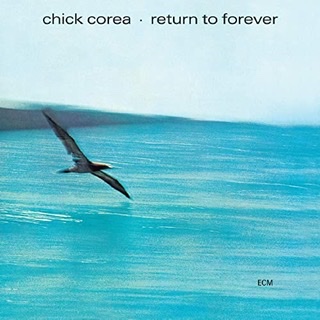 (ECM)
(ECM)
- Chick Corea (el p), Joe Farrell (f, ss), Stanley Clarke (el b), Airto Moreira (d, perc), and Flora Purim (v). [recorded 1972]
- Jazz fusion integrating with musical elements from Latin America, Brazil and dreamily smooth vocals from Flora Purim. Outstanding keyboard work by Corea. Blending with other musical cultures, but no direct link to pop music of the day.
![]() Herbie Hancock, "Head Hunters"
Herbie Hancock, "Head Hunters"  (Columbia)
(Columbia)
- Herbie Hancock (kyb), Bennie Maupin (saxes, fl, b cl), Paul Jackson (b), Harvey Mason (d), and Bill Summers (perc). [recorded 1973]
![]() Keith Jarrett, The Köln Concert
Keith Jarrett, The Köln Concert  (ECM)
(ECM)
- Keith Jarrett solo piano. Jarrett here is at his most lyrical improvising and it seems like jazz to many listeners. [recorded 1975]
![]() Weather Report, "Heavy Weather"
Weather Report, "Heavy Weather" 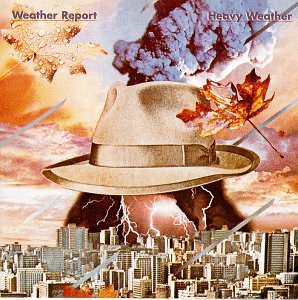 (Columbia)
(Columbia)
- Joe Zawinul (kyb), Wayne Shorter (ts, ss), Jaco Pastorius (b), Alex Acuña (d), and Manolo Badrena (perc). [recorded 1976]
![]() Art Ensemble of Chicago
Art Ensemble of Chicago ![]() (1972)
(1972)
- Saxophonists Roscoe Mitchell and Joseph Jarman, trumpeter Lester Bowie, bassist Malachi Favors, and later drummer Famoudou Don Moye. This group of players (and with others as time progressed) recorded more than thirty-three albums from 1971–2003. If only one of them is a jazz album, then jazz is not dead (yet)! The Birmingham Times includes this band as one of the ten most extraordinary in jazz:
“The Art Ensemble of Chicago enjoyed a critical reputation as the finest and most influential avant-garde jazz ensemble of the 1970s and 1980s. It all began in the late 1960s and early 1970s, when the Art Ensemble helped pioneer the fusion of jazz with European art music and indigenous African music. (For specific details of various configurations of musical personnel, see "Afro Avant-garde: The essential Art Ensemble of Chicago in 10 records.") It also combined elements of jazz history and pre-history—music from sanctified church services, minstrel shows, and bawdy houses of late-19th- and early-20th-century America—with a modernist spirit of experimentation. Originally comprised of no single individual was greater than the whole. The band was an assortment of composers and improvisers of great individuality. Collectively, they created a compelling and unique entity.”[31] (bold not in original)
- Julius Hemphill (as, ss, fl), Oliver Lake (as, ss), Hamiet Bluiett (bs, alto clarinet), and David Murray (ts, bass clarinet).
“This jazz ensemble, whose sound incorporates elements of free funk and African jazz, has more than two dozen albums to its credit. Founded in 1977, the group mainly recorded and performed as a saxophone quartet, usually with a lineup of two altos, a tenor, and a baritone (reflecting the composition of a classical string quartet), but also was joined occasionally by drummers, bassists, and other musicians. The original members were Julius Hemphill (alto and soprano saxophone, flute), Oliver Lake (alto and soprano saxophone), Hamiet Bluiett (baritone saxophone, alto clarinet), and David Murray (tenor saxophone, bass clarinet). The first three had worked together as members of the Black Artists’ Group in St. Louis, Mo.”[32] (bold not in original)
- A collection of Buddy Rich's (1917–1987) drum solos from around the world recorded live in 1976–1977. These are jazz drum solos so jazz was played past 1959, and they are killer!
![]() Woody Shaw (1944–1989) is rated top jazz trumpeter in a DownBeat magazine poll. His record "Rosewood" (Columbia) (1978) is the number one jazz album in the same poll.
Woody Shaw (1944–1989) is rated top jazz trumpeter in a DownBeat magazine poll. His record "Rosewood" (Columbia) (1978) is the number one jazz album in the same poll.
![]() To see and hear samples in a jazz tradition from the 1970s (mostly in the United States), click on "Jazz Albums That Shook The World: The 1970s," Jazzwise.com, September 10, 2019.
To see and hear samples in a jazz tradition from the 1970s (mostly in the United States), click on "Jazz Albums That Shook The World: The 1970s," Jazzwise.com, September 10, 2019.
Great Jazz from America in the 1980s[edit]
![]() AllAboutJazz.com's 1980s in jazz
AllAboutJazz.com's 1980s in jazz
![]() See Piero Scaruffi's best jazz of the 1980s.
See Piero Scaruffi's best jazz of the 1980s.
![]() Japanese-American pianist, composer, arranger, bandleader, and 2007 NEA jazz master, Toshiko Akiyoshi (b. 1929) records "From Toshiko with Love" (BMG/RCA) (1981) that received two Grammy nominations.
Japanese-American pianist, composer, arranger, bandleader, and 2007 NEA jazz master, Toshiko Akiyoshi (b. 1929) records "From Toshiko with Love" (BMG/RCA) (1981) that received two Grammy nominations.
![]() Miles Davis records "Decoy" (1983) with John Scofield on guitar and Branford Marsalis on saxophone, among others.
Miles Davis records "Decoy" (1983) with John Scofield on guitar and Branford Marsalis on saxophone, among others.
![]() Art Farmer and Benny Golson revive the '60s Jazztet with "Moment to Moment" (Soul Note) (1983).
Art Farmer and Benny Golson revive the '60s Jazztet with "Moment to Moment" (Soul Note) (1983).
![]() Guitarist Pat Metheny collaborates with free sax player Ornette Coleman, bassist Charlie Haden and drummers Jack DeJohnette and Denardo Coleman on "Song X" (Geffen) (1985).
Guitarist Pat Metheny collaborates with free sax player Ornette Coleman, bassist Charlie Haden and drummers Jack DeJohnette and Denardo Coleman on "Song X" (Geffen) (1985).
![]() Guitarists Larry Coryell and Emily Remler collaborate on "Together" (Concord) (1985).
Guitarists Larry Coryell and Emily Remler collaborate on "Together" (Concord) (1985).
![]() "Cobra," conceived and composed in 1984 by alto sax player John Zorn, (b. 1953), is a system with detailed rules but no pre-conceived sequence of events for a group of musical improvisors and a prompter. Wikipedia: "Cobra" reports that Zorn's goal for the composition “was to "harness" the creative developments in improvisation and extended techniques by New York City's downtown scene musicians in a semi-structured way, but "without hindering" their performances; he was interested in telling the musicians when to play, and with whom, but without telling them what to play.” Watch a video of a BBC documentary interviewing Zorn with musicians using his system.
"Cobra," conceived and composed in 1984 by alto sax player John Zorn, (b. 1953), is a system with detailed rules but no pre-conceived sequence of events for a group of musical improvisors and a prompter. Wikipedia: "Cobra" reports that Zorn's goal for the composition “was to "harness" the creative developments in improvisation and extended techniques by New York City's downtown scene musicians in a semi-structured way, but "without hindering" their performances; he was interested in telling the musicians when to play, and with whom, but without telling them what to play.” Watch a video of a BBC documentary interviewing Zorn with musicians using his system.
![]() Electric guitarist John Scofield records "Still Warm" (Gramavision) (1986) with Don Grolnick on keyboards, Darryl Jones on bass and Omar Hakim on drums. This album is produced by Steve Swallow.
Electric guitarist John Scofield records "Still Warm" (Gramavision) (1986) with Don Grolnick on keyboards, Darryl Jones on bass and Omar Hakim on drums. This album is produced by Steve Swallow.
![]() Vibraphonist Bobby Hutcherson, pianist Kenny Barron, bassist Buster Williams, and drummer Al Foster record "In the Vanguard" (1986) live at the Village Vanguard in December.
Vibraphonist Bobby Hutcherson, pianist Kenny Barron, bassist Buster Williams, and drummer Al Foster record "In the Vanguard" (1986) live at the Village Vanguard in December.
![]() Trumpeter Randy Brecker records "In the Idiom" (Denon) (1986) with Joe Henderson on tenor, Ron Carter on bass, David Kikoski on piano, and Al Foster on drums.
Trumpeter Randy Brecker records "In the Idiom" (Denon) (1986) with Joe Henderson on tenor, Ron Carter on bass, David Kikoski on piano, and Al Foster on drums.
![]() British saxophonist Courtney Pine records "Journey to the Urge Within" (Antilles) (1986).
British saxophonist Courtney Pine records "Journey to the Urge Within" (Antilles) (1986).
![]() Miles Davis records "Tutu" (Warner Brothers) (1986).
Miles Davis records "Tutu" (Warner Brothers) (1986).
![]() Miles Davis (1926–1991) with bassist and producer Marcus Miller (b. 1959) produce the soundtrack for "Music from "Siesta"
Miles Davis (1926–1991) with bassist and producer Marcus Miller (b. 1959) produce the soundtrack for "Music from "Siesta"  (Warner) (1987) [click on album cover to hear it], dedicated to Gil Evans (1912–1988).
(Warner) (1987) [click on album cover to hear it], dedicated to Gil Evans (1912–1988).
![]() Pharoah Sanders releases "Africa" (Timeless) (1987), using his experiences with John Coltrane.
Pharoah Sanders releases "Africa" (Timeless) (1987), using his experiences with John Coltrane.
![]() Saxophonist Michael Brecker records the self-titled "Michael Brecker" (Impulse!) (1987) with Pat Metheny on guitar, Charlie Haden on bass, Jack DeJohnette on drums, and Kenny Kirkland on keyboards.
Saxophonist Michael Brecker records the self-titled "Michael Brecker" (Impulse!) (1987) with Pat Metheny on guitar, Charlie Haden on bass, Jack DeJohnette on drums, and Kenny Kirkland on keyboards.
![]() Sax, flute and keyboard player Greg Osby (formerly of M-BASE) debuts as a leader with "Greg Osby and Sound Theatre" (JMT) (1987), featuring Michele Rosewoman on piano, Fusako Yoshida on koto, Kevin McNeal on guitar, Lonnie Plaxico on bass, and Paul Samuels and Terri Lyne Carrington on drums.
Sax, flute and keyboard player Greg Osby (formerly of M-BASE) debuts as a leader with "Greg Osby and Sound Theatre" (JMT) (1987), featuring Michele Rosewoman on piano, Fusako Yoshida on koto, Kevin McNeal on guitar, Lonnie Plaxico on bass, and Paul Samuels and Terri Lyne Carrington on drums.
![]() Electric guitarist Mike Stern (b. 1953) records "Time in Place" (Atlantic) (1987) with Bob Berg and Michael Brecker on tenor sax, Don Grolnick on organ, Jim Beard on keyboards, Jeff Andrews on bass, Peter Erskine on drums, and Don Alias on percussion.
Electric guitarist Mike Stern (b. 1953) records "Time in Place" (Atlantic) (1987) with Bob Berg and Michael Brecker on tenor sax, Don Grolnick on organ, Jim Beard on keyboards, Jeff Andrews on bass, Peter Erskine on drums, and Don Alias on percussion.
![]() Trumpet and flugelhornist Art Farmer records "Blame It On My Youth" (Contemporary) (1988) with pianist James Williams, bassist Rufus Reid, saxophonist Clifford Jordan, and drummer Victor Lewis.
Trumpet and flugelhornist Art Farmer records "Blame It On My Youth" (Contemporary) (1988) with pianist James Williams, bassist Rufus Reid, saxophonist Clifford Jordan, and drummer Victor Lewis.
![]() Guitarist Emily Remler releases "East to Wes" (Concord)n(1988), a tribute to Wes Montgomery with Hank Jones on piano as her last release before dying in 1990 at age 32.
Guitarist Emily Remler releases "East to Wes" (Concord)n(1988), a tribute to Wes Montgomery with Hank Jones on piano as her last release before dying in 1990 at age 32.
![]() Greg Osby records "Mindgames (JMT) (1988) with Geri Allen and Edward Simon on keyboards, Kevin McNeal on guitar, Lonnie Plaxico on bass and Paul Samuels on drums.
Greg Osby records "Mindgames (JMT) (1988) with Geri Allen and Edward Simon on keyboards, Kevin McNeal on guitar, Lonnie Plaxico on bass and Paul Samuels on drums.
![]() Anthony Braxton records the vinyl-only solo saxophone LP London (Solo) (Impetus) (1988).
Anthony Braxton records the vinyl-only solo saxophone LP London (Solo) (Impetus) (1988).
![]() Don Cherry records "Art Deco" (A&M) (1988) with James Clay on tenor sax, Charlie Haden on bass and Billy Higgins on drums.
Don Cherry records "Art Deco" (A&M) (1988) with James Clay on tenor sax, Charlie Haden on bass and Billy Higgins on drums.
Great Jazz from America in the 1990s[edit]
![]() See Piero Scaruffi's best jazz of the 1990s.
See Piero Scaruffi's best jazz of the 1990s.
![]() Pianist Renee Rosnes records "For The Moment" (1990) with Steve Wilson and Joe Henderson.
Pianist Renee Rosnes records "For The Moment" (1990) with Steve Wilson and Joe Henderson.
![]() The women's big band Diva Jazz Orchestra (active 1992–present).
The women's big band Diva Jazz Orchestra (active 1992–present).
![]() Christian Scott aTunde Adjuah (b. 1983) (active 1996–present)
Christian Scott aTunde Adjuah (b. 1983) (active 1996–present)
(All photographs creative commons licensed from Flickr.com. Background photo by Philippe Agnifili (2017). Other photos clockwise from upper right by Timothy Forbes (2012), on watch by **AB** (2012), lower right corner by Evert-Jan Hielema (2007), Justin de Nooijer (2014), Philippe Agnifili (2015), Timothy Forbes (2012), Timothy Forbes (2012), **AB** (2012), Mitch Huang (2009))
![]() Recipient of the JazzFM Innovator of the year Award in 2016
Recipient of the JazzFM Innovator of the year Award in 2016
Great Jazz from America in the 2000s[edit]
![]() See Piero Scaruffi's best jazz of the 2000s.
See Piero Scaruffi's best jazz of the 2000s.
- Jazz musicians active in the decade 2000–2010 include:
![]() pianists Brad Mehldau, Jason Moran, and Vijay Iyer
pianists Brad Mehldau, Jason Moran, and Vijay Iyer
![]() guitarist Kurt Rosenwinkel
guitarist Kurt Rosenwinkel
![]() vibraphonist Stefon Harris
vibraphonist Stefon Harris  (Photo by Elizabeth Leitzell/Courtesy of the artist)
(Photo by Elizabeth Leitzell/Courtesy of the artist)
![]() trumpeters Roy Hargrove and Terence Blanchard
trumpeters Roy Hargrove and Terence Blanchard
![]() saxophonists Chris Potter and Joshua Redman
saxophonists Chris Potter and Joshua Redman
![]() bassist Christian McBride
bassist Christian McBride
Great Jazz from America in 2010s to 2021[edit]
![]() See Piero Scaruffi's best jazz of the 2010s.
See Piero Scaruffi's best jazz of the 2010s.
![]() See Piero Scaruffi's best jazz of the 2020s.
See Piero Scaruffi's best jazz of the 2020s.
![]() Jeff Ballard Trio "Time's Tales"
Jeff Ballard Trio "Time's Tales"  (Sony/OKeh Records) (2014)
(Sony/OKeh Records) (2014)
![]() Aaron Diehl, "The Vagabond" (Mack Avenue) (2019)
Aaron Diehl, "The Vagabond" (Mack Avenue) (2019)
- Aaron Diehl (p), Paul Sikivie (b), and Gregory Hutchinson (d) (recorded February 2019).
-
 Aaron Diehl has a terrific touch and feel for rhythm on the piano. He is playing jazz, and no other genre of music on the opening track, "Polaris" that reviewer John Fordham describes as “restrained, delicately soft-struck and rather Modern Jazz Quartet-like "Polaris."”[33]
Aaron Diehl has a terrific touch and feel for rhythm on the piano. He is playing jazz, and no other genre of music on the opening track, "Polaris" that reviewer John Fordham describes as “restrained, delicately soft-struck and rather Modern Jazz Quartet-like "Polaris."”[33]
-
 The 2013 recipient of the Jazz Journalists Association Award for Up-And-Coming Artist.
The 2013 recipient of the Jazz Journalists Association Award for Up-And-Coming Artist.

-
 One of the youngest artists to be honored as the 2014 Monterey Jazz Festival Commission Artist.
One of the youngest artists to be honored as the 2014 Monterey Jazz Festival Commission Artist.
![]() Robert Glasper (b. 1978) on Marian McPartland's Piano Jazz,
Robert Glasper (b. 1978) on Marian McPartland's Piano Jazz, 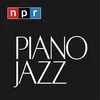 November 13, 2015.
November 13, 2015.
-
 He has been an Artist in Residence at some of the most prestigious jazz festivals and jazz institutions worldwide, including the London Jazz Festival, North Sea Jazz Festival, The Kennedy Center, Hollywood Bowl, Carnegie Hall and the Blue Note Jazz Club.
He has been an Artist in Residence at some of the most prestigious jazz festivals and jazz institutions worldwide, including the London Jazz Festival, North Sea Jazz Festival, The Kennedy Center, Hollywood Bowl, Carnegie Hall and the Blue Note Jazz Club.
-
“Pop is uncharacteristically understated on versions of Timmy Thomas’ 1973 R&B hit “Why Can’t We Live Together” and Donovan’s 1967 pop hit “Sunshine Superman,” with stirring solos by Smith and guitarist Jonathan Kreisberg and rhythmic accompaniment by drummer Johnathan Blake and percussionist Richard Bravo. The six live tracks sandwiched in between, captured at New York’s Jazz Standard in 2017 for a celebration of Smith’s 75th birthday, add tenor saxophonist John Ellis, baritone saxophonist Jason Marshall, trumpeter Sean Jones, and trombonist Robin Eubanks, with powerful results.”[34] (bold not in original)
![]() See Rolling Stone's "Best Jazz of 2018."
See Rolling Stone's "Best Jazz of 2018."
![]() Here's some great jazz from both 2018 and 2021:
Here's some great jazz from both 2018 and 2021:
There is still a lot of interest in the 21st century in seeing what jazz can do with other musics from Arabic, World, Chamber, Classical, Country, Gospel, Latin, or Pop.
![]() JazzFuel.com
JazzFuel.com  lists the top ten "Best Jazz Bass Players in History" covering the decades from 1950 to the present. If there were jazz bass players performing during the last 70 plus years then jazz was not likely dead at anytime from before the 1950s to the present.
lists the top ten "Best Jazz Bass Players in History" covering the decades from 1950 to the present. If there were jazz bass players performing during the last 70 plus years then jazz was not likely dead at anytime from before the 1950s to the present.
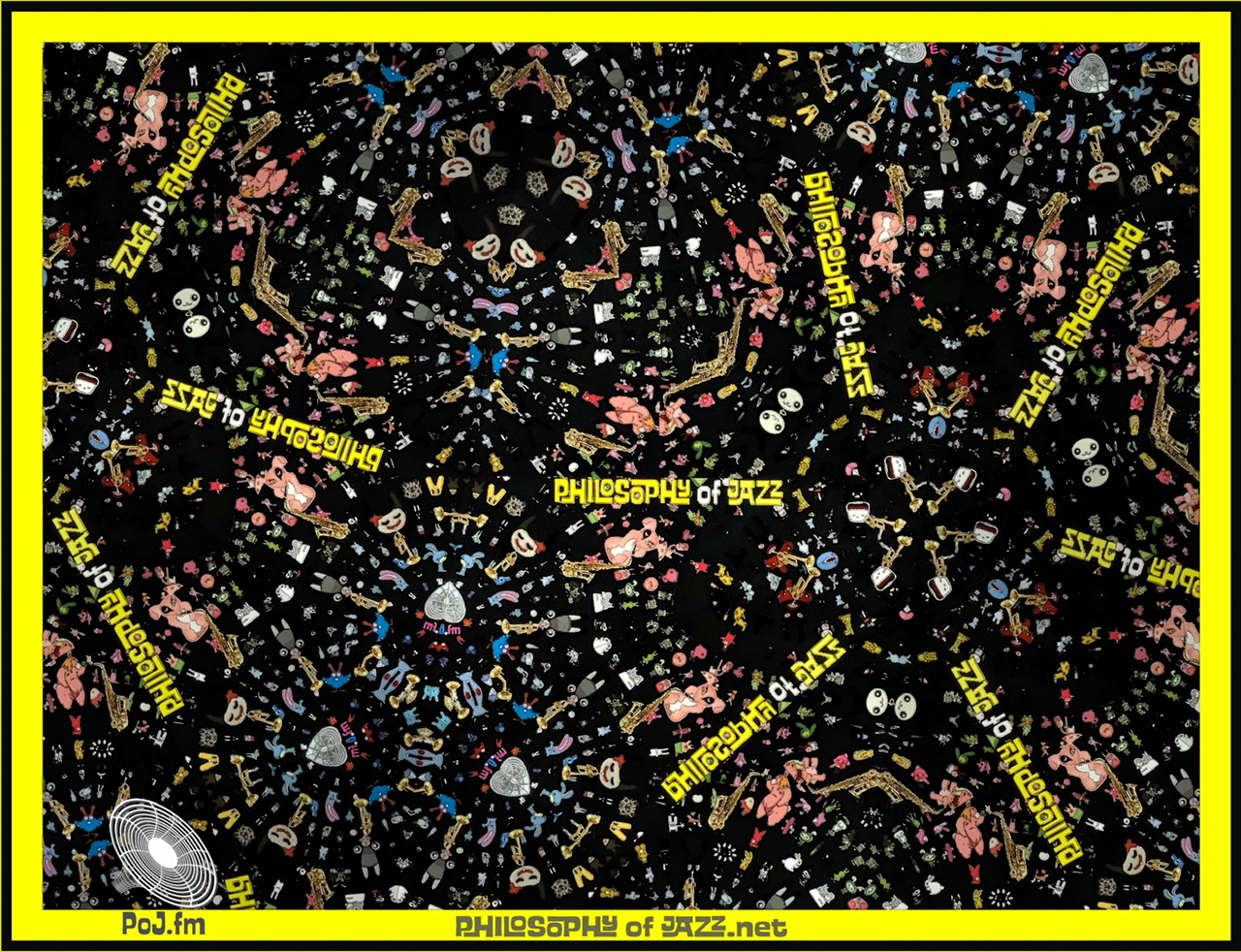
Critique of Nicholas Payton's remarks on the death of jazz[edit]
Anyone who writes aphorisms is not expected to develop justifications at the same time. Nicholas Payton's writing style is no exception to this rule. It is somewhat unfair to criticize any one sentence since he merely asserts them, and you either accept or reject what he says. Nevertheless, some of his claims can be argued to be false. Let's see which ones have some issues. Payton's original assertions are in green font, with commentary by PoJ.fm recessed after them in blue.
“There may be cool individuals who say they play Jazz, but ain’t shit cool about Jazz as a whole.”
- What does cool mean here? Wikipedia: Cool says that “Coolness is an aesthetic of attitude, behavior, comportment, appearance and style which is generally admired. Because of the varied and changing connotations of cool, as well as its subjective nature, the word has no single meaning. It has associations of composure and self-control and often is used as an expression of admiration or approval.”
- The article continues later and reports that “In general, coolness is a positive trait based on the inference that a cultural object (e.g., a person or brand) is autonomous in an appropriate way; that is, the person or brand is not constrained by the norms, expectation of beliefs of others.”
- On these readings, something has a cool aesthetic if it is admired, has composure and self-control, is approved of, and is appropriately autonomous because not constrained by norms or the expectations of others.
- As we go through these traits, it is easy to see that jazz meets them. If jazz meets them, then jazz is cool as a whole, contrary to Payton's tossed-off remarks. Jazz is admired by many. Good jazz musicians have a lot of self-control, musically speaking, since jazz is a performer's medium more than a composer's one where the musicians can deviate from the musical score. Jazz musicians have autonomy, i.e., independence since they can change how they play a song each time it is performed.
- Jazz has not been constrained by norms or the expectations of others since it has led to so many revolutions and creations of new sub-fields of jazz. Each of these sub-genres resulted in revolts of significant changes to prevailing attitudes about jazz, including swing, Bebop, modal, soul jazz, cool jazz, hard-bop, post-bop, or free jazz itself.
“Jazz died when cool stopped being hip.”
- To be hip is to be informed about the latest ideas, styles, and developments. If cool is achieved by being admired because of one's autonomy, can cool ever stop being hip?
“Jazz was a limited idea to begin with.”
- Almost everything is a limited idea in some sense. A dog is not a cat. Does this make the conception of a dog 'limited'? Is this bad?
- Furthermore, how limited an idea could jazz be if it has expanded from Ragtime and Dixieland into swing, Bebop, cool, soul jazz, hard bop, Latin jazz, and free jazz, to name a few?
- If jazz is so 'limited,' how come no one thinks they can define it easily. Should not anything limited be relatively easy to define? Since no one can define jazz easily, it proves it is not so limited.
“Jazz is a label that was forced upon the musicians.”
- Would Payton make a similar claim about the label of Ragtime? Does he think Ragtime was a label forced upon Ragtime musicians? It seems improbable that he believes this.
- Can anyone force a label upon something? The term "Ragtime" was appropriate since they were ragging the music, meaning applying syncopation to it. The origin of the word "jazz" is likely originally meaning "enthusiasm" and from its use in baseball sports writing where it meant pep, vigor, and energy. Does early jazz have enthusiasm, vigor, pep, and energy? Yes, it did, because it too used syncopation and improvisation, revealing the pep and energy of this way of playing music and in an enthusiastic manner.
- Dr. Lewis Porter (b. 1951) agrees that the word "jazz" came from baseball sports writing and that it was not racist when first applied to music in his article "Origins of the word "jazz."
“The musicians should’ve never accepted that idea.”
- Musicians had little choice of whether to accept that their music is labeled as jazz. Throughout jazz's history, several musicians have disliked the label of jazz, including Duke Ellington, Miles Davis, Rahsaan Roland Kirk, Max Roach, and several more. The vast majority of musicians have accepted that their genre of music is called jazz—many more have accepted the label than have rejected it.
“Jazz ain’t shit.”
- Here Payton gets carried away by his rhetoric. He knows that jazz existed from 1916 to at least 1959. In that period of time, this music was played by incredibly talented improvising musicians, such as Louis Armstrong, Charlie Parker, Thelonious Monk, and Lester Young, to name a handful. Payton does not believe that what these musicians were playing was caca.
“Jazz is incestuous.”
- What does this even mean for a genre of music? Maybe it means that the music interacts with past versions of itself. There is no problem with music doing that. When Herbie Hancock reinterprets a Nirvana song in a jazz manner, is that incestuous? Even if it is, there is nothing wrong with what Hancock strove to achieve.
“Jazz separated itself from American popular music.”
- The word "separated" can have several meanings. Jazz did 'separate' itself from popular music in one sense of striving to be a serious art form that popular music does not strive for as much. Jazz since Bebop uses more complex harmonies and sophisticated musical techniques typically not found in much popular music. In this sense, jazz did strive to 'separate' itself from pop music.
- However, in another sense, jazz is still connected to popular music by producing jazz versions of popular songs. For example, in the popular musical "My Fair Lady," the song "My Favorite Things" was taken over and made into a vehicle for John Coltrane's impressive jazz interpretation of that tune. Many jazz albums have covered popular music. Of more recent vintage, in 1996 Herbie Hancock in his album "The New Standard" covers a Beatles' tune ("Norwegian Wood"), Kurt Cobain's Nirvana song "All Apologies," "New York Minute" (Don Henley, Danny Kortchmar, Kai Winding), "Mercy Street" (Peter Gabriel), "When Can I See You" (Kenny "Babyface" Edmonds), "You've Got It Bad Girl" (Stevie Wonder, Yvonne Wright), "Love Is Stronger Than Pride" (Sade Adu, Andrew Hale, Stuart Matthewman), "Thieves in the Temple" (Prince), and Steeley Dan's "Your Gold Teeth II" (Donald Fagen, Walter Becker). In 2000, the band The Bad Plus covered Nirvana's "Smells Like Teen Spirit."
Reviewing Hancock's album, "The New Standard," music critic Scott Yanow concludes that:
“On first glance this record would not seem to have much promise from a jazz standpoint. Herbie Hancock performs a set of tunes which include numbers from the likes of Peter Gabriel, Stevie Wonder, Sade, Paul Simon, Prince, the Beatles ("Norwegian Wood") and Kurt Cobain. However by adding vamps, reharmonizing the chord structures, sometimes quickly discarding the melodies and utilizing an all-star band, Hancock was able to transform the potentially unrewarding music into creative jazz. Hancock, who sticks to acoustic piano, shows that he is still in prime form, taking quite a few fiery solos. With Michael Brecker on tenor and surprisingly effective soprano, guitarist John Scofield, bassist Dave Holland, drummer Jack DeJohnette and percussionist Don Alias (along with an occasional horn or string section that was dubbed in later), the results are often quite hard-swinging and certainly never predictable. Although it is doubtful that any of these songs will ever become a jazz standard, Herbie Hancock has successfully created a memorable set of "new" music. Well worth investigating.”[35] (bold and bold italic not in original)
Big mistake.
The music never recovered.
Playing Jazz is like running on a treadmill: you may break a sweat, but ultimately you ain’t going nowhere.
Jazz is a marketing ploy that serves an elite few.
The elite make all the money while they tell the true artists it’s cool to be broke.
I am not speaking of so-called Jazz’s improvisational aspects.
Improvisation by its very nature can never be passé, but mindsets are invariably deadly.
Jazz has nothing to do with music or being cool.
It’s a marketing idea.
A glaring example of what’s wrong with Jazz is how people fight over it.
People are too afraid to let go of a name that is killing the spirit of the music.
Life is bigger than music, unless you love and/or play Jazz.
Miles Davis personified cool and he hated Jazz.
What is Jazz anyway?
“When you’re truly creating you don’t have time to think about what to call it.”
- Maybe. However, we now have the time to reflect and knowledgeable evaluators judge much music since 1959 to be jazz.
“Playing Jazz is like using the rear-view mirror to drive your car on the freeway 🛣.”
- What might Payton have in mind when he makes this rear-view mirror comment? Were one to be looking in one's rear-view mirror one would be looking behind or back. Payton might believe that playing jazz requires one to take a step backwards from creativity. It is true that jazz musicians are generally speaking required or expected to know many jazz tunes (the 'standards') from the past. Has this prevented jazz from surging forward over its history? Far from it given all of the numerous new sub-genres of jazz that have been developed since Ragtime, Swing, and Bebop.
If you think Jazz is a style of music, you’ll never begin to understand.
Jazz is a brand.
Jazz ain’t music, it’s marketing, and bad marketing at that.
It has never been, nor will it ever be, music.
Here lies Jazz (1916 – 1959).
I believe music to be more of a medium than a brand.[36] (bold not in original)
Nicholas Payton walks back his comments on the death of jazz[edit]
In the excerpt below from Richard Scheinin's interview with Nicholas Payton on October 8, 2013, Payton concedes all of the following, thereby walking back most of his controversial claims about jazz:
- (1) Jazz is not dead.
- (2) There is still music and musicians playing jazz today, so jazz exists now and never died in 1959.
- (3) He recognizes that he cannot get rid of the word "jazz" as a label for a style of music, whether he wants to or not.
- (4) It is unnecessary to try to get rid of the usage of the word "jazz," and it would be unrealistic to try to do so.
- (5) Most of the music that is currently called jazz IS jazz.
- (6) Payton agrees that he respects jazz musicians labeled as such: “ . . . if people want to call what they do jazz and whatever comes along with that, I respect that. I’m not trying to change that. Because that deserves to be here, too.” (bold and bold italic not in original)
Now, that is walking it back, baby!
Richard Scheinin's complete interview with Nicholas Payton October 8, 2013 with bolded excerpts from that interview proving all six claims made above.
Q: (by Richard Scheinin) When we first exchanged e-mails, you told me that I’d misunderstood your #BAM posts – that you’ve never set the goal of removing the word “jazz” from common parlance, as I’d written. You explained that you personally object to the word, but that you’re not trying to get others to deep-six the word.
But you’ve put the word “jazz” in the same sentence as the N-word, drawing a connection between them. So to me, it doesn’t feel like a huge leap to think that you’re trying to create a movement where the music moves forward while the word “jazz” is left behind and replaced with your term – #BAM, or Black American Music.
A: (by Nicholas Payton) First of all, I don’t think it’s realistic or necessary. As much as I talk about racism, do I seek to try and create to live in a world where there’s no prejudice? No, that’s part of the human experience, and I think people should be allowed to feel hate or whatever.
If a musician would like to call what they play “jazz”—okay, and jazz does exist. And most of the music that is called jazz IS jazz. But as far as the real true spirit of music and ancestry, that is not jazz. So if people want to call what they do jazz and whatever comes along with that, I respect that. I’m not trying to change that. Because that deserves to be here, too. I’m not trying to sanitize the world and try to create some kind of utopia where only the good things exist.
Q: Will you lay out your arguments for what you object to in the word “jazz.”
A: Jazz is the white appropriation of Black American music. It’s a caricaturization of the music that Bolden and King Oliver and Armstrong and others created, and the first documented jazz recording was by the Original Dixieland Jazz Band. And as for “Dixieland” — we know the connotation that “Dixie” has to the Confederate South and slavery. And “jazz,” the word itself, is of dubious origin at best. The first documented printed use of the word is tied to baseball.
It had to do with some kind of English or pizzazz that you put on the ball. I think it was like 1913, and was published in the San Francisco Chronicle or some place out there.
And a lot of the early musicians refuted the title. They didn’t want the association with the word. And even cats like Louis Armstrong said, “We didn’t call it that.” It was not called that in New Orleans. It would’ve been “blues” or “ragtime.” And the first band that made a record and called it “jazz,” that was the Original Dixieland Jazz Band. It was minstrelsy. The cats were making animal sounds and a mockery of this beautiful music made by the likes of King Oliver and Louis Armstrong. (bold and bold italic not in original)
Evaluating why jazz is dead is false[edit]
The topic or question of whether jazz is dead is fraught with problems created by its detractors.
One of the musicians who find severe problems using the term "jazz" is New Orleans post-modern trumpeter Nicholas Payton (b. 1973). In 2011, Payton put forth a manifesto declaring jazz dead since 1959. Here's a brief excerpt from his posting:
“If you think Jazz is a style of music, you’ll never begin to understand.”
Does Payton think any styles of music exist? If there were no styles, then jazz could not have or be one. On its face, the reference to music styles suggests that there are such things, but jazz is not amongst them. Let us consider this point in some detail even though we just saw Payton conceding in 2013 that jazz exists now and it's a genre of music.
Styles of music[edit]
➢ What is a style of music? Here is how Wikipedia: Genres of music describes them.
- A category of artistic composition, as in music or literature, characterized by similarities in form, style, or subject matter. Origin: early 19th century: French, literally ‘a kind.’
- The term music genre is used to refer to a variety of facets of music, including the period during which a musical composition was written, its style, its instrumentation and treatment of those instruments, its form and function, its means of transmission, its means of dissemination, and the location of its geographical origins sometimes crossed with the cultural or ethnic background of the composer.
- “A music genre is a conventional category that identifies pieces of music as belonging to a shared tradition or set of conventions. It is to be distinguished from musical form and musical style, although in practice these terms are sometimes used interchangeably.”[37]
Seven problems with jazz being dead[edit]
Notice several possible problems for anyone who envisions jazz is dead.
-
 (1) If jazz is genuinely dead, it must have been 'alive' earlier, or it would not be possible to die. Given this truth, is Payton presuming that there used to exist a coherent musical tradition sufficient to comprise a distinct genre of music from 1916 to 1959? If so, then jazz is not dead since it is a particular genre of music. It may well be that such a music genre no longer is an active area of musical concern for practicing musicians, but this would not make the genre itself dead, just no longer utilized.
(1) If jazz is genuinely dead, it must have been 'alive' earlier, or it would not be possible to die. Given this truth, is Payton presuming that there used to exist a coherent musical tradition sufficient to comprise a distinct genre of music from 1916 to 1959? If so, then jazz is not dead since it is a particular genre of music. It may well be that such a music genre no longer is an active area of musical concern for practicing musicians, but this would not make the genre itself dead, just no longer utilized.
- However, even this must be false and false given Payton's understanding since he cavalierly asserts that all of these music styles can still be heard today performed by active musicians. Here's the list that Payton himself provides of these forms of music. He separated each sentence in the quotation below, but here they are all strung together for spatial economy.
“Definitions are retrospective. And if you find yourself getting mad, it’s probably because you know Jazz is dead. Why get upset if what I’m saying doesn’t ring true? I can’t speak for anyone else, but I don’t play Jazz. I play Postmodern New Orleans music. Louis Armstrong and Danny Barker play Traditional New Orleans Music. Ellis Marsalis and James Black play Modern New Orleans music. Kidd Jordan and Clyde Kerr play Avant-garde New Orleans music. Donald Harrison plays Neoclassical New Orleans music. I play Postmodern New Orleans music. I am a part of a lineage. I am a part of a bloodline. My ancestors didn’t play Jazz; they played Traditional, Modern, and Avant-garde New Orleans Music.”[38] (bold not in original)
-
 (2) Boldly stating that Payton's musical ancestors did not play jazz does not make it true. For multiple decades well-informed musicians and musical authorities have understood and labeled a style of performing music with the jazz label. How could it fail to be true that this music was jazz? It could not since even Payton presumes jazz existed between 1916 through 1959 in his original posting. He is the one getting all bent out of shape about needing to establish jazz is dead and is probably sick and tired of people asking him why he isn't playing jazz like he used to with Doc Cheatham (1905–1997) and many of Payton's recordings are in the jazz vein. For proof, knowledgeable persons described Payton's music as being in the jazz genre; look up anything where he plays jazz and see it described that way.
(2) Boldly stating that Payton's musical ancestors did not play jazz does not make it true. For multiple decades well-informed musicians and musical authorities have understood and labeled a style of performing music with the jazz label. How could it fail to be true that this music was jazz? It could not since even Payton presumes jazz existed between 1916 through 1959 in his original posting. He is the one getting all bent out of shape about needing to establish jazz is dead and is probably sick and tired of people asking him why he isn't playing jazz like he used to with Doc Cheatham (1905–1997) and many of Payton's recordings are in the jazz vein. For proof, knowledgeable persons described Payton's music as being in the jazz genre; look up anything where he plays jazz and see it described that way.
-
 (3) Furthermore, Payton has contributed to many other musician's albums who label themselves as playing jazz, such as Eric Alexander (b. 1968) on the recording "Summit Meeting" (2001), with NEA jazz Master (2018) and jazz pianist Joanne Brackeen (b. 1938) on "Pink Elephant Magic"[39] (Arkadia Jazz, 1998), with NEA jazz master (1999) saxophonist Joe Henderson (1937–2001) on "Big Band"[40] (Verve, 1996), with NEA jazz Master (2003) drummer Elvin Jones (1927-2004) on three albums ("Youngblood" (Enja, 1992), "Going Home" (Enja, 1992), "It Don't Mean a Thing" (Enja, 1993), with NEA jazz Master (2008) organist Jimmy Smith (1928–2005) on "Angel Eyes: Ballads & Slow Jams" (Verve, 1996) and Damn! (Verve, 1995), with 2012 U.S. National Medal of Arts New Orleans pianist Allen Toussaint (1938-2015) on his second jazz album, "The Bright Mississippi" (Nonesuch, 2009).
(3) Furthermore, Payton has contributed to many other musician's albums who label themselves as playing jazz, such as Eric Alexander (b. 1968) on the recording "Summit Meeting" (2001), with NEA jazz Master (2018) and jazz pianist Joanne Brackeen (b. 1938) on "Pink Elephant Magic"[39] (Arkadia Jazz, 1998), with NEA jazz master (1999) saxophonist Joe Henderson (1937–2001) on "Big Band"[40] (Verve, 1996), with NEA jazz Master (2003) drummer Elvin Jones (1927-2004) on three albums ("Youngblood" (Enja, 1992), "Going Home" (Enja, 1992), "It Don't Mean a Thing" (Enja, 1993), with NEA jazz Master (2008) organist Jimmy Smith (1928–2005) on "Angel Eyes: Ballads & Slow Jams" (Verve, 1996) and Damn! (Verve, 1995), with 2012 U.S. National Medal of Arts New Orleans pianist Allen Toussaint (1938-2015) on his second jazz album, "The Bright Mississippi" (Nonesuch, 2009).
Payton objects to the term "jazz" because he finds it a racist label imposed upon primarily black musicians by overbearing capitalistic managers and fixers of business practices. For a critique of Payton's claims that denies the racist origins of the word "jazz," see Jon Wertheim's "Nicholas Payton Is Chillin’ On Our Nutz: How One Musician Misrepresented the Facts And Bullied the Jazz Narrative Off Course," NextBop.com, April 3, 2012.
-
 (4) Realize that even Payton needs to refer to music genres to describe differences in approach between musicians. He uses the terms "traditional," "modern," "avant-garde," "neoclassical," and "postmodern." Does Payton believe that these are 'legitimate' kind names for music genres? He uses them to distinguish between the types or styles of music that separate the various musician's kinds of music from each other. Since Payton finds this to be acceptable, then he cannot protest when others do the very same thing but use the label "jazz."
(4) Realize that even Payton needs to refer to music genres to describe differences in approach between musicians. He uses the terms "traditional," "modern," "avant-garde," "neoclassical," and "postmodern." Does Payton believe that these are 'legitimate' kind names for music genres? He uses them to distinguish between the types or styles of music that separate the various musician's kinds of music from each other. Since Payton finds this to be acceptable, then he cannot protest when others do the very same thing but use the label "jazz."
-
 (5) If jazz is dead in 1959, who are all of these NEA Jazz Masters since then, and what music are they playing?
(5) If jazz is dead in 1959, who are all of these NEA Jazz Masters since then, and what music are they playing?
-
 (6) JazzHouse.org's "The Last Post" lists 582 primarily jazz musician's deaths from 1900 to 2009. Many of these musicians have played jazz since 1959. If they were playing jazz, then jazz was not dead.
(6) JazzHouse.org's "The Last Post" lists 582 primarily jazz musician's deaths from 1900 to 2009. Many of these musicians have played jazz since 1959. If they were playing jazz, then jazz was not dead.
-
 (7) Grammy Awards for Best Original Jazz Composition from 1961–1967. A panel of music experts sitting on the Grammy judging panel chose these compositions as the best in jazz for that particular year. These expert evaluations all concurred that these compositions qualified as jazz. Therefore, jazz existed at least up to 1967.
(7) Grammy Awards for Best Original Jazz Composition from 1961–1967. A panel of music experts sitting on the Grammy judging panel chose these compositions as the best in jazz for that particular year. These expert evaluations all concurred that these compositions qualified as jazz. Therefore, jazz existed at least up to 1967.
What could count as the death of jazz?[edit]
Is there any dead music now? Which ones are dead and why? Can dead kinds of music be revived and made alive again? If such rejuvenated music were to happen, was the original music really dead or just lying dormant? Are music perceivers required for determining the death or non-death of a genre of music? What counts as non-death of a kind of music?
One line of argument equates death with being unpopular. This reading means that jazz was alive in the late 1930s and 1940s because it was popular as dance music for couples. After 1945 and the Bebop phenomenon, jazz stopped being as popular with pop culture and became more of a niche market. Currently, jazz records sell around 1–2% of all recorded music genres. Jazz is popular with an older demographic, and this only gets older as time moves on.
Death of a musical genre could mean that it is no longer popular, but what is the minimum amount of popularity to count as non-dead? Not many people make model airplanes from a kit; it was more popular in the 1950s than today. Is model airplane making from a kit dead? Not if you build one, it isn't.
Jazz is only mostly dead on the radio and television[edit]
At the question and answer website Quora, Bruce Edwards, answers the question whether jazz is dead with these responses:
“Jazz is only dead on the radio—in most US cities. Jazz artists are performers first, recording artist second. This is obvious when noticing the success of Jazz festivals around the world.
[New Orleans] Jazz & Heritage Festival drew around 450,000 fans during its seven-day event [in 2019] at the Fair Grounds Race Course, according to a news release announcing attendance numbers. That’s around 25,000 more people than last year’s festival, . . .Notice this comment about the youth audiences: The 2018 Xerox Rochester International Jazz Festival had record attendance, drawing 208,000 across the nine-day event. According to a release from the festival's public relations firm, five headlining shows sold out, . . . There were also a record number of youth workshop attendees and "great" attendance at the jams at the new Hyatt venue.
How about the US west coast? Fillmore Jazz Festival is the largest free Jazz festival on the West Coast, drawing over 100,000 visitors over the Independence Day weekend.
Is there jazz interest in small unpopular southwestern towns? In north Texas, there is the Denton Arts & Jazz Fest where there is a popular university with a prominent music program.
Interest in jazz is noticed more with live performances as we listeners want to witness a musician’s mastery, not just hear it in a recording. A jazz artist is not on stage to dance and twerk his derriere only using a guitar as a prop! Also this interest in connecting with our jazz artists at a live performance is evident when we follow the money.
This particular musician turned over his financial data to the FMC throughout the years 2006–2009. Here are the highlights:
Between 2006 to 2009, the majority of his income came from live performance, whether as a leader or soloist. Touring ranged from a little over 60% to over 91% of his revenue. His U.S. engagements comprise between 56-64% of his touring activity, and Europe is a regular part of his touring schedule as well, comprising some 20-38% of performance revenue. In comparison, money earned from recording was a much smaller, but not negligible portion of his income, ranging from nearly 3% to nearly 18% of his income. Money earned from composing grants and commissions tallied much the same way, accounting for nearly 3% to over 20% of his income. "Knowledge of craft"—i.e., teaching, giving clinics, producing records and advising—accounted from between .3% and 3.6% of his income.”[41] (paragraphs reconfigured for spatial economy and bold and bold italic not in original)
🔲 Of the around thirty responses at Quora.com to the topic of "Is jazz dead?" none of the reviewers believed that jazz was dead! No exceptions.
🔲 Some believe that current jazz may be entering a new golden age. See the article at the Guardian "Is Jazz Entering a New Golden Age?"
🔲 A pop music critic for The New York Times, Jon Caramanica, at his "Popcast," considers the question "Is Today’s Jazz Finally Outrunning the Past?," New York Times, January 5, 2018.
Peter Watrous on jazz in the 1990s[edit]
★ "Thirty Years of Our JazzTimes: The 1990s" — For JazzTimes's 30th anniversary, Peter Watrous looks back at music from the magazine's third decade. Originally published September 1, 2000. Updated January 2, 2020.
Watrous argues that jazz in the 1990s splintered into many sub-categories of jazz as musicians explored new avenues for playing music in a jazz context, including Jam band and jazz-fusion, or the rise of the jazz soloist playing over funk or post-Grateful Dead backgrounds.
Watrous believes this was started by saxophonists Branford Marsalis (b. 1960) (between 1990 and 1994) or David Murray (b. 1955) sitting in with the Grateful Dead in 1993 at Madison Square Garden.
Other sub-genres garnering movement generated by jazz musicians according to Watrous in the 1990s included:
- Klezmer jazz
- Latin jazz, which was revitalized by the Cuban scene
- M-Base jazz
- New Orleans jazz
- San Francisco jazz
- Acid jazz See NOTE below on why PoJ.fm does not consider acid jazz a sub-genre of jazz.
- Ecstatic jazz, the marketing term used to cover the conjunction of the avant-garde with rock
- Electronica and jazz
- Eastern European jazz
- Knitting Factory jazz
- Chicago jazz, experimental and otherwise
- Klezmer jazz
NOTE: PoJ.fm does not recognize acid jazz as a sub-genre of jazz. Also, acid jazz was not generated primarily by jazz musicians (except for Branford Marsalis (b. 1960) in Buckshot LeFonque).
The early paragraphs of Wikipedia: Acid jazz reports that acid jazz was never a true jazz genre and later became an unstable genre label no longer used:
-
“The genre's name was coined by Gilles Peterson (b. 1964), and . . . the name refers to the acid house genre, which was popular in UK clubs in the 1980s. Acid jazz consisted of two related movements. The first was based on records by disc jockeys and music producers who added percussion and electronic dance beats to jazz tracks from the 1960s and 1970s. The second movement included groups who were influenced by these recordings and who emphasized a groove. Acid jazz borrowed from jazz, funk, and hip-hop. Because it relies heavily on percussion and live performance, it is sometimes associated with jazz, but its emphasis on groove aligns it more with funk, hip hop, and dance music. . . . The rise of electronic club music in the middle to late 1990s led to a decline in interest, and in the twenty-first century, the movement became indistinct as a genre. Many acts that might have been defined as acid jazz are seen as jazz-funk, neo soul, or jazz rap.” (bold and bold italic not in original)
Types of death and relationships to jazz[edit]
➢ What do native language users of English say can be dead?
English language users say things such as:
- "Latin is a dead language."
- "He was dead as a door nail."
- "Don't use that lightbulb 💡 because it's dead."
- "People do not go to that restaurant anymore because it died."
Dead used as an adjective:
- 1. no longer alive, as in "a dead body."
- 2. (of a place or time) characterized by a lack of activity or excitement, as in "Brussels isn't dead after dark, if you know where to look."
- 3. (of a piece of equipment) no longer functioning, especially because of a fault, as in "the phone had gone dead."
- 4. (of an electric circuit or conductor) carrying or transmitting no current, as in "the batteries are dead."
- 5. no longer burning, as in "the fire had been dead for some days."
- 6. (of the ball in a game) out of play, as in "the ball had gone dead."
- 7. (of a glass or bottle) empty or no longer being used, as in "they got all the dead glasses and put them on the table."
- 8. no longer current, relevant, or important, as in "pollution had become a dead issue."
- 9. (of money) not financially productive, as in "far from being dead money, it is available to be spent or invested."
- 10. (of sound) without resonance; dull, as in "the note sounds dead compared to all others on the keyboard."
- 11. (of a playing field, ball, or other surface) lacking springiness or bounce, as in "there is a dead spot on the floor."
- 12. (of a color) not glossy or bright, as in "higher up, the marble becomes a dull, dead color."
- 13. complete; absolute, as in "we sat in dead silence."
Dead as an adverb:
- 1. absolutely; completely, as in "you're dead right."
Which of these cannot have been meant by Nicholas Payton when he declared that jazz is dead since 1959? Numbers above of 4, 5, 6, 7, 9, 10, 11, 12, or 13 we rule out because the genre of jazz is (4) not an electrical circuit, (5) not something combustible, (6) nor a ball out of play, (7) not a container, (9) not a financial instrument, (10) not dull, (11) not springy, (12) not a color, and (13) not an absolute.
We are left with 1, 2, 3, and 8. Consider each of these in turn, as Payton may have meant them.
- 1. no longer alive, as in "a dead body."
Payton cannot mean number 1.'s meaning literally because only living things that are particularly well-functioning entities can die in this sense. To die here means to no longer be well-functioning or even in existence. Still, Payton may have in mind a kind of symbolic meaning for the death of jazz in that he finds jazz from 1916 to 1959 not to be any longer living. Instead, he finds it to have become fossilized and stagnant, inert, and no longer viable as a compelling musical form. Notice though in these metaphorical/symbolic senses, jazz is still alive. People still play ragtime and old-timey New Orleans jazz at Preservation Hall in New Orleans, LA.
Nicholas Payton likely has the remaining meanings in mind when he proclaims jazz died in 1959 in the senses of 2., 3., and 8.
- 2. (of a place or time) characterized by a lack of activity or excitement.
- 3. (of a piece of equipment) no longer functioning, especially because of a fault.
- 8. no longer current, relevant, or important, as in "pollution had become a dead issue."
Using these three meanings were jazz to be dead would require that it no longer generates excitement or activity, is no longer functioning, or has stopped being relevant or important. Are any of these valid for current jazz?
None of them are true. Jazz at Lincoln Center is still highly active and well functioning. Jazz is studied around the globe in 492 collegiate music programs having jazz as a major. Because jazz emphasizes performance, jazz festivals are doing well. There are seventeen historic jazz festivals from ten to over 66 years old that remain active, with over 85 jazz festivals in North America alone. Around the world, there are several hundred dynamic jazz festivals. Norway alone had 20 jazz festivals in 2013.
“Norway has more than 400 music festivals, and 20 jazz festivals alone, offering substantial performing opportunities. This is in a country with a population of just less than 5 million—roughly the population of Alabama. It's no surprise that more than 20 percent of Norwegians attend a music festival each year: They can't help running into at least one.”[42] (bold not in original)
Up to 2012, Christa Bruckner-Haring reports that jazz has been well-supported in Austria 🇦🇹.
“Jazz has been an integral part of the Austrian music scene since the postwar era and has found wide acceptance in the Austrian cultural landscape over time. This paper presents an overview of the most important developments and personalities in Austrian jazz history. The sources for this information include musicological texts on jazz in Austria as well as interviews with observers and active members of the jazz scene; online research is also of particular relevance, especially concerning more recent history. The first section, “From the beginnings to the end of World War II”, deals mainly with the early development of jazz until the Nazi era. The second, “Postwar and the 1960s” traces the beginnings of an independent scene and important Austrian expatriate musicians as well as discussing Graz as a stimulating force and academic institutionalization. The section “The late 1960s to the generational change of the late 1970s” deals with the Vienna scene as well as the influence of the “Vienna Art Orchestra” and its leading soloists from that period. The final section, “Stylistic pluralism – the 1980s to the present” examines various trends and musicians from the 1980s and 1990s as well as introducing the first generation of the new millennium.”[43] (bold not in original)
Difficulties with definitions for being alive[edit]
There is an objection to anyone holding that only biological organisms can be alive. One way of establishing this is first to imagine that the claim is true. Philosophers could make this be a necessary condition for being alive: all living things are biological organisms with a physical body. The claim would be that without a physical or biological embodiment, nothing can ever be alive. Given this understanding of what is required to live, a pre-condition for being able to die, what would a counter-example look like? The clear answer is that we would need to find a plausible example where intuitively, an entity is alive yet either is not physical or not a biological organism. Can any such examples be provided?
Examples of entities that are alive without being biological organisms[edit]
It is notoriously difficult to define what it takes to be alive.
“There is currently no consensus regarding the definition of life. One popular definition is that organisms are thermodynamically open systems that maintain homeostasis, are composed of cells, have a life cycle, undergo metabolism, can grow, adapt to their environment, respond to stimuli, reproduce and evolve. Other definitions sometimes include non-cellular life forms such as viruses and viroids.”[44] (bold not in original)
To any proposed definition for being alive, there is a well-established counter-example. No one believes that fire 🔥 is alive, yet it is dynamic, consumes resources to continue to exist, must seek out and acquire resources to remain in existence, has, in effect, a metabolism defined as “the set of life-sustaining chemical reactions in organisms. The three main purposes of metabolism are: the conversion of food to energy to run cellular processes; the conversion of food/fuel to building blocks for proteins, lipids, nucleic acids, and some carbohydrates; and the elimination of metabolic wastes. These enzyme-catalyzed reactions allow organisms to grow and reproduce, maintain their structures, and respond to their environments.” (bold not in original)
Fire does all of these things. It converts 'food' (oxygen and combustible material) into energy. Indeed, it does not do this to "run cellular processes," but this merely begs the question in favor of biological organisms made of cells. The second metabolic process is for converting food/fuel for maintaining and even building itself. Again, we have the same problem of assuming what is to be proved regarding living beings being biological organisms if only biological organisms can have proteins, lipids, nucleic acids, or carbohydrates. However, building blocks may be a fancy term for producing physical objects through kinetic chemical processes, and this fire most certainly can achieve through oxidation.
However, we can synthesize proteins through chemistry. Lipids, too, can be made in the laboratory. Wikipedia: Life points out that molecules relevant to forming life can and have been created from non-living chemical components, as established with the classic 1952 Miller-Urey experiments. This experiment's success supports the theory of abiogenesis, which is a natural process by which life has arisen from non-living matter, such as simple organic compounds.
“The classic 1952 Miller–Urey experiment and similar research demonstrated that most amino acids, the chemical constituents of the proteins used in all living organisms, can be synthesized from inorganic compounds under conditions intended to replicate those of the early Earth. Complex organic molecules occur in the Solar System and in interstellar space, and these molecules may have provided starting material for the development of life on Earth.”[45] (bold and bold italic not in original)
Fires are shedding metabolic wastes in the chemical by-products unconducive to fires casting them off in the form of carbon dioxide gas and water vapor as the fire burns. If a fire's fuel source is carbon and completely burns, the only remaining chemical by-products are carbon dioxide and water vapor;[46] both are antagonists of fire and are used to put out fires with carbon dioxide fire extinguishers🧯and water hoses.
Fires respond to their environment growing larger with more resources (oxygen and combustible material) and withering away without them. A fire, then, can grow and reproduce, creating more fires like themselves as a response to finding more flammable material. Given the material resources, fire can maintain its structures—the specific chemical reactions involved—in response to this environment. Growing smaller when resources dwindle and growing and propagating new progeny when resources are plentiful.
Lastly, if fires cannot acquire resources, then they die out to extinction.
Intuitively, we still know that fire is not a living being, so any definitions along the lines discussed above will fail to pick out all and only those things that can be alive. We could eliminate fire from being alive should the definition require all of the metabolic processes are related to operations in cells of biological organisms. That definition is too strong if you think viruses are ever alive since they are not formed of cells, although they remain organic material replicating itself and undergoing evolution.
One could make a distinction between two types of life as biologically alive or non-biologically alive. See the next section for many possible examples of non-biological entities that could still be alive. Strikingly, viruses may not fall under either category depending upon how living organism is defined. If we require living biological organisms to be composed of cells, then viruses get ruled out since they need cell invasion to replicate themselves since they lack cells that do the replicating. Under these assumptions, viruses would be non-biologically alive. If biologically alive means an entity that is made of organic material that can replicate itself and undergo evolution, then viruses would qualify as being biologically alive.
“Whether or not viruses should be considered as alive is controversial. They are most often considered as just replicators rather than forms of life. They have been described as "organisms at the edge of life" because they possess genes, evolve by natural selection, and replicate by creating multiple copies of themselves through self-assembly. However, viruses do not metabolize and they require a host cell to make new products. Virus self-assembly within host cells has implications for the study of the origin of life, as it may support the hypothesis that life could have started as self-assembling organic molecules.”[47] (bold and bold italic not in original)
Counter-example non-biological beings who could be alive[edit]
Surprisingly, counter-examples to the claim that a necessary condition for any living being is that it be a biological organism are 'super' easy to come by. We do not even have to have any of the counter-example non-biological living entities even exist—their mere possibility is enough to prove the conceptual falsehood that only biological entities are living beings. Anyway, below is a list of counter-examples of possible living non-biological entities. As you read, ask yourself if this possible entity were to exist, would it:
- (1) be alive.
- (2) have a non-biological body.
- (3) could be extinguished and cease to exist, thereby no longer living?
If the entity receives Yes to all questions, then it is a counter-example to the claim that all living things must be biological organisms.
LIST of possible living non-biological beings:
- Archangel Michael is an angel, and angels are supernatural beings and not biological organisms.
- Silver Surfer. He was born a biological entity (a young astronomer named Norrin Radd on the planet Zenn-La). Galactus transformed his body so that he is no longer biological and is now a humanoid alien with a new body having silvery metallic skin who can travel through space with the aid of his surfboard-like craft 🏄 🏄♀️ 🏄♂️ (hence his name) on which he could travel faster than light.
- Herbie, the Love Bug Volkswagen, portrayed as a sentient anthropomorphic entity.
- Casper the Friendly Ghost. Ghosts are non-biological, and even their physical status is uncertain. They are non-physical entities that, to be seen, require an ectoplasmic covering. Is ectoplasm in the periodic tables? No, it is not. Ghosts being the departed spirits of formerly alive biological beings with the “defining property of a ghost is its lack of flesh, it's not made up of organic matter, blood and organs like a human being” can no longer themselves be biological organisms since they died.
- Lucky the leprechaun from Lucky Charms cereal 🥣.
- Commander Data from Star Trek, a non-biological android in the species, Soong-Type Synthetic intelligence Android-lifeform.
- The sentient star named Torajii in a 2007 Dr. Who episode titled "42" with the Scottish 10th Doctor Who, played by Scottish actor David Tennant.
“A sentient star was a star that was alive, and could feel, think, react and, in some instances, manipulate certain things around them. Removing part of a sentient star caused it pain. The Torajii system had a sentient star at its centre. The SS Pentallian used a fusion scoop to mine gases from the star as fuel, and the star reacted by possessing the ship's crew. The Tenth Doctor and Martha Jones followed a distress call and the Doctor realised that the sun was alive. He made Martha dump the fuel with the sun particles and the sun let the ship leave. He made sure the sun had protection, just like any other living organism, after the endeavour.”[48] (bold and bold italic not in original)
Is the entity a person or thing that is dynamic with whom you could hold a conversation (that would pass the Turing test)? If so, it is possible that person or thing is alive. However, the ELIZA program (1964–1966) could apparently hold a conversation with humans, yet that program was not alive in any intuitive sense. Turning off its electricity would cease the ELIZA program from running, but it would not make the program itself either cease to exist (it is still there if one turns the electricity back on), and it is not dead either. But if something can truly cease to exist, then it can die as well. It does not need to be a biological organism to achieve these two things, conversing and later ceasing to exist.
Definitions for dead[edit]
Merriam-Webster Dictionary definitions for dead (renumbered).
- Dead used as an adjective:
- 1. deprived of life; no longer alive, as in "a dead tree."
- 2. lacking power to move, feel, or respond; numb, as in "my arm feels dead."
- 3. very tired, as in "Our legs were completely dead after the hike."
- 4. incapable of being stirred emotionally or intellectually; unresponsive, as in "a heart dead to pity" or "he felt dead inside."
- 5. grown cold; extinguished, as in "dead coals."
- 6. inanimate, inert, as in "dead matter."
- 7. barren, infertile, as in "dead soil."
- 8. no longer producing or functioning; exhausted, as in "a dead battery."
- 9. lacking power or effect, as in "a dead law."
- 10. no longer having interest, relevance, or significance, as in "a dead issue."
- 11. no longer in use; obsolete, as in "a dead language."
- 12. no longer active; extinct, as in "a dead volcano."
- 13. lacking in gaiety or animation, as in "a dead party."
- 14. lacking in commercial activity; quiet, as in "The city is dead after five o'clock."
- 15. commercially idle or unproductive, as in "dead capital."
- 16. lacking elasticity, as in "a dead tennis ball."
- 17. being out of action or out of use, as in "The phone went dead."
- 18. specifically, electrical engineering; free from any connection to a source of voltage and free from electric charges, as in "a dead electrical circuit."
- 19. sports and games; being out of play, as in "a dead ball."
- 20. not running or circulating; stagnant, as in "dead water."
- 21. mechanical engineering; not imparting motion or power although otherwise functioning, as in "a dead rear axle."
- 22. lacking warmth, vigor, or taste, as in "The fire was dead."
- 23. unerring, as in "a dead shot with a rifle."
- 24. exact, as in "dead center of the target."
- 25. certain to be doomed, as in "she's dead if she's late for curfew."
- 26. irrevocable, as in "a dead loss."
- 27. abrupt, as in "brought to a dead stop."
- 28. complete, absolute, as in "a dead silence."
- 29. all-out, as in "caught it on the dead run."
- 30. devoid of former occupants, as in "dead villages."
- 31. incapable of being effective; stalled, as in "peace talks were dead in the water."
- 32. absolutely, utterly, as in "dead certain," "finished dead last," "The room became dead quiet."
- 33. suddenly and completely, as in "stopped dead in her tracks."
- 34. directly, as in "dead ahead."
That is a lot of different meanings for how English speakers use the word "dead." Not all of them are involved when Nicholas Payton declared jazz to be dead since 1959. In fact, we can rule out as irrelevant 2, 3, 4, 9, 13, 14, 16, and 18–34. We are left with 1, 5–8, 10–12, 15, and 17. What do these have to say if Payton meant any of them about jazz?
(1) means no longer alive. Problematically, the adjective word "alive" has at least five different meanings as found at Dictionary.com:
- 1. having life; living; existing; not dead or lifeless.
- 2. living (used for emphasis), as in "the proudest man alive."
- 3. in a state of action; in force or operation; active, as in "to keep hope alive."
- 4. full of energy and spirit; lively, as in "Grandmother's more alive than most of her contemporaries."
- 5. having the quality of life; vivid; vibrant, as in "The room was alive with color."
Of these five, the second one being used for emphasis can be ignored. The rest are relevant to what Payton may have had in mind for the death of jazz. Here's a way of making the case. In the sense of 1. jazz is not alive because it stopped 'having life' suggests that the music played in 1959 is no longer meaningful to people when played live, so in this sense it is 'lifeless.' Is it true that people find jazz from 1959 or earlier to be lacking life? Can contemporary music that purports to be a jazz genre style still be active, full of energy and spirit while being vivid and vibrant?
An example of jazz still being found active, spirited, and vibrant is the 1959 Miles Davis (1926–1991) masterpiece "Kind of Blue" that still sells well in the 21st century. Many of the songs from this album have been recorded numerous times by other jazz musicians since 1959 perhaps most especially the tune "All Blues":
![]() Ron Carter's fifth track on album "All Blues,"
Ron Carter's fifth track on album "All Blues," 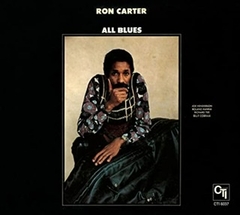 1973.
1973.
![]() Mary Lou Williams, fourth track on "Free Spirits,"
Mary Lou Williams, fourth track on "Free Spirits,"  recorded 1975.
recorded 1975.
![]() Ray Bryant, second track on "All Blues,"
Ray Bryant, second track on "All Blues,"  1978.
1978.
![]() Rachel Gould and Chet Baker album, first track on "All Blues,"
Rachel Gould and Chet Baker album, first track on "All Blues,"  1979.
1979.
![]() Freddie Hubbard, third track on
Freddie Hubbard, third track on 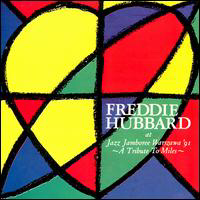 Freddie Hubbard: Live at the Warsaw Jamboree Jazz Festival 1991 - "A Tribute to Miles,"
Freddie Hubbard: Live at the Warsaw Jamboree Jazz Festival 1991 - "A Tribute to Miles," 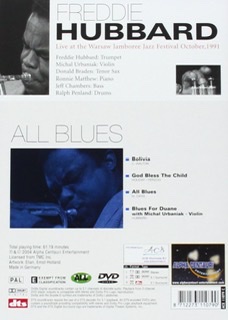 October 1991.
October 1991.
![]() GRP All-Star Big band, third track on "All Blues,"
GRP All-Star Big band, third track on "All Blues,"  January 1, 1995.
January 1, 1995.
![]() Dick Griffin, fourth track on "All Blues,"
Dick Griffin, fourth track on "All Blues," 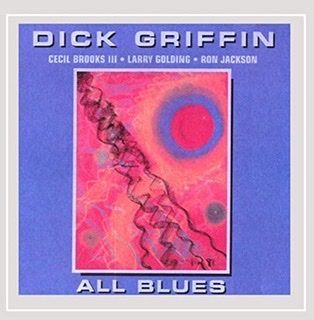 January 1, 2003.
January 1, 2003.
![]() Frank Morgan, fourth track on "City Nights: Live at the Jazz Standard,"
Frank Morgan, fourth track on "City Nights: Live at the Jazz Standard," 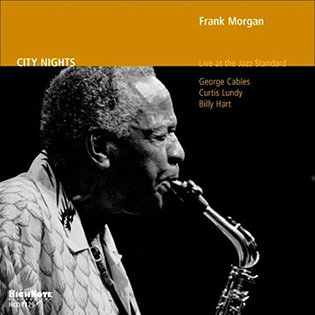 recorded 2003.
recorded 2003.
![]() Kenny Burrell, ninth track on 75Th Birthday Bash Live! (Live),
Kenny Burrell, ninth track on 75Th Birthday Bash Live! (Live), 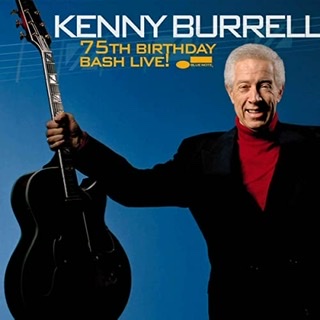 January 1, 2007.
January 1, 2007.
![]() Jay Sewall, second track on "All Blues,"
Jay Sewall, second track on "All Blues,"  May 1, 2009.
May 1, 2009.
![]() Peter Frampton band featuring Larry Carlton, track six on the album "All Blues,"
Peter Frampton band featuring Larry Carlton, track six on the album "All Blues,"  June 7, 2019.
June 7, 2019.
![]() Chick Corea, "Trilogy 2,"
Chick Corea, "Trilogy 2," 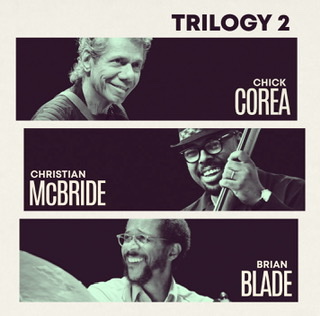 August 14, 2019.
August 14, 2019.
If jazz is so dead, why is everybody and their brother (and sisters) still playing and reinterpreting this song over the last sixty years?
Jazz musician Greg Tivis (b. 1960) has another reason to believe jazz isn't dead at this time. It is because the Great American Songbook has songs remaining popular with an American audience.
“The songs of the Great American Songbook are classics for all time, and everyone from young to old loves them. The popularity of jazz records my rise and fall, and there may be challenges that we the musicians will have to meet to get the music to the audience. But the audience is out there, and jazz is far from dead.”[49] (bold not in original)
CONCLUSION: Jazz still has an active following in the music community so is still alive.
Jazz is not dead yet[edit]
In his article for CNN Entertainment, John Blake, "When Jazz Stopped Being Cool," gives three theories why rock and other forms of music eclipsed jazz. Blake is factually correct that rock and other music vastly outsells jazz. If we want to say rock eclipsed jazz, then no one should disagree. It does not follow from being eclipsed, though, that this means that the eclipsed has died. PoJ.fm inserts commentary below interspersed between Blake's presentation of his three theories.
“It lost out to the accountants: If it doesn’t make dollars, it doesn’t make sense. That business adage doomed jazz artists because they couldn’t sell records like rock groups could, some say. Consider one of the most popular jazz albums of all time: Dave Brubeck Quartet’s “Time Out.” It’s musically daring, features superb musicianship, and yielded a monster hit that became a jazz standard: “Take Five.” It could be considered the perfect jazz record. Yet how many copies do you think were sold? By 1963, four years after its release, “Time Out” had gone gold, selling 500,000 records. Not bad—but rock groups came on the scene and sold records in the millions. The biggest rock groups sold so many that the industry had to create a new category—platinum, to mark a million sales. Record executives were no longer content to keep prestigious jazz artists on their labels if they just had middling sales.”[50] (bold not in original)
When something still makes money and is supported by the music industry, then it cannot be dead, only diminished at worst. Jazz remains popular with music students in college interested and musically invested in learning how to play it. If music students still wish to learn to play jazz, then it cannot be dead. Click on the list of the many famous contemporary jazz musicians who are alumni of the Jazz Studies and Performance programs from William Paterson University in New Jersey.
“It lost the booty: When jazz trumpeter Nicholas Payton wrote a famous essay about the demise of jazz, “On Why Jazz Isn’t Cool Anymore,” he made a curious declaration: “I create music for the heart and the head, for the beauty and the booty.” When, however, was the last time anyone associated shaking their booty to jazz music? Probably not since the swing and big band era of the 1930s and ‘40s, when people actually danced to jazz. They also sang along to jazz tunes. Vocal standards like “Summertime,” “Alone Together,” and “Days of Wine and Roses” were written for Broadway or Hollywood. Jazz offered accessible melodies that anyone could hum along to. Then bebop came along after World War II and fans had trouble keeping up. Titans like trumpeter Dizzy Gillespie and saxophonist Charlie “Bird” Parker played music that was hyper-fast and fiendishly complex. The focus was on the virtuoso soloist – not a catchy melody. People stopped singing and dancing to jazz; bebop supplanted the booty. “Bebop found a home in the nightclub and eventually on the concert stage,” DeVeaux says. “In both of these venues, there isn’t room for dancing. It’s understood that the music is there to be listened to.” Jazz also became more esoteric, its leaders becoming self-indulgent and playing primarily for themselves. If you were too square to follow, too bad. So when trumpeter Miles Davis started turning his back to the audience while performing live, it symbolized what jazz had already done—it tuned out its audience. “Jazz separated itself from American popular music. Big mistake. The music never recovered,” Payton wrote.”[51] (bold not in original)
Jazz was the most popular in the United States when people would dance to it while listening to big bands swinging away in the 1930s and first half of the 1940s. In the 21st century, people still buy jazz, attend jazz festivals, and even go to bars and clubs to listen to it live. Contemporary musicians came up as beginners learning how to play in the jazz tradition. Modern players even if their music is not straight-ahead jazz can be found with significant jazzy aspects to be found in their new music, such as drummer Mark Guiliana's tune, "Girl." Click on "Girl" to see and hear the video made for the tune with its trippy drumming, or click here on NPR to see and hear a live version of "Girl" starting from around 12:58 until they end the song at 18:10. Virtually no previous (jazz) musicians could ever have sonically reproduced this tune because of all of the cutting-edge technology employed during its performance by all four musicians: multiple electronic keyboards and synthesizers, drum pad, and filters for the electric bass. Therefore, jazz is not dead because it is still influencing how musicians compose and perform new music.
Since 1945 jazz moved away from being primarily a dance music to more of an art and listening medium. Still, soul jazz and especially Latin Jazz, are easily danceable so these sub-genres of jazz have not 'lost the booty' because the booty can still dance to them. In Guiliana's video for "Girl" the girl is dancing to the music so booty there, baby! Lastly, it is a myth that no one can dance to modern jazz. For a refutation and example videos of dancers jiving to jazz, see the New York Jazz Workshop's website article "Is jazz danceable?".
Miles Davis did not turn his back to an audience because he was arrogant or that he wished to separate his music from what audiences found appealing in popular music. He did it to focus on listening to his bandmates and making sure that their musical performance was excellent, as reported by Miles's biographer Quincy Troupe (b. 1939). Troupe tells us in Miles's biography that he could more easily signal his bandmates when and what to play. Being "a man of few words," he typically did not talk to the audience, or even announce song titles. He let the music speak for itself.
Miles Davis several times explained about his lack of interaction with the audience and it was not because he wanted to turn his back on popular music.
“Nobody ever asks classical orchestra conductors why they have their backs to the audience. The reason is that they're telling the orchestra what to play and when. You don't criticise them for doing it, so why do you criticise me for doing the very same thing?"[52]
The claim that Miles avoided popular music is inaccurate since under the influence of his then-wife, Betty (Mabry) Davis, he listened to Sly and the Family Stone, Jimi Hendrix, and James Brown.[53] In later years his band often featured the tunes "Human Nature" by Michael Jackson and Cyndi Lauper's "Time After Time." He could make audiences weep with how movingly beautiful he could play the trumpet on Lauper's tune.
“It lost the future: Here’s a depressing fact for jazz fans: One of the best-selling jazz records today was made in 1959. Davis’ “Kind of Blue” still sells a thousand copies a week on vinyl. The persistent popularity of “Kind of Blue” points to a problem with the contemporary jazz genre: Too many people buy the old records; not enough buy the new. According to Nielsen’s 2014 year-end report, jazz is the least listened-to music in the U.S. after children’s music, the online magazine The Jazz Line reported. Online music streaming isn’t helping jazz either. According to the magazine, jazz was the only genre to have its digital album sales fall between 2011 and 2012.”[54] (paragraphs integrated; bold not in original)
Here in the 21st century, drummer Mark Guiliana (b. 1980) has been voted best jazz drummer (2017) and collaborated with many major performers and groups at least some of whom are considered jazz musicians. He has played music with Avishai Cohen’s (b. 1970) band since 2003 and appeared on stages including the Blue Note Jazz Club in New York's Greenwich Village and in Tokyo, the Standard bank Joy of Jazz Festival in the largest city in South Africa 🇿🇦 Johannesburg, the North Sea Jazz Festival in Holland, so he might just be playing jazz![55]
Additionally, Guiliana has a unit that he records under with the name of "Mark Guiliana's Jazz Quartet." 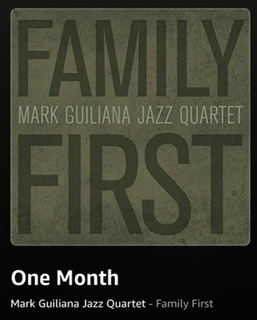
To prove the point, Guiliana claims he is always influenced by his jazz training when he says, “You know, every time I sit down it's jazz whether it is or not.” (Click on quotation for source.)
His dynamic interaction with the musicians listed in the following quotation using jazz drumming techniques proves jazz is still alive and functioning in the contemporary music world. At the least we have the drumming techniques by Guiliana inspired by his jazz training.
“Guiliana was chosen as Best Jazz Drummer in the Modern Drummer Readers Poll 2017, while DownBeat dubbed him a Rising Star in its Critics Poll. JazzTimes aptly proclaimed: “Guiliana, a technical master with a rare sense of musicality, has over the past decade become one of the most influential drummers of his generation.” Along with leading his own groups—the acoustic Mark Guiliana Jazz Quartet and electronica-minded Beat Music—the drummer has appeared on a string of acclaimed recordings with others. The verve and precision of Guiliana’s drumming was a primer mover of "Blackstar," David Bowie’s multiple Grammy Award-winning final album. Guiliana teamed with keyboardist Brad Mehldau as the duo Mehliana for the Nonesuch release "Taming the Dragon," and he has also collaborated with such artists as saxophonist Donny McCaslin, guitar hero John Scofield, Soundgarden/Pearl Jam drummer-songwriter Matt Cameron, neo-soul singer-songwriter Meshell Ndegeocello, guitarist-vocalist Lionel Loueke, jazz bassist Avishai Cohen, reggae/hip-hop artist Matisyahu and jazz singer Gretchen Parlato.[56] (bold not in original)
Live/Recorded Streaming: Jazz is not dead yet in 2020[edit]
Lee Mergner is JazzTimes's Contributing Editor who served the magazine in a multitude of roles between 1990 and 2018, including Editor and Publisher and he reports on his week of live streaming jazz from November 2020.
-
 Lee Mergner, "Jazz Is Alive Online, or My Week of Listening Virtually: Day One, reports on the first day of seven in his immersion into online jazz performances in November 2020, published November 13, 2020. Mergner audiences (1) Harry Allen (tenor saxophone) Trio at Smalls Jazz, (2) John Pizzarelli (guitar) with "It’s 5 O’Clock Somewhere: A Musical Social from a Distance," (3) Eric Alexander (tenor saxophone) with David Hazeltine (piano) Jazz Forum at Home, and (4) tablaist Zakir Hussain with guests drummers Mickey Hart & Rakesh Chaurasia for SFJAZZ.
Lee Mergner, "Jazz Is Alive Online, or My Week of Listening Virtually: Day One, reports on the first day of seven in his immersion into online jazz performances in November 2020, published November 13, 2020. Mergner audiences (1) Harry Allen (tenor saxophone) Trio at Smalls Jazz, (2) John Pizzarelli (guitar) with "It’s 5 O’Clock Somewhere: A Musical Social from a Distance," (3) Eric Alexander (tenor saxophone) with David Hazeltine (piano) Jazz Forum at Home, and (4) tablaist Zakir Hussain with guests drummers Mickey Hart & Rakesh Chaurasia for SFJAZZ.
-
 Lee Mergner, "Jazz Is Alive Online, or My Week of Listening Virtually: Day Two, reports on the second day of seven in his immersion into online jazz performances in November 2020, published November 15, 2020; updated December 7, 2020. Mergner audiences (1) Paolo Fresu (trumpeter/flugelhornist) & Daniele di Bonaventura (bandoneonist) for the Italian Culture Institute of Washington, (2) Imani-Grace Cooper (singer and songwriter) at An Die Musik (live streaming of classical, jazz, and world music), (3) Daniela Soledade (Brazilian singer of Bossa Nova) and Nate Najar (accompaning guitarist) for Love & Bossa Nova, (4) Sons of Kemet (new wave of jazz from Great Britain) has Shabaka Hutchins on saxophone and Theon Cross on tuba at SFJAZZ Fridays at Five, (5) Renee Rosnes (piano) Quartet at the Village Vanguard.
Lee Mergner, "Jazz Is Alive Online, or My Week of Listening Virtually: Day Two, reports on the second day of seven in his immersion into online jazz performances in November 2020, published November 15, 2020; updated December 7, 2020. Mergner audiences (1) Paolo Fresu (trumpeter/flugelhornist) & Daniele di Bonaventura (bandoneonist) for the Italian Culture Institute of Washington, (2) Imani-Grace Cooper (singer and songwriter) at An Die Musik (live streaming of classical, jazz, and world music), (3) Daniela Soledade (Brazilian singer of Bossa Nova) and Nate Najar (accompaning guitarist) for Love & Bossa Nova, (4) Sons of Kemet (new wave of jazz from Great Britain) has Shabaka Hutchins on saxophone and Theon Cross on tuba at SFJAZZ Fridays at Five, (5) Renee Rosnes (piano) Quartet at the Village Vanguard.
-
 Lee Mergner, "Jazz Is Alive Online, or My Week of Listening Virtually: Day Three, reports on the third day of seven in his immersion into online jazz performances in November 2020, published November 16, 2020. Mergner audiences (1) a conversation with Brandee Younger, (2) The Big Blind at the Kurt Elling Cocktail Hour, (3) pianist Ethan Iverson & Thomas Morgan at Mezzrow, (4) keyboardist Patrice Rushen & Billy Childs in Duos & Duets for the Carr Center, (5) Veronica Swift with the Joe Farnsworth Trio at Smoke Jazz Club, (6) Live from Rudy Van Gelder’s Studio: Joe Lovano, Ron Carter, Isaiah Thompson, and Kenny Washington, (7) The first lady of song (Ella Fitzgerald) at Jazz at Lincoln Center, hosted by Harry Connick, Jr. with singers Camille Thurman, Marilyn Maye, Diana Krall, Renée Fleming, Audra McDonald, Roberta Gambarini (in a duet with singer, not drummer, Kenny Washington), and Cécile McLorin Salvant, (8) Saturday Night with bassist Marcus Miller & Friends featuring guitarist George Benson & organist Joey DeFrancesco.
Lee Mergner, "Jazz Is Alive Online, or My Week of Listening Virtually: Day Three, reports on the third day of seven in his immersion into online jazz performances in November 2020, published November 16, 2020. Mergner audiences (1) a conversation with Brandee Younger, (2) The Big Blind at the Kurt Elling Cocktail Hour, (3) pianist Ethan Iverson & Thomas Morgan at Mezzrow, (4) keyboardist Patrice Rushen & Billy Childs in Duos & Duets for the Carr Center, (5) Veronica Swift with the Joe Farnsworth Trio at Smoke Jazz Club, (6) Live from Rudy Van Gelder’s Studio: Joe Lovano, Ron Carter, Isaiah Thompson, and Kenny Washington, (7) The first lady of song (Ella Fitzgerald) at Jazz at Lincoln Center, hosted by Harry Connick, Jr. with singers Camille Thurman, Marilyn Maye, Diana Krall, Renée Fleming, Audra McDonald, Roberta Gambarini (in a duet with singer, not drummer, Kenny Washington), and Cécile McLorin Salvant, (8) Saturday Night with bassist Marcus Miller & Friends featuring guitarist George Benson & organist Joey DeFrancesco.
-
 Lee Mergner, "Jazz Is Alive Online, or My Week of Listening Virtually: Day Four, reports on the fourth day of seven in his immersion into online jazz performances in November 2020, published November 13, 2020. Mergner audiences (1) Diane Schuur, Carmen Lundy, and Yuko Mabuchi at Palm Springs Women’s Jazz Festival, (2) Ted Rosenthal Trio for Live from Ted’s Place, (3) vocalist Maysa with Kitchen Karaoke Sundays.
Lee Mergner, "Jazz Is Alive Online, or My Week of Listening Virtually: Day Four, reports on the fourth day of seven in his immersion into online jazz performances in November 2020, published November 13, 2020. Mergner audiences (1) Diane Schuur, Carmen Lundy, and Yuko Mabuchi at Palm Springs Women’s Jazz Festival, (2) Ted Rosenthal Trio for Live from Ted’s Place, (3) vocalist Maysa with Kitchen Karaoke Sundays.
-
 Lee Mergner, "Jazz Is Alive Online, or My Week of Listening Virtually: Day Five, reports on the fifth day of seven in his immersion into online jazz performances in November 2020, published November 13, 2020. Mergner audiences (1) guitarist Anthony Wilson Quartet at Athenaeum Music & Arts Library, (2) pianist Emmet Cohen Trio with Live from Emmet’s Place, (3) John Hanrahan Quartet, with Hanrahan (drums), Andrew Dixon (tenor sax), Javier Santiago (piano), and Reed Mathis (electric bass), celebrating the late jazz piano great McCoy Tyner’s 1967 Blue Note album "The Real McCoy."
Lee Mergner, "Jazz Is Alive Online, or My Week of Listening Virtually: Day Five, reports on the fifth day of seven in his immersion into online jazz performances in November 2020, published November 13, 2020. Mergner audiences (1) guitarist Anthony Wilson Quartet at Athenaeum Music & Arts Library, (2) pianist Emmet Cohen Trio with Live from Emmet’s Place, (3) John Hanrahan Quartet, with Hanrahan (drums), Andrew Dixon (tenor sax), Javier Santiago (piano), and Reed Mathis (electric bass), celebrating the late jazz piano great McCoy Tyner’s 1967 Blue Note album "The Real McCoy."
-
 Lee Mergner, "Jazz Is Alive Online, or My Week of Listening Virtually: Day Six, reports on the sixth day of seven in his immersion into online jazz performances in November 2020, published November 13, 2020. Mergner audiences (1) guitarist Dan Wilson Trio for DTC Live at the AV Club, (2) singer Jazzmeia Horn & pianist Keith Brown and the Virgin Island Jazz Collective for the National Jazz Museum in Harlem.
Lee Mergner, "Jazz Is Alive Online, or My Week of Listening Virtually: Day Six, reports on the sixth day of seven in his immersion into online jazz performances in November 2020, published November 13, 2020. Mergner audiences (1) guitarist Dan Wilson Trio for DTC Live at the AV Club, (2) singer Jazzmeia Horn & pianist Keith Brown and the Virgin Island Jazz Collective for the National Jazz Museum in Harlem.
-
 Lee Mergner, "Jazz Is Alive Online, or My Week of Listening Virtually: Day Seven, reports on the seventh day of seven in his immersion into online jazz performances in November 2020, published November 13, 2020. Mergner audiences (1) reedman Adrian Cunningham for Jazz Interludes from Vail Jazz, (2) vocalist Sheila Jordan 92nd Birthday Celebration at Smalls with pianist Alan Broadbent and double bassist Harvie S, (3) bassist Nicki Parrott interviewed by bassist John Clayton for Jazz Cruise Conversations Live.
Lee Mergner, "Jazz Is Alive Online, or My Week of Listening Virtually: Day Seven, reports on the seventh day of seven in his immersion into online jazz performances in November 2020, published November 13, 2020. Mergner audiences (1) reedman Adrian Cunningham for Jazz Interludes from Vail Jazz, (2) vocalist Sheila Jordan 92nd Birthday Celebration at Smalls with pianist Alan Broadbent and double bassist Harvie S, (3) bassist Nicki Parrott interviewed by bassist John Clayton for Jazz Cruise Conversations Live.
What is learned in a jazz instructional setting?[edit]
➢ What is meant by jazz techniques?
One way to conceive an answer to the question is to research what publishers of learning to play jazz books have included in their learning jazz manuals. At the JazzFuel website they list twenty-five useful jazz instructional manuals. There are quite a few things that jazz instruction may include such as learning about scales and modes, especially major chords, dominant seventh chords and sus chords, dominant alterations and extensions, flat nine chords, flat 13 chords, augmented dominant chords, altered dominants, Lydian dominant chords, minor six and minor/major seventh chords, half diminished chords, and diminished chords. See JazzFuel.com's "A Guide to Scales and Chords in Jazz." Other technical matters relating to jazz performance include developing one's instrumental technique, transcribing jazz solos, learn jazz standards, learn vocabulary or ‘licks,’ learn to play the blues, reading about jazz musicians and jazz history, listen to the jazz greats and apply to improvising, find a great teacher, learn how to accompany, play with other jazz students, learn jazz piano, and work on composing.
Another piece of evidence is to consider what music courses include on their syllabi at high schools, colleges and universities. Here is a sample of what is a course of study for budding jazz musicians at Community High Jazz in Ann Arbor, MI:
And the outstanding results achieved with several well received CDs 💿. You can listen to four tracks of the small group Unified Field Theory. Communuity High Jazz can boast they have ten jazz combos.
Here is what is on the syllabus for the Ann Arbor Community High School Intermediate Jazz program:
“Jazz Styles, Jazz Improvisation, History and Social Studies, Instrument-Specific Roles, Reading (Pitch and Rhythm Training), Critical Listening/Transcribing, Jazz Repertoire, Vocabulary for Improv, Ear Training, Technical Studies, Expressive Devices, and Performance Preparation.”[57]
- Wikipedia: 2000s in jazz provides a description of musicians labeled as jazz musicians who became prominent in the 2000s.
- Wikipedia: 2010s in jazz provides a description of musicians labeled as jazz musicians who became prominent in the 2010s.
Conclusions[edit]
➢ Which side makes a better case and why?
Here's drummer Max Roach addressing the question in a 1992 interview done by Bill King.
“Bill King: Some fear if jazz isn’t constantly moving forward it will stagnate and lose its purpose. Is this a legitimate fear?“Max Roach: No, I’ll tell you why. This music, contrary to the music of other cultures, is very fluid. Even though we have a Louis Armstrong, it doesn’t stop there; we have a Roy Eldridge, it doesn’t stop there; we have a Dizzy Gillespie, it doesn’t stop there; we have a Miles Davis, and it doesn’t stop there; we have a Wynton Marsalis. Every generation is allowed the luxury as long as they are within that continuum to add to what’s going on. The only difference between John Coltrane, Lester Young, and Coleman Hawkins is the individuality. They all approach it with the kind of virtuosity and creativeness with the continuum of the music itself. So, this is fluid, and it’s not the kind of musical culture that stands on ceremony.”[58] (bold not in original)
➢ What methodology should one adopt to determine best response to whether jazz can die?
One approach to the second question dictates that as a methodology, one should determine what dead means in its application to jazz as a music. Let's focus in on that now again.
Can jazz die?[edit]
Arguments concluding jazz CANNOT die[edit]
- I. JCNAD: Jazz cannot be alive 😎 or dead 💀.
- (JCNAD 1): Only things that are living biological organisms can die.
- (JCNAD 2): Jazz is not a living biological organism.
- ___________________________________________________________________________
- Therefore, (JCNAD-C): Jazz cannot die (since it was never alive as a biological organism).
- II. MCND: Music 🎶 cannot die 💀.
- (MCND 1): Jazz is music.
- (MCND 2): Music is sounds and silences.
- (MCND 3): Sounds and silences cannot die.
- ___________________________________________________________________________
- Therefore, (MCND-C): Jazz cannot die .
Evaluating the JCNAD argument[edit]
The argument does not work for at least two reasons. One, something can die in the sense of not existing anymore, even if not a biological entity. Two, non-biological entities can be alive (see above at "Counter-examples of non-biological beings who could be alive"), so the first premise (JCNAD 1) in the argument is false.
Evaluating the MCND argument[edit]
Sounds and silences can begin and end. Before they start, there was not that sound or silence. It did not yet exist until it starts. Sounds or silences, once begun, can cease to be. In this sense of no longer existing, this can indeed happen to sounds or silences. Silence can end because of a sound and vice-versa. Not existing or ceasing to exist are ways in which competent language users of English have applied the idea of dying to something. The sentence, "The alarm bell slowly died off," has been said and meant to assert that the noise from the alarm had a gradual reduction in volume until it ceased sounding altogether. Therefore, sounds can die—meaning they cease to exist thereby proving that (MCND 3) is false.
➢ Can jazz die in this cease-to-exist sense?
Yes, the sounds of jazz can cease flying through the air. This is not what Nicholas Payton meant when he said jazz is dead. He meant jazz as a genre either never existed in the first place or that now, since 1959, it is passé, and no one plays it anymore who is hip.
Reasons why jazz CAN die[edit]
If death means ceasing to exist, then jazz perhaps could die in this sense so let's explore that idea.
Suppose that a large enough meteorite hits the Earth incinerating everything on the surface. Now there are no more people, no more recordings, no paper musical scores, and nothing left on the Earth. If you think a meteorite is insufficient, then wait until the expansion of the Sun completely engulfs and removes the Earth as a planet from the solar system in 7.6 billion years from now (or maybe not). And that's just the good part. Long before the sun (possibly) engulphs the Earth, all plant and animal life ceases in 600 million years because of changing carbon dioxide levels in the atmosphere, and it just gets worse from there:
“In about 600 million years from now, the level of carbon dioxide will fall below the level needed to sustain C3 carbon fixation photosynthesis used by trees. Some plants use the C4 carbon fixation method, allowing them to persist at carbon dioxide concentrations as low as 10 parts per million. However, the long-term trend is for plant life to die off altogether. The extinction of plants will be the demise of almost all animal life since plants are the base of the food chain on Earth.
In about one billion years, the solar luminosity will be 10% higher than at present. This will cause the atmosphere to become a "moist greenhouse", resulting in a runaway evaporation of the oceans. As a likely consequence, plate tectonics will come to an end, and with them the entire carbon cycle. Following this event, in about 2–3 billion years, the planet's magnetic dynamo may cease, causing the magnetosphere to decay and leading to an accelerated loss of volatiles from the outer atmosphere. Four billion years from now, the increase in the Earth's surface temperature will cause a runaway greenhouse effect, heating the surface enough to melt it. By that point, all life on the Earth will be extinct. The most probable fate of the planet is absorption by the Sun in about 7.5 billion years, after the star has entered the red giant phase and expanded beyond the planet's current orbit.”[59] (bold and bold italic not in original)
➢ Is there anything left that would still be a representation of jazz music and the history of jazz?
The answer to this question of jazz's survival is that radio waves and jazz on the television have been projecting into the vast void of outer space with radio starting in earnest by the 1920s and television hitting its stride in the 1950s in America and the United Kingdom. These electro-magnetic representations of jazz in both sound and pictures still exist in outer space 🪐 after the complete elimination of the planet Earth from existence. Other civilizations besides Earthlings could tune in to this energy and these aliens would be seeing and listening to jazz on the radio and watching it on television. If these aliens are bopping along to Charlie Parker's tune "Confirmation," then we can confirm that jazz still exists even after all evidence on Earth has been incinerated. Indeed, given the relative indestructibility of electromagnetic radiation as it propagates through empty space over time the only thing that could eliminate jazz would be the destruction and non-existence of the entire universe, or at the very least, eliminate that part of the universe within the light cone of Earth for all past evidence of the existence of jazz to disappear.
Even then a supernatural being such as God who cannot be destroyed by definition would know that jazz existed and therefore jazz would still exist in this being's mind and he has an excellent memory this guy.
Electromagnetic radiation is likely good for traveling through outer space for at least 10 to 16 billlion light years. However, given that the universe is at least 13 billion years old it may well be that degradation and extinction of the photons in any electromagnetic transmission can occur. The signals become weaker and more diffuse and harder to pick up and read.
BBC News Magazine reports in their 2008 article "Can our TV signals be picked up on other planets?," (last updated August 6, 2008) that transmissions are only out 50 to 70 light years from Earth and diffusing and getting weaker as they propagate further into outer space.
- “But ordinary television and radio broadcasts can also travel out of Earth's atmosphere and through space, albeit quickly becoming mind-bogglingly diffuse and hard to pick up. Space scientist Dr Chris Davis, of the Rutherford Appleton Laboratory, says it is possible that television and radio signals from Earth could be picked up on other planets, but it isn't easy. Some radiowaves, such as those of a short-wave frequency, bounce back off the ionosphere and are therefore poor candidates to be picked up in space. But waves like FM radio or television signals can pierce it and travel through the vacuum of space at the speed of light. . . . As you go into space that power would dissipate. They would need more and more sensitive equipment to pick it up. . . . Of course, no one more than about 50–70 light years away will have yet heard from us, but I figure that our earliest broadcasts are washing over about one new star system each day. So the potential audience is growing."”
“The low density of matter in outer space means that electromagnetic radiation can travel great distances without being scattered: the mean free path of a photon in intergalactic space is about 1023 km, or 10 billion light years. In spite of this, extinction, which is the absorption and scattering of photons by dust and gas, is an important factor in galactic and intergalactic astronomy.”[60]
It is even more complicated than this because of red shifting making the light from any galaxy eventually becoming invisible.
“Though, in principle, more galaxies will become observable in the future, in practice, an increasing number of galaxies will become extremely redshifted due to ongoing expansion; so much so that they will seem to disappear from view and become invisible. An additional subtlety is that a galaxy at a given comoving distance is defined to lie within the "observable universe" if we can receive signals emitted by the galaxy at any age in its past history (say, a signal sent from the galaxy only 500 million years after the Big Bang), but because of the universe's expansion, there may be some later age at which a signal sent from the same galaxy can never reach the Earth at any point in the infinite future (so, for example, we might never see what the galaxy looked like 10 billion years after the Big Bang), even though it remains at the same comoving distance (comoving distance is defined to be constant with time—unlike proper distance, which is used to define recession velocity due to the expansion of space), which is less than the comoving radius of the observable universe. This fact can be used to define a type of cosmic event horizon whose distance from the Earth changes over time. For example, the current distance to this horizon is about 16 billion light-years, meaning that a signal from an event happening at present can eventually reach the Earth in the future if the event is less than 16 billion light-years away, but the signal will never reach the Earth if the event is more than 16 billion light-years away.”[61] (bold not in original)
This is a reciprocal relationship so that if the alien galaxy is more than 16 billion light years away they could never observe any jazz in the electromagnetic energy coming from Earth.
Conclusions whether jazz can die[edit]
Summary of Evaluations[edit]
(S0) People are interested in the topic of whether or not jazz is dead as shown at PoJ.fm's authors assess the death of jazz and musician's reveal interest in topic of jazz's death.
(S1) Reasons why jazz could be dead are considered at PoJ.fm's Evaluating why jazz is dead could be true.
(S2) Jazz music was created, performed, innovated, and recorded as well as enjoyed by millions around the world during all decades since 1959 up to the present day as shown at PoJ.fm's Reasons why jazz did not die in 1959.
(S3) Even Nicholas Payton backtracked on his claims that jazz is dead! He now agrees that:
- (1) Jazz is not dead.
- (2) There is still music and musicians playing jazz today, so jazz exists now and never died in 1959.
- (3) He recognizes that he cannot get rid of the word "jazz" as a label for a style of music, whether he wants to or not.
- (4) It is both unnecessary to try to get rid of the usage of the word "jazz," and that it would be unrealistic to try to do so.
- (5) Most of the music that is currently called jazz IS jazz.
- (6) Payton agrees that he respects jazz musicians labeled as such: “ . . . if people want to call what they do jazz and whatever comes along with that, I respect that. I’m not trying to change that. Because that deserves to be here, too.” (bold and bold italic not in original)
You can read his comments above at PoJ.fm's Nicholas Payton walks back his comments on the death of jazz.
(S4) There are many different usages and meanings for the word "death" some of which do not and cannot apply to jazz and some that might apply as explored at PoJ.fm's Definitions for dead and Types of death and relationships to jazz.
(S5) Reasons are given justifying that jazz can be a style of music at PoJ.fm's Evaluating why jazz is dead is false.
(S6) Seven problems with jazz being dead are given.
(S7) Evidence is given that musician's such as Mark Guiliana are still playing jazz in the 21st century.
(S8) Two arguments are presented and shown to be flawed at PoJ.fm's Can jazz die?.
(S9) Reasons are offered to prove that jazz can die.
Internet Resources on jazz is dead[edit]

On the jazz is dead side[edit]
🅿 stands for "perished."
- 🅿 Theodore Roosevelt, "Ragtime Music Dead in this Town," New York Times, March 16, 1909.
- 🅿 Ben Hughes, “The Death of Jazz,” Esquire, August 9, 2007.
- 🅿 Seth Colter Walls, "Jazz Is Dead (Commercially). Long Live Jazz (Creatively), Newsweek, December 9, 2009, 68.
- 🅿 Nicholas Payton, "Why Jazz Isn't Cool Anymore, November 27, 2011.
- 🅿 Benjamin Schwarz, “The End of Jazz,” The Atlantic, November 15, 2012.
“But despite [Ted] Gioia’s ardency, there is no reason to believe that jazz can be a living, evolving art form decades after its major source—and the source that linked it to the main currents of popular culture and sentiment—has dried up. Jazz, like the Songbook, is a relic—and as such, in 2012 it cannot have, as Gioia wishes for it, an “expansive and adaptive repertoire.”[62] (bold not in original)
- 🅿 Scott Timberg, "Did the American songbook kill jazz?: Jazz has venerated its own traditions for so long that the music seems stale and the audience is gone. Now what?, Salon, December 24, 2012.
- 🅿 Alex Rawls, "Payton's Starting a Thunderclap," Myspiltmilk.com, March 12, 2013.
- 🅿 Robert Spencer, Jazz and Islam, Part 9, "How Miles Davis and John Coltrane Ruined Jazz," April 12, 2013.
- 🅿 John Blake, “When Jazz Stopped Being Cool,” CNN, September 26, 2016.
- 🅿 Alex Rawls, 'Jazz' is dead—call it something else. Do you agree?, NOLA.com, published April 26, 2017, updated July 7, 2021.
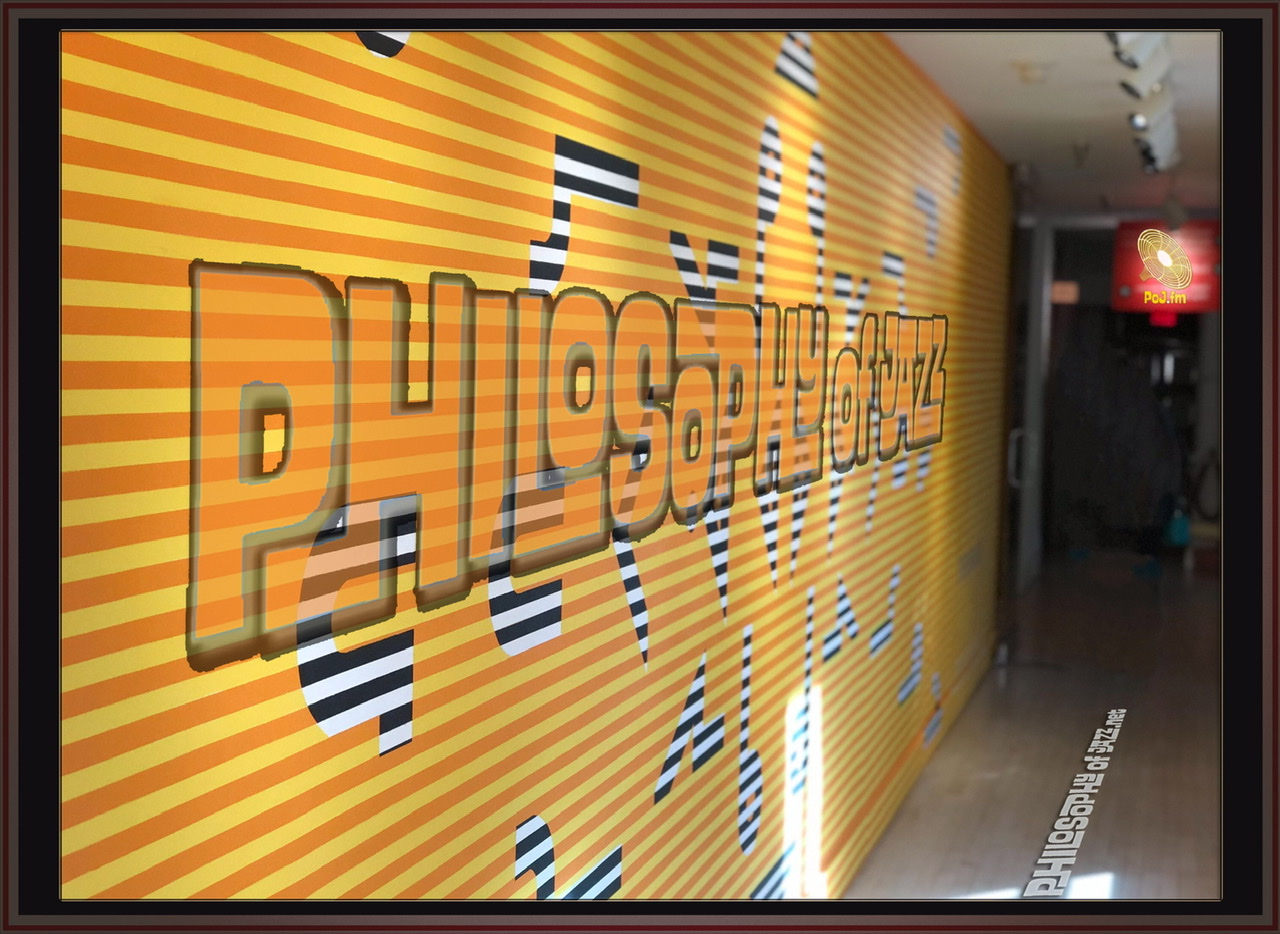
On the jazz is NOT dead side[edit]
-
 Greg Tivis, "Is Jazz Dead?," November 10, 2009.
Greg Tivis, "Is Jazz Dead?," November 10, 2009.
-
 Natalie Weiner, “Way Out West: How Flying Lotus, Kamasi Washington and Brainfeeder Are Bringing Jazz Back to the People,” Noisey music by Vice, July 29, 2015.
Natalie Weiner, “Way Out West: How Flying Lotus, Kamasi Washington and Brainfeeder Are Bringing Jazz Back to the People,” Noisey music by Vice, July 29, 2015.
-
 John Lewis, “The New Cool: How Kamasi, Kendrick and Co Gave Jazz a New Groove,” The Guardian, October 6, 2016.
John Lewis, “The New Cool: How Kamasi, Kendrick and Co Gave Jazz a New Groove,” The Guardian, October 6, 2016.
-
 Caleb Chapman, "Jazz is Dead!," The Syncopated Times, March 1, 2017.
Caleb Chapman, "Jazz is Dead!," The Syncopated Times, March 1, 2017.
-
 Josiah Boornazian
Josiah Boornazian  (saxophonist, composer, and Assistant Professor of Jazz and Applied Saxophone at the University of Texas Rio Grande Valley in 2017), "What's the true meaning behind jazz music?," LearnJazzStandards.com, March 1, 2017.
(saxophonist, composer, and Assistant Professor of Jazz and Applied Saxophone at the University of Texas Rio Grande Valley in 2017), "What's the true meaning behind jazz music?," LearnJazzStandards.com, March 1, 2017.
-
 Evan Haga, “What’s Behind the New Jazz Resurgence?,” Rolling Stone, July 31, 2018.
Evan Haga, “What’s Behind the New Jazz Resurgence?,” Rolling Stone, July 31, 2018.
-
 Gwen Ansell, "Jazz isn’t dead: it’s just moved to new venues," The Conversation, September 24, 2018.
Gwen Ansell, "Jazz isn’t dead: it’s just moved to new venues," The Conversation, September 24, 2018.
-
 Ethan Dodd, "Is Jazz Dead?," Yale Daily News, April 11, 2019.
Ethan Dodd, "Is Jazz Dead?," Yale Daily News, April 11, 2019.
-
 Randall Roberts, "Is jazz dead? Ask Roy Ayers, Azymuth, Adrian Younge and Ali Shaheed Muhammad," Los Angeles Times, March 26, 2020.
Randall Roberts, "Is jazz dead? Ask Roy Ayers, Azymuth, Adrian Younge and Ali Shaheed Muhammad," Los Angeles Times, March 26, 2020.
-
 John Young, "Ragtime has never died," Quora.com, update April 29, 2020.
John Young, "Ragtime has never died," Quora.com, update April 29, 2020.
-
 Monika Herzig (b. 1964), "What the World Needs Now is Jazz," Critical Studies in Improvisation, Vol. 14, Nos. 2–3, special double issue of Critical Studies in Improvisation / Études critiques en improvisation, “Volume II: Improvisation, Musical Communities, and the COVID-19 Pandemic,” published May 12, 2021.
Monika Herzig (b. 1964), "What the World Needs Now is Jazz," Critical Studies in Improvisation, Vol. 14, Nos. 2–3, special double issue of Critical Studies in Improvisation / Études critiques en improvisation, “Volume II: Improvisation, Musical Communities, and the COVID-19 Pandemic,” published May 12, 2021.
-
 David Ake, "After Wynton: Narrating Jazz in the Postneotraditional Era," in The Routledge Companion to Jazz Studies, edited by Nicholas Gebhardt, Nichole Rustin-Paschal, and Tony Whyton (New York: Routledge, 2005), chapter 8.
David Ake, "After Wynton: Narrating Jazz in the Postneotraditional Era," in The Routledge Companion to Jazz Studies, edited by Nicholas Gebhardt, Nichole Rustin-Paschal, and Tony Whyton (New York: Routledge, 2005), chapter 8.
-
“Despite certain assertions made in Europe, Asia, and elsewhere, jazz is not dying in the United States. Spend some time in most any city (or on most any college campus, for that matter) and you will hear remarkably vibrant, creative, contemporary jazz music.”[63] (bold not in original)
- David Ake (b. 1962) is composer, jazz pianist, Professor and Chair of the Department of Musicology at the University of Miami's Frost School of Music and an award-winning scholar and educator in the fields of jazz and popular music. His publications include the books Jazz/Not Jazz: The Music and Its Boundaries (University of California Press) 2012 with Daniel Goldmark and Charles Hiroshi Garrett, Jazz Matters: Sound, Place, and Time since Bebop (University of California Press) 2010, and Jazz Cultures (University of California Press) 2002.
CONCLUSION: Jazz is not dead until all of these 21st century musicians stop playing and performing it.
NOTES[edit]
- ↑ Making Jazz French: Music and Modern Life in Interwar Paris Cited in "Le jazz se demode-t-il?" Intransigeant, 3 November 1926 as quoted at footnote four of Jeffrey H. Jackson, Making Jazz French: Music and Modern Life in Interwar Paris (Durham & London: Duke University Press, 2003), 124. Jeffrey H. Jackson is J.J. McComb Professor of History at Rhodes College and Chair of the Department of History.
- ↑ Footnote five in Making Jazz French: Music and Modern Life in Interwar Paris, as quoted at footnote five of Jeffrey H. Jackson, Making Jazz French: Music and Modern Life in Interwar Paris (Durham & London: Duke University Press, 2003), 124.
- ↑ Harvard Law Review, "Jazz Has Got Copyright Law And That Ain't Good," April, 2005. (118 Harv. L. Rev. 1940).
- ↑ Gourav Biswas, "Jazz and Its Evolution," Academia.edu, 18.
- ↑ The Jazz Scene (Faber Finds), Eric Hobsbawm (originally published under the pseudonym Francis Newton).
- ↑ Philip Larkin, All What Jazz: A Record Diary, 1961–71 (London: Faber and Faber, 1985 edn.), 190. As quoted in "One of the most remarkable cultural phenomena of our century: Larkin, Hobsbawm and Amis on Jazz," in Fagge, Roger and Pillai, Nicolas, (eds.) New Jazz Conceptions: History, Theory, Practice, Warwick Series in the Humanities, (Abingdon, Oxford: Routledge, 2016). ISBN 9781848936096.
- ↑ Lee Jeske, "Contemporary Jazz," Cashbox, June 22, 1991, 11.
- ↑ Scott Timberg, "Did the American songbook kill jazz?: Jazz has venerated its own traditions for so long that the music seems stale and the audience is gone. Now what?," as quoted at Salon.com, December 24, 2012.
- ↑ The Clive Bell quotation is not found in Vogue magazine, but rather in footnote Y found in Bell's book, Since Cézanne. Clive Bell, XX. "Plus de Jazz," footnote Y, in Since Cézanne (London: Chatto and Windus, 1922), 135. The slightly fuller quotation reads as follows: “the Jazz movement [by which he means Ragtime], short and slightly irritating though it was, having served its turn and added its quota to the tradition. But Jazz is dead—or dying, at any rate—and the moment has come for someone who likes to fancy himself wider awake than his fellows to write its obituary notice.” Since Bell thought of jazz as Ragtime, and Ragtime stopped being a dominant musical movement by the early 1930s or before, Bell is likely correct that Jazz was dying. He did not envision jazz morphing from Ragtime into big bands and big bands into swing, and swing into Bebop, and Bebop into cool, modal, and soul jazz, and on and on.
- ↑ Ethan Dodd, "Is Jazz dead?," Yale Daily News, April 11, 2019.
- ↑ Ethan Dodd, "Is Jazz dead?," Yale Daily News, April 11, 2019.
- ↑ Thomas E. Larson, Modern Sounds: The Artistry of Contemporary Jazz, 2nd ed. (Dubuque, Iowa: Kendall Hunt Publishing Co., 2011), 226. Originally published in 2008.
- ↑ Jeff Winbush, "Whatever happened to Jazz music?," Quora.com, .
- ↑ ChatGPT3 (version January 9) answering the question "Describe jazz education in the United States and give examples of the jazz schools." Accessed January 25, 2023.
- ↑ ChatGPT3 (version January 9) answering the question "Give specific examples of how has jazz influenced contemporary music." Accessed January 25, 2023.
- ↑ German Wikipedia: Jazz Podium. Translated by Google translate. Accessed January 18, 2023.
- ↑ See also "Strange Fruit: The First Great Protest Song."
- ↑ Wikipedia contributors, "Tony Bennett," Wikipedia, The Free Encyclopedia, last revised November 27, 2022. Accessed December 3, 2022.
- ↑ Wikipedia: "Nostalgia."
- ↑ "Smooth Jazz Overview," AllMusic.com. Accessed December 20, 2022.
- ↑ Todd Lowry, Quora.com Answering "Do you like smooth jazz?". Accessed December 20, 2022.
- ↑ Marc Myers, "Who Killed Jazz and When?, JazzWax.com, May 30, 2008. Accessed December 25, 2022.
- ↑ Marc Myers, "Who Killed Jazz and When?, JazzWax.com, May 30, 2008. Accessed January 5, 2023.
- ↑ Marc Myers, "Who Killed Jazz and When?, JazzWax.com, May 30, 2008. Accessed January 5, 2023.
- ↑ Thomas E. Larson, Modern Sounds: The Artistry of Contemporary Jazz, 2nd ed. (Dubuque, Iowa: Kendall Hunt Publishing Co., 2011), 225–226. Originally published in 2008.
- ↑ "Jon Newey's review of Miles Davis's "Bitches Brew," JazzWise.com, September 10, 2019.
- ↑ Keith Shadwick (1951–2008), "100 Jazz Albums That Shook The World," Jazzwise magazine, January 21, 2021. Scroll down to #79.
- ↑ Roy Carr (1945–2018), "Jazz Albums That Shook The World," Jazzwise magazine, September 10, 2019.
- ↑ Wikipedia: Inner Mounting Flame, second paragraph.
- ↑ Liner Notes, The Mahavishnu Orchestra, live at the Berkeley Community Theatre (Berkeley, CA), November 9, 1972 at Wolfgang's music, Bill Graham Archives LLC, 2021.
- ↑ "10 of the greatest jazz groups, bands, orchestras," Birmingham Times, June 29, 2016.
- ↑ "10 of the greatest jazz groups, bands, orchestras," Birmingham Times, June 29, 2016.
- ↑ John Fordham, "The Best New Jazz Albums: Editor's of Jazzwise Choices, for April 2020, published March 20, 2020. A hand-picked selection of some of the best new releases and reissues reviewed in the April 2020 issue of Jazzwise.
- ↑ "Review of 'Breathe'," JazzTimes magazine, March 26, 2021.
- ↑ Scott Yanow, "The New Standard," AllMusic.com.
- ↑ Nicholas Payton, "On Why Jazz Isn't Cool Anymore," November 27, 2011.
- ↑ Wikipedia: Genre (Music). Accessed June 9, 2021.
- ↑ Nicholas Payton, "On Why Jazz Isn't Cool Anymore", November 27, 2011.
- ↑ “On All About Jazz, free lance music journalist Glenn Astarita (b. 1957) noted "Pink Elephant Magic" is the complete package as Joanne Brackeen proves beyond a doubt her significant value to the jazz community while some of jazz’s top performers assist in carving out an album that is positively, "magical".” (Quotation from Wikipedia: Pink Elephant Magic and see original article by Glenn Astarita, "Review of Joanne Brackeen: "Pink Elephant Magic", AllAboutJazz, May 1, 1999; bold not in original)
- ↑ Reviewer Scott Yanow (b. 1954) in his biography of Henderson observes that “Joe Henderson is proof that jazz can sell without watering down the music; it just takes creative marketing.” (bold not in original)
- ↑ Bruce Edwards, "Answer to "Is Jazz dead?," at Quora.com, updated July 14, 2019.
- ↑ Michelle Mercer, "How Norway Funds A Thriving Jazz Scene," A Blog Supreme by NPR jazz, April 6, 2013.
- ↑ Christa Bruckner-Haring, "Ein historischer Überblick der Jazzentwicklung in Österreich," Jazzforschung / Jazz Research 44 (2012), third paper.
- ↑ Wikipedia: Life, second paragraph.
- ↑ Wikipedia: Life, second paragraph.
- ↑ Webmaster Paul Przyborski, "Fire & Carbon Monoxide," NASA's Earth Observatory, The Earth Observatory is part of the EOS Project Science Office at NASA Goddard Space Flight Center.
- ↑ Wikipedia: Life: Viruses.
- ↑ "Sentient Star."
- ↑ Greg Tivis, "Is Jazz Dead?," November 10, 2009.
- ↑ John Blake, "When Jazz Stopped Being Cool," CNN Entertainment website, September 26, 2016.
- ↑ John Blake, "When Jazz Stopped Being Cool," CNN Entertainment website, September 26, 2016.
- ↑ Martin Smith, "Musical Revolutionary," in Socialist Review, Culture column section, February 2011, 355.
- ↑ “Even so, this was not enough for Davis, who grew fascinated by the music of James Brown, Jimi Hendrix and Sly Stone as the decade progressed.” as quoted in Bob Blumenthal, "Ch. 4 Freedom and fusion," under subheading "Switched-on Miles," in Jazz (Collins Need to Know?), HarperCollins E-book, section 2195 of 2905.
- ↑ John Blake, "When Jazz Stopped Being Cool," CNN Entertainment website, September 26, 2016.
- ↑ MaryAnn McFadden, "Among a Universe of Jazz Stars," in Pioneer Pride, Volume 10, Number 2 (Summer 2009), 22.
- ↑ About Mark Guiliana.
- ↑ Jack Wagner (CHS Jazz Program Director), Syllabi for Community High School Intermediate Jazz (Jazz II) Introduction, Policies, and Syllabus, Community High Jazz, Ann Arbor, MI.
- ↑ Bill King, "The Greatest Jazz Concert Ever—A 1992 Interview With Drummer Max Roach," FYIMusicNews, November 2, 2018.
- ↑ Wikipedia: Future of Earth, accessed July 5, 2021.
- ↑ Wikipedia: Outer space, under "Environment," first paragraph.
- ↑ Wikipedia: Observable universe, seventh paragraph.
- ↑ Benjamin Schwarz, “The End of Jazz,” The Atlantic, November 15, 2012, last paragraph.
- ↑ David Ake, "After Wynton: Narrating Jazz in the Postneotraditional Era," in The Routledge Companion to Jazz Studies, edited by Nicholas Gebhardt, Nichole Rustin-Paschal, and Tony Whyton (New York: Routledge, 2019), chapter 8.
</div>
